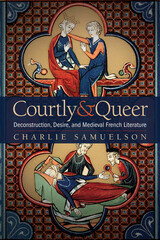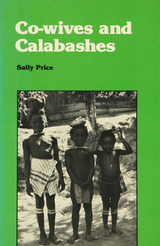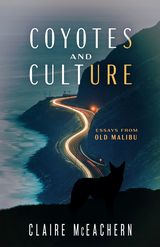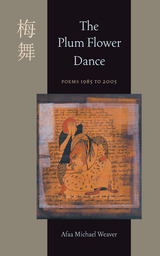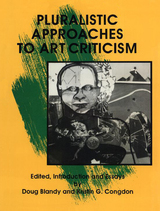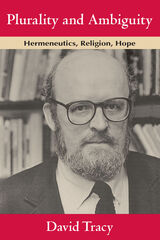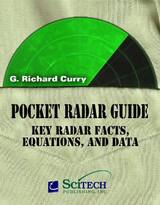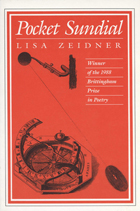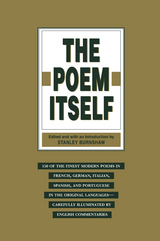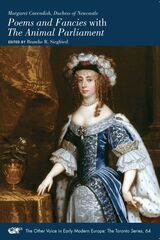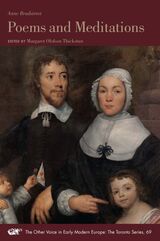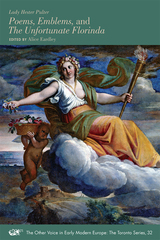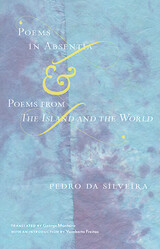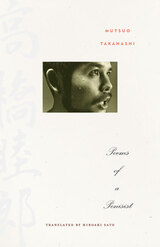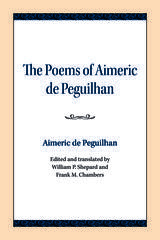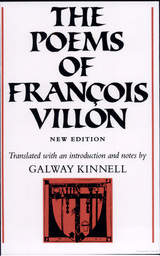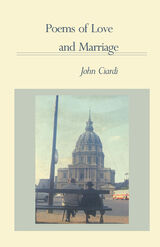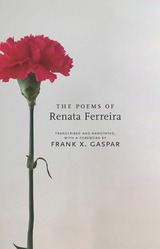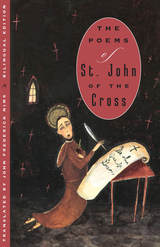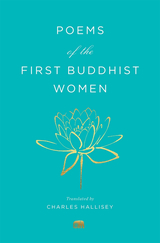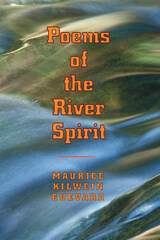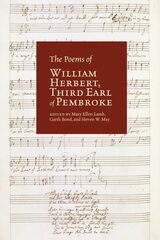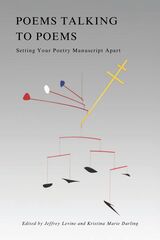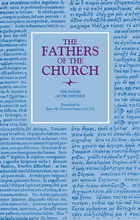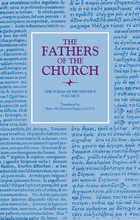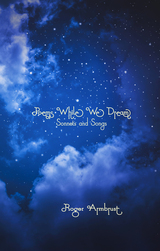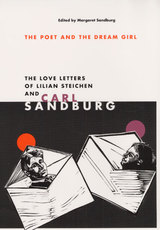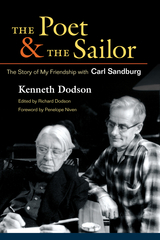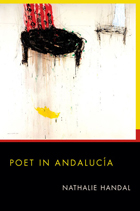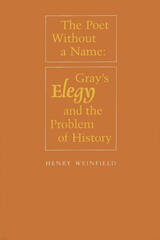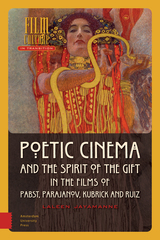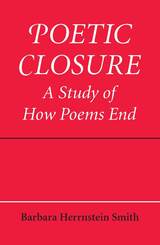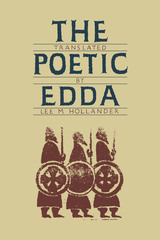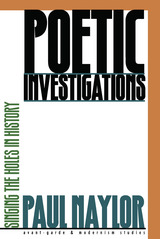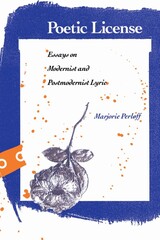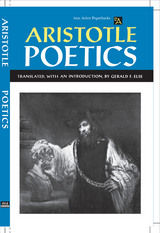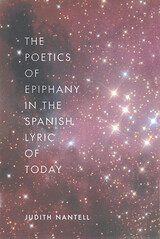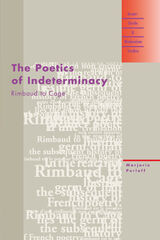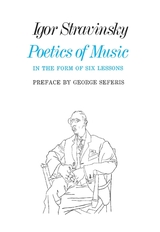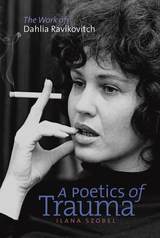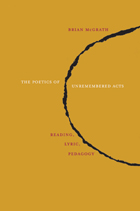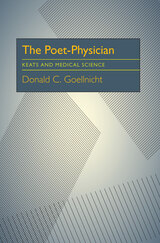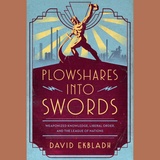 Plowshares into Swords: Weaponized Knowledge, Liberal Order, and the League of Nations
David Ekbladh
University of Chicago Press, 2022 This is an Auto-narrated audiobook version of this book. An in-depth look at how the ideas formulated by the interwar League of Nations shaped American thinking on the modern global order.
In Plowshares into Swords, David Ekbladh recaptures the power of knowledge and information developed between World War I and World War II by an international society of institutions and individuals committed to liberal international order and given focus by the League of Nations in Geneva. That information and analysis revolutionized critical debates in a world in crisis. In doing so, Ekbladh transforms conventional understandings of the United States’ postwar hegemony, showing that important elements of it were profoundly influenced by ideas that emerged from international exchanges. The League’s work was one part of a larger transnational movement that included the United States and which saw the emergence of concepts like national income, gross domestic product, and other attempts to define and improve the standards of living, as well as new approaches to old questions about the role of government. Forged as tools for peace these ideas were beaten into weapons as World War II threatened. Ekbladh recounts how, though the US had never been a member of the organization, vital parts of the League were rescued after the fall of France in 1940 and given asylum at the Institute for Advanced Study in Princeton. However, this presence in the US is just one reason its already well-regarded economic analyses and example were readily mobilized by influential American and international figures for an Allied “war of ideas,” plans for a postwar world, and even blueprints for the new United Nations. How did this body of information become so valuable? As Ekbladh makes clear, the answer is that information and analysis themselves became crucial currencies in global affairs: to sustain a modern, liberal global order, a steady stream of information about economics, politics, and society was, and remains, indispensable.
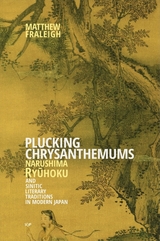 Plucking Chrysanthemums: Narushima Ryūhoku and Sinitic Literary Traditions in Modern Japan
Matthew Fraleigh
Harvard University Press, 2016 Plucking Chrysanthemums is a critical study of the life and works of Narushima Ryūhoku (1837–1884): Confucian scholar, world traveler, pioneering journalist, and irrepressible satirist. A major figure on the nineteenth-century Japanese cultural scene, Ryūhoku wrote works that were deeply rooted in classical Sinitic literary traditions. Sinitic poetry and prose enjoyed a central and prestigious place in Japan for nearly all of its history, and the act of composing it continued to offer modern Japanese literary figures the chance to incorporate themselves into a written tradition that transcended national borders. Adopting Ryūhoku’s multifarious invocations of Six Dynasties poet Tao Yuanming as an organizing motif, Matthew Fraleigh traces the disparate ways in which Ryūhoku drew upon the Sinitic textual heritage over the course of his career. The classical figure of this famed Chinese poet and the Sinitic tradition as a whole constituted a referential repository to be shaped, shifted, and variously spun to meet the emerging circumstances of the writer as well as his expressive aims. Plucking Chrysanthemums is the first book-length study of Ryūhoku in a Western language and also one of the first Western-language monographs to examine Sinitic poetry and prose (kanshibun) composition in modern Japan.
The Plum Flower Dance: Poems 1985 to 2005
Afaa Michael Weaver
University of Pittsburgh Press, 2007
Winner of the 2008 Paterson Award for Literary Excellence
"Weaver has crafted a virtual planet in this book with plenty of alternate geographies for readers of all flavors and stripes. Marvelous. Huge. Prodigious.”
—North American Review
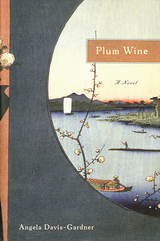 Plum Wine: A Novel
Angela Davis-Gardner
University of Wisconsin Press, 2006 Barbara Jefferson, a young American teaching in Tokyo in the 1960s, is set on a life-changing quest when her Japanese surrogate mother, Michi, dies, leaving her a tansu of homemade plum wines wrapped in rice paper. Within the papers Barbara discovers writings in Japanese calligraphy that comprise a startling personal narrative. With the help of her translator, Seiji Okada, Barbara begins to unravel the mysteries of Michi's life, a story that begins in the early twentieth century and continues through World War II and its aftermath.
As Barbara and Seiji translate the plum wine papers they form an intimate bond, with Michi a ghostly third in what becomes an increasingly uneasy triangle. Barbara is deeply affected by the revelation that Michi and Seiji are hibakusha, survivors of the atomic bombing in Hiroshima, and even harder for her to understand are the devastating psychological effects wrought by war. Plum Wine examines human relationships, cultural differences, and the irreparable consequences of war in a story that is both original and timeless. 2007 A Notable Fiction Book of 2007, selected by the Kiriyama Prize Committee Winner, Fiction Award, Southern Independent Bookstore Alliance Notable Fiction, Kiriyama Pacific Rim Book Prize
Plunder Squad: A Parker Novel
Richard Stark
University of Chicago Press, 2010 “Hearing the click behind him, Parker threw his glass straight back over his right shoulder, and dove off his chair to the left.” When a job looks like amateur hour, Parker walks away. But even a squad of seasoned professionals can’t guarantee against human error in a high-risk scam. Can an art dealer with issues unload a truck of paintings with Parker’s aid? Or will the heist end up too much of a human interest story, as luck runs out before Parker can get in on the score?
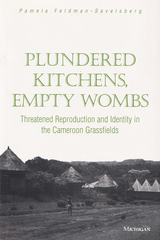 Plundered Kitchens, Empty Wombs: Threatened Reproduction and Identity in the Cameroon Grassfields
Pamela Feldman-Savelsberg
University of Michigan Press, 1999 Plundered Kitchens, Empty Wombs examines the symbolic language of food, fertility, and infertility in a small, mountainous African kingdom to explore more general notions of gender, modernity, and cultural identity.
In the Cameroon grassfields, an area of high fertility, women hold a paradoxical fear of infertility. By combining symbolic, political-economic, and historical analyses, Pamela Feldman-Savelsberg traces the way reproductive threat is invoked in struggles over gender and ethnic identities. Women's fears of reproductive disorders, she finds, are an important mode of expression for their worries about much larger issues, such as rural poverty, brought about or exacerbated by political and economic changes in this century.
A lively case study of an infertile queen who flees the palace sets the stage for discussions of the ethnographic and historical setting, the symbolism of fertility and infertility, and the development and interaction of cosmopolitan and ethno-gynecologies. The book concludes with an analysis of the links between women's role in human reproduction and the divine king's role in social reproduction, both occurring in the rapidly changing context of a multiethnic African nation.
Plundered Kitchens, Empty Wombs underscores the relevance of medical anthropology to other anthropological specializations, as well as to epidemiologists, population specialists, and development planners. It should reach a broad audience in medical anthropology, public health, and women's studies.
Pamela Feldman-Savelsberg is Assistant Professor of Anthropology, Carleton College.
 Plundered Kitchens, Empty Wombs: Threatened Reproduction and Identity in the Cameroon Grassfields
Pamela Feldman-Savelsberg
University of Michigan Press
Plundered Kitchens, Empty Wombs examines the symbolic language of food, fertility, and infertility in a small, mountainous African kingdom to explore more general notions of gender, modernity, and cultural identity.
In the Cameroon grassfields, an area of high fertility, women hold a paradoxical fear of infertility. By combining symbolic, political-economic, and historical analyses, Pamela Feldman-Savelsberg traces the way reproductive threat is invoked in struggles over gender and ethnic identities. Women's fears of reproductive disorders, she finds, are an important mode of expression for their worries about much larger issues, such as rural poverty, brought about or exacerbated by political and economic changes in this century.
A lively case study of an infertile queen who flees the palace sets the stage for discussions of the ethnographic and historical setting, the symbolism of fertility and infertility, and the development and interaction of cosmopolitan and ethno-gynecologies. The book concludes with an analysis of the links between women's role in human reproduction and the divine king's role in social reproduction, both occurring in the rapidly changing context of a multiethnic African nation.
Plundered Kitchens, Empty Wombs underscores the relevance of medical anthropology to other anthropological specializations, as well as to epidemiologists, population specialists, and development planners. It should reach a broad audience in medical anthropology, public health, and women's studies.
Pamela Feldman-Savelsberg is Assistant Professor of Anthropology, Carleton College.
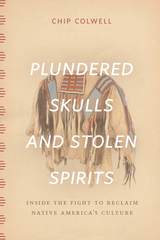 Plundered Skulls and Stolen Spirits: Inside the Fight to Reclaim Native America's Culture
Chip Colwell
University of Chicago Press, 2017 Who owns the past and the objects that physically connect us to history? And who has the right to decide this ownership, particularly when the objects are sacred or, in the case of skeletal remains, human? Is it the museums that care for the objects or the communities whose ancestors made them? These questions are at the heart of Plundered Skulls and Stolen Spirits, an unflinching insider account by a leading curator who has spent years learning how to balance these controversial considerations.
Five decades ago, Native American leaders launched a crusade to force museums to return their sacred objects and allow them to rebury their kin. Today, hundreds of tribes use the Native American Graves Protection and Repatriation Act to help them recover their looted heritage from museums across the country. As senior curator of anthropology at the Denver Museum of Nature & Science, Chip Colwell has navigated firsthand the questions of how to weigh the religious freedom of Native Americans against the academic freedom of scientists and whether the emptying of museum shelves elevates human rights or destroys a common heritage. This book offers his personal account of the process of repatriation, following the trail of four objects as they were created, collected, and ultimately returned to their sources: a sculpture that is a living god, the scalp of a massacre victim, a ceremonial blanket, and a skeleton from a tribe considered by some to be extinct. These specific stories reveal a dramatic process that involves not merely obeying the law, but negotiating the blurry lines between identity and morality, spirituality and politics.
Things, like people, have biographies. Repatriation, Colwell argues, is a difficult but vitally important way for museums and tribes to acknowledge that fact—and heal the wounds of the past while creating a respectful approach to caring for these rich artifacts of history.
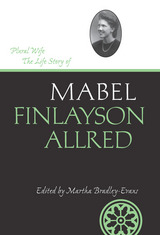 Plural Wife: The Life Story of Mabel Finlayson Allred
Mabel Finlayson Allred, author, and Martha Sonntag Bradley, editor
Utah State University Press, 2012 Mabel Finlayson Allred was a wife of Rulon Allred, leader of the Apostolic United Brethren, one of the major groups of fundamentalist Mormons who, since about the 1930s, have practiced plural marriage as separatists from the mainstream Latter-day Saints Church.
Mabel’s autobiography maintains a mood of everyday normalcy strikingly in contrast with the stress of the ostracized life she was living. Her cheerful tone, expressive of her wish to live simply and gracefully in this world, is tempered by more somber descriptions of her personal struggle with clinical depression, of Rulon Allred’s inner struggles, of tensions with the law and with Allred’s fundamentalist colleagues, and ultimately by her forthright account of his assassination.
Emerging from this unique narrative is the portrait of a woman buoyed by faith in both her religion and her husband, a window into the interior life of a woman seeking a resilient simplicity in an uncommonly challenging life.
Plural Wife, conntextualized by Martha Bradley’s introduction, gives us insight into Mabel’s experience of history during an important period of the 20th century and advances our understanding of life ways of 20th century polygamy and the growth of the fundamentalist movement.
 Pluralising Pasts: Heritage, Identity and Place in Multicultural Societies
Brian Graham, G. J. Ashworth, and J. E. Tunbridge
Pluto Press, 2007 The heritage industry is big business. From museums and the preservation of old buildings to broader questions of community and identity, heritage is now a political issue. This book explores what heritage means and how it is used to encourage people to identify with particular places and 'traditions'. The authors show how contemporary societies use heritage in the creation and management of collective identities and, most especially, the different ways in which it is involved with the questions of multicultural societies. The resources that are poured into heritage mean that questions of identity are widely discussed at a policy level: what does it mean to be American or British, or a minority in any society? This book shows how heritage is used politically and commercially to shape the ways people represent themselves, and are represented, in diverse and hybrid societies.
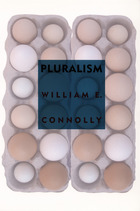 Pluralism
William E. Connolly
Duke University Press, 2005 Over the past two decades, the renowned political theorist William E. Connolly has developed a powerful theory of pluralism as the basis of a territorial politics. In this concise volume, Connolly launches a new defense of pluralism, contending that it has a renewed relevance in light of pressing global and national concerns, including the war in Iraq, the movement for a Palestinian state, and the fight for gay and lesbian rights. Connolly contends that deep, multidimensional pluralism is the best way to promote justice and inclusion without violence. He advocates a deep pluralism—in contrast to shallow, secular pluralism—that helps to create space for different groups to bring their religious faiths into the public realm. This form of deep pluralism extends far beyond faith, encompassing multiple dimensions of social and personal lives, including household organization and sexuality. Connolly looks at pluralism not only in light of faith but also in relation to evil, ethics, relativism, globalization, and sovereignty. In the process, he engages many writers and theorists—among them, Spinoza, William James, Henri Bergson, Marcel Proust, Gilles Deleuze, Giorgio Agamben, Talal Asad, Michael Hardt, and Antonio Negri. Pluralism is the first book in which Connolly explains the relationship between pluralism and the experience of time, and he offers readings of several films that address how time is understood, including Time Code, Far from Heaven, Waking Life, and The Maltese Falcon. In this necessary book Connolly brings a compelling, accessible philosophical critique together with his personal commitment to an inclusive political agenda to suggest how we might—and why we must—cultivate pluralism within both society and ourselves.
Pluralism and Progressives: Hull House and the New Immigrants, 1890-1919
Rivka Shpak Lissak
University of Chicago Press, 1989 The settlement house movement, launched at the end of the nineteenth century by men and women of the upper middle class, began as an attempt to understand and improve the social conditions of the working class. It gradually came to focus on the "new immigrants"—mainly Italians, Slavs, Greeks, and Jews—who figured so prominently in this changing working class. Hull House, one of the first and best-known settlement houses in the United States, was founded in September 1889 on Chicago's West Side by Jane Addams and Ellen G. Starr. In a major new study of this famous institution and its place in the movement, Rivka Shpak Lissak reassesses the impact of Hull House on the nationwide debate over the place of immigrants in American society.
 Pluralism by the Rules: Conflict and Cooperation in Environmental Regulation
Edward P. Weber
Georgetown University Press, 1998 Despite America's pluralistic, fragmented, and generally adversarial political culture, participants in pollution control politics have begun to collaborate to reduce the high costs of developing, implementing, and enforcing regulations. Edward P. Weber uses examples from this traditionally combative policy arena to propose a new model for regulation, "pluralism by the rules," a structured collaborative format that can achieve more effective results at lower costs than typically come from antagonistic approaches. Weber cites the complexity and high implementation costs of environmental policy as strong but insufficient incentives for collaboration. He shows that cooperation becomes possible when opposing sides agree to follow specific rules that include formal binding agreements about enforcement, commitment to the process by political and bureaucratic leaders, and the ensured access and accountability of all parties involved. Such rules establish trust, create assurances that agreements will be enforced, and reduce the perceived risks of collaboration. Through case studies dealing with acid rain, reformulated gasoline, and oil refinery pollution control, Weber demonstrates the potential of collaboration for realizing a cleaner environment, lower compliance costs, and more effective enforcement. Challenging the prevailing view that endless conflict in policymaking is inevitable, Pluralism by the Rules establishes a theoretical framework for restructuring the regulatory process.
 Pluralism in Theory and Practice: Richard McKeon and American Philosophy
Eugene Garver
Vanderbilt University Press, 2000 Unknown to many, unintelligible to some, Richard McKeon (1900-1985) is considered by those familiar with his work to be among the most important of all twentieth-century philosophers. In a career that spanned seven decades, McKeon published eleven books and more than 150 articles, inspired and intimidated generations of students (among them Richard Rorty, Wayne Booth, and Paul Goodman), and received most of the honors available to an American philosopher. As a teacher and administrator at the University of Chicago, he was instrumental in founding its general education program and initiating the first interdisciplinary program in the humanities. His achievements outside the university included a major part in developing the first cultural and philosophical projects of UNESCO. Fearsome in the classroom, he is renowned for his scholarly brilliance; the problems he thought important, however, did not occupy his colleagues' attention. Ironically, they are now the very issues that present-day philosophers grapple with, namely pluralism, the relationship of philosophy to the history of philosophy, rhetoric and philosophy, the diversity of culture, and the problems of communication and community. Pluralism in Theory and Practice not only brings McKeon to the attention of contemporary philosophers and students; it also puts his theories into practice. Some of the essays explicate aspects of McKeon's thought or situate him in the context of American intellectual and practical engagement. Others take the concerns he raised as starting points for inquiries into urgent contemporary problems, or, in some cases, for reexamining McKeon's work as fertile ground for shaping the direction of new investigation.
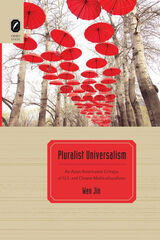 Pluralist Universalism: An Asian Americanist Critique of U.S. and Chinese Multiculturalisms
Wen Jin
Ohio State University Press, 2012 Pluralist Universalism: An Asian Americanist Critique of U.S. and Chinese Multiculturalisms by Wen Jin is an extended comparison of U.S. and Chinese multiculturalisms during the post–Cold War era. Her book situates itself at the intersection of Asian American literary critique and the growing field of comparative multiculturalism. Through readings of fictional narratives that address the issue of racial and ethnic difference in both national contexts simultaneously, the author models a “double critique” framework for U.S.–Chinese comparative literary studies. The book approaches U.S. liberal multiculturalism and China’s ethnic policy as two competing multiculturalisms, one grounded primarily in a history of racial desegregation and the other in the legacies of a socialist revolution. Since the end of the Cold War, the two multiculturalisms have increasingly been brought into contact through translation and other forms of mediation. Pluralist Universalism demonstrates that a number of fictional narratives, including those commonly classified as Chinese, American, and Chinese American, have illuminated incongruities and connections between the ethno-racial politics of the two nations. The “double critique” framework builds upon critical perspectives developed in Asian American studies and adjacent fields. The book brings to life an innovative vision of Asian American literary critique, even as it offers a unique intervention in ideas of ethnicity and race prevailing in both China and the United States in the post–Cold War era.
The Pluralistic Philosophy of Stephen Crane
Patrick K. Dooley
University of Illinois Press, 1993 The first extended analysis by a scholar
formally trained in the discipline of philosophical inquiry. Dooley shows how
Crane's philosophical pluralism, which represents his response to the acute moral
uncertainties resulting from the decline of late nineteenth-century religious
authority, allies him with the contextualism of such contemporary philosophers
as William James, C. S. Peirce, and Josiah Royce."
-- James B. Colvert, author of Stephen Crane
 A Pluralistic Universe
William James
Harvard University Press, 1977 In May 1908 William James, a gifted and popular lecturer, delivered a series of eight Hibbert Lectures at Manchester College, Oxford, on “The Present Situation in Philosophy.” These were published a year later as A Pluralistic Universe.
During the preceding decade James, as he struggled with deep conflicts within his own philosophic development, had become increasingly preoccupied with epistemological and metaphysical issues. He saw serious inadequacies in the forms of absolute and monistic idealism dominant in England and the United States, and he used the lectures to attack the specific form that “vicious intellectualism” had taken. In A Pluralistic Universe James captures a new philosophic vision, at once intimate and realistic. He shares with his readers a view of the universe that is fresh, active, and novel. The message conveyed is as relevant today as it was in his time.
This is the fourth volume of The Works of William James in an authoritative edition sponsored by the American Council of Learned Societies. Prepared according to modern standards of textual scholarship, this series utilizes all available published and unpublished materials; its texts have been awarded the seal of approval of the Center for Editions of American Authors. Frederick Burkhardt is General Editor; Fredson Bowers, Textual Editor; Ignas K. Skrupskelis, Associate Editor.
Plurality and Ambiguity: Hermeneutics, Religion, Hope
David Tracy
University of Chicago Press, 1994 In Plurality and Ambiguity, David Tracy lays the philosophical groundwork for a practical application of hermeneutics, while constructing an innovative model of theological interpretation developed out of the notions of conversation and argument. He concludes with an appraisal of the religious significance of hope in an age of radically different voices and constantly shifting meanings.
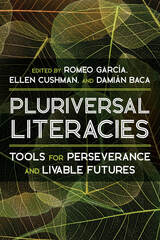 Pluriversal Literacies: Tools for Perseverance and Livable Futures
Damián Baca, Romeo Garcia, and Ellen Cushman
University of Pittsburgh Press, 2022 A Global Analysis of Sites, Practices, and Processes of Decolonial and Indigenous Meaning-Making
Decolonial projects can end up reinforcing dominant modes of thinking by shoehorning understandings of Indigenous and non-Western traditions within Eurocentric frameworks. The pluralization of literacies and the creation of so-called alternative rhetorics accepts that there is a totalizing reality of rhetoric and literacy. This volume seeks to decenter these theories and to engage Indigenous contexts on their own terms, starting with the very tools of representation. Language itself can disrupt normative structures and create pluriversal possibilities. The volume editors and contributors argue for epistemic change at the level of the language and media that people use to represent meaning. The range of topics covered includes American Indian and Indigenous representations, literacies, and rhetorics; critical revisionist historiography and comparative rhetorics; delinking colonial literacies of cartographic power and modernity; “northern” and “southern” hemispheric relations; and theorizations of/from oceanic border spaces.
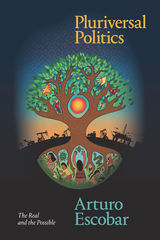 Pluriversal Politics: The Real and the Possible
Arturo Escobar
Duke University Press, 2020 In Pluriversal Politics Arturo Escobar engages with the politics of the possible and how established notions of what is real and attainable preclude the emergence of radically alternative visions of the future. Reflecting on the experience, philosophy, and practice of indigenous and Afro-descendant activist-intellectuals and on current Latin American theoretical-political debates, Escobar chronicles the social movements mobilizing to defend their territories from large-scale extractive operations in the region. He shows how these movements engage in an ontological politics aimed at bringing about the pluriverse—a world consisting of many worlds, each with its own ontological and epistemic grounding. Such a politics, Escobar contends, is key to crafting myriad world-making stories telling of different possible futures that could bring about the profound social transformations that are needed to address planetary crises. Both a call to action and a theoretical provocation, Pluriversal Politics finds Escobar at his critically incisive best.
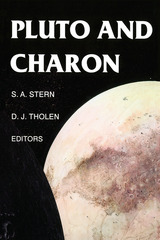 Pluto and Charon
Edited by S. Alan Stern and David J. Tholen
University of Arizona Press, 1997 For almost five decades after its discovery in 1930, the planet Pluto remained an enigma. However, several events have helped to lift the veil of mystery surrounding the ninth planet. The discovery of its satellite, Charon, in 1978 permitted occultation observations that allowed scientists to determine the size of both bodies. Astronomers also detected the presence of an atmosphere, and the Hubble Space Telescope provided views in unprecedented detail. In addition to these two fortuitous events, advances in telescopic instrumentation and computational methods led to exciting observational and theoretical discoveries.
This Space Science Series volume focuses on the scientific issues associated with Pluto and Charon. Fifty collaborating authors here review the latest research on the Pluto-Charon binary, from bulk properties, surfaces, and interiors to atmospheric structure, composition, and dynamics. They also provide historical perspectives on Pluto-Charon research and discuss the population of the trans-Neptunian region and the origin of the Pluto-Charon binary. Also included are prefatory remarks by Pluto's and Charon's discoverers, Clyde Tombaugh and James Christy.
Pluto and Charon offers the most comprehensive available compendium of research work for understanding these far-off members of our solar system, at a time following dramatic developments in our knowledge but before that knowledge can be advanced by spacecraft missions.
Originally published in 1997; now available as an e-book
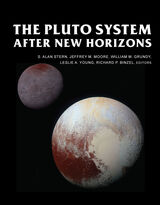 The Pluto System After New Horizons
S. Alan Stern, Jeffrey M. Moore, William M. Grundy, Leslie A. Young, Richard P. Binzel, Editors
University of Arizona Press, 2021 Once perceived as distant, cold, dark, and seemingly unknowable, Pluto had long been marked as the farthest and most unreachable frontier for solar system exploration. After Voyager accomplished its final planetary reconnaissance at Neptune in 1989, Pluto and its cohort in the Kuiper Belt beckoned as the missing puzzle piece for completing the first reconnaissance of our solar system. In the decades following Voyager, a mission to the Pluto system was not only imagined but also achieved, culminating with the historic 2015 flyby by the New Horizons spacecraft. Pluto and its satellite system (“the Pluto system”), including its largest moon, Charon, have been revealed to be worlds of enormous complexity that fantastically exceed preconceptions.
The Pluto System After New Horizons seeks to become the benchmark for synthesizing our understanding of the Pluto system. The volume’s lead editor is S. Alan Stern, who also serves as NASA’s New Horizons Principal Investigator; co-editors Richard P. Binzel, William M. Grundy, Jeffrey M. Moore, and Leslie A. Young are all co-investigators on New Horizons. Leading researchers from around the globe have spent the last five years assimilating Pluto system flyby data returned from New Horizons. The chapters in this volume form an enduring foundation for ongoing study and understanding of the Pluto system. The volume also advances insights into the nature of dwarf planets and Kuiper Belt objects, providing a cornerstone for planning new missions that may return to the Pluto system and explore others of the myriad important worlds beyond Neptune.
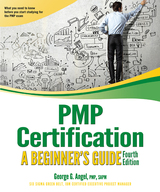 PMP Certification: A Beginner's Guide, Fourth Edition
George G. Angel
University Press of Colorado, 2023 Project management is in everything we do, from our personal lives to our professional careers. It is the fastest-growing profession in the world, and the skills learned in this book can be used for any sort of project, large or small: setting up a small business; planning a wedding, family vacation, company picnic, or other event; and organizing projects of any scale.
This beginner’s guide will teach you real-world project management skills for any project and will help prepare you to become a certified Project Management Professional (PMP) or Certified Associate Project Manager (CAPM).
This fourth edition provides up-to-date information on how to effectively manage projects, programs, and portfolios to achieve organizational success. It includes tips and sample questions at the end of each chapter as well as a mock exam to help prepare you for the Project Management Institute (PMI) certification exams.
This text follows the three PMI domains: People, Business Environment, and Processes. A case study with detailed real-world examples, sample templates, and actual project documents guides you through your own projects, from charter to close, using all five project groups (initiating, planning, executing, monitoring and controlling, and closing projects).
This edition takes the standard processes and framework for traditional projects introduced in PMI’s sixth edition Project Management Body of Knowledge (PMBOK) and adds the new focus on Agile (adaptive) project management methods, tools, and techniques in PMBOK’s seventh edition to enhance your knowledge and ability to handle a wide range of projects.
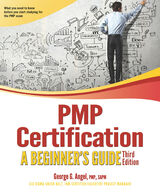 PMP Certification: A Beginner's Guide, Third Edition
George G. Angel
University Press of Colorado, 2017
This accessible guide bridges the gap between being a project manager and becoming a globally recognized Project Management Professional (PMP). Aligned with A Guide to the Project Management Body of Knowledge (PMBOK® Guide), Sixth Edition, this book explains the Project Management Institute’s worldwide standard methods, five process groups, ten knowledge areas, and forty-nine processes and includes many tips to help prepare for the latest PMP exam.
Angel includes proven strategies for improving project efficiency and effectiveness, balancing constraints, communicating timely and accurate project status, and successfully bringing a project to completion. Real-world case studies followed throughout the book provide examples, checklists, and proven project results. Designed for easy learning, the book contains chapter-opening lists of specific skills covered in the chapter, Q&A sections filled with bonus information and helpful tips, real-world experiences that show how to apply particular skills, and reminders to help in preparation for the PMP exam.
Pneumonia
Frederick Taylor Lord
Harvard University Press
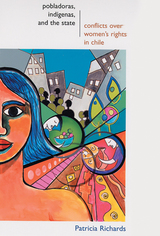 Pobladoras, Indígenas, and the State: Conflict Over Women's Rights in Chile
Richards, Patricia
Rutgers University Press, 2004 Can laws, policies, and agencies that are designed to help women achieve equality with men accommodate differences among women themselves? In Pobladoras, Indígenas, and the State, Patricia Richards examines how Chilean state policy shapes the promotion of women’s interests but at the same time limits the advancement of different classes and racial-ethnic groups in various ways. Chile has made a public commitment to equality between women and men through the creation of a National Women’s Service, SERNAM. Yet, indigenous Mapuche women and working-class pobladora activists assert that they have been excluded from programs implemented by SERNAM. Decisions about what constitutes "women’s interests" are usually made by middle class, educated, lighter-skinned women, and the priorities and concerns of poor, working-class, and indigenous women have not come to the fore. Through critical analysis of the role of the state, the diversity of women’s movements, and the social and political position of indigenous peoples in Latin America, Richards provides an illuminating discussion of the ways in which the state defines women’s interests and constructs women’s citizenship. This book makes important contributions to feminist studies, theories of citizenship, and studies of the intersections of class, gender, and race.
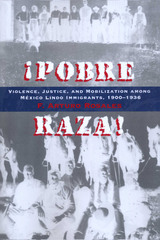 Pobre Raza!: Violence, Justice, and Mobilization among México Lindo Immigrants, 1900-1936
By F. Arturo Rosales
University of Texas Press, 1999 Fleeing the social and political turmoil spawned by the Mexican Revolution, massive numbers of Mexican immigrants entered the southwestern United States in the early decades of the twentieth century. But instead of finding refuge, many encountered harsh, anti-Mexican attitudes and violence from an Anglo population frightened by the influx of foreigners and angered by anti-American sentiments in Mexico. This book examines the response of Mexican immigrants to Anglo American prejudice and violence early in the twentieth century. Drawing on archival sources from both sides of the border, Arturo Rosales traces the rise of "México Lindo" nationalism and the efforts of Mexican consuls to help poor Mexican immigrants defend themselves against abuses and flagrant civil rights violations by Anglo citizens, police, and the U.S. judicial system. This research illuminates a dark era in which civilian and police brutality, prejudice in the courtroom, and disproportionate arrest, conviction, and capital punishment rates too often characterized justice for Mexican Americans.
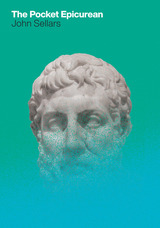 The Pocket Epicurean
John Sellars
University of Chicago Press, 2021 A short, smart guide to living the good life through the teachings of Epicurus.
As long as there has been human life, we’ve searched for what it means to be happy. More than two thousand years ago, the Greek philosopher Epicurus came to his own conclusion: all we really want in life is pleasure. Though today we tend to associate the word “Epicurean” with indulgence in the form of food and wine, the philosophy of Epicurus was about a life well lived even in the hardest of times. As John Sellars shows in this concise, approachable guide, the ideal life envisioned by Epicurus and his followers was a life much more concerned with mental pleasures and the avoidance of pain. Their goal, in short, was a life of tranquility or contentment.
In The Pocket Epicurean Sellars walks us through the history of Epicureanism, starting with the private garden on the edge of ancient Athens where Epicurus and his students lived in the fourth century BC, and where women were as welcome as men. Sellars then moves on to ancient Rome, where Epicurean influence flourished thanks to the poet Lucretius and his cohort. Throughout the book, Sellars draws on the ideas of Epicurus to offer a constructive way of thinking about the pleasures of friendship and our place in the world.
 A Pocket Guide to the US Constitution: What Every American Needs to Know, Second Edition
Andrew B. Arnold
Georgetown University Press, 2023 The Constitution is not so simple that it explains itself—nor so complex that only experts can understand it. In this accessible, nonpartisan quick reference, historian Andrew Arnold provides
concise explanations of the Constitution's meaning and history, offering little-known facts and anecdotes about every article and all twenty-seven amendments. This handy guide won’t tell you what the Constitution ought to say, nor what it ought to mean. It will tell you what the Constitution says and what it has meant. A Pocket Guide to the US Constitution presents a straightforward way to understand the American Constitutional system. Without wading through lengthy legal prose, heavy historical analysis, or polemical diatribes, you can easily find out what the emoluments clause means, learn about gerrymandering and separation of powers, or read a brief background on why slaves in colonial America were considered 3/5 of a person. Small enough to put in your pocket, backpack, or briefcase, A Pocket Guide to the US Constitution can be used to comprehend current events, dig deeper into court cases, or sort out your own opinions on constitutional issues.
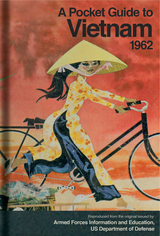 A Pocket Guide to Vietnam, 1962
Edited by The Bodleian Library
Bodleian Library Publishing, 2012 For most Americans in the 1960s, Vietnam was a faraway land of which they had little or no knowledge. Yet soon, hundreds of thousands of young American men and women would find themselves on the other side of the globe, fighting—and, in many cases, living—with the Vietnamese people. To lessen the culture shock, the Department of Defense prepared A Pocket Guide to Vietnam, 1962, a remarkably compact and surprisingly timeless crash course in Vietnamese culture for visitors to this foreign land. Republished by the Bodleian Library with original illustrations and a new foreword by Bruns Grayson, who served as a US Army captain in Vietnam, the Pocket Guide takes the reader on a need-to-know tour through the culture, customs, geography, and politics of Vietnam. Among the straightforward words of wisdom on offer are “Don’t think Americans know everything” and “You will fulfill your duty best by remembering at all times that you are in a land where dignity, restraint, and politeness are highly regarded.” The Pocket Guide was designed to instill in soldiers an understanding of and respect for the Vietnamese people—crucial to the success of the venture—and it therefore also sheds further light on the political aspirations of the time. Famously controversial, the Vietnam War is among the defining conflicts of the latter half of the twentieth century and, as such, the key battles and strategies have been dealt with in considerable depth. But beyond these purely militaristic concerns are the everyday lives of the soldiers who served there. A behind-the-front-lines look at a wide range of social situations they might have encountered, the book makes for captivating reading for anyone interested in Vietnam and its cultural, social, political, and military history.
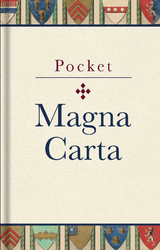 Pocket Magna Carta: 1217 Text and Translation
Edited by the Bodleian Library
Bodleian Library Publishing, 2016 Magna Carta, or “Great Charter,” is one of the most important documents in legal history. Originating in 1215 as a peace treaty between King John and a group of rebellious barons at Runnymede, it put into law the concept of individual liberty and transformed the role of the monarch toward the people. Magna Carta was subsequently revised and reissued throughout the thirteenth century, and the ideas it expressed have had a profound influence, including on the US Constitution and Bill of Rights.
Pocket Magna Carta reproduces the 1217 reissue of this landmark document, including both the original Latin text and a modern translation, as well as an accessible introduction that traces the background of Magna Carta’s signing and subsequent revisions throughout the centuries. It also explains how the text has become an enduring symbol of freedom in Britain and the wider world. A clear and concise introduction to one of the most important documents in legal history, Pocket Magna Carta will be welcomed by those with an interest in British history or the wider history of Britain in the world.
Pocket Radar Guide: Key radar facts, equations, and data
G. Richard Curry
The Institution of Engineering and Technology, 2010 The Pocket Radar Guide is a concise collection of key radar facts and important radar data that provides the reader with necessary radar information when they are away from the office or references. It includes statements and comments on radar design, operation, and performance; equations describing the characteristics and performance of radar systems and their components; and tables with data on radar characteristics and key performance issues. It is intended to supplement other radar information sources by providing a pocket companion to refresh memory and provide details whenever you need them such as in meetings, while traveling, or in the field.
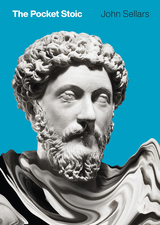 The Pocket Stoic
John Sellars
University of Chicago Press, 2020 To counter the daily anxieties, stress, and emotional swings caused by the barrage of stimuli that plagues modern life, many people have been finding unexpected solace in a philosophy from a very different and distant time: Stoicism. Today, more than 100,000 people are members of online communities for modern Stoics, and there are annual conferences, meet-ups, and workshops for those aspiring to walk the Stoic path. But what is Stoicism, and what makes it resonate so powerfully today?
As John Sellars shows in The Pocket Stoic, the popular image of the isolated and unfeeling Stoic hardly does justice to the rich vein of thought that we find in the work of Seneca, Epictetus, and Marcus Aurelius, the three great Roman Stoics. Their works are recognized classics, and for good reason—they speak to some of the perennial issues that face anyone trying to navigate their way through life. These writings, fundamentally, are about how to live—how to understand your place in the world, how to cope when things don’t go well, how to manage your emotions, how to behave toward others, and finally, how to live a good life. To be a Stoic is to recognize that much of the suffering in your life is due to the way you think about things, and that you have the ability to train your mind to look at the world in a new way—to recognize what you can and cannot control and to turn adversity into opportunity.
Concise and accessible, The Pocket Stoic provides a welcome introduction to the lives and thought of the key Stoics. It is also a perfect guide to help you start incorporating the practice of Stoicism into your everyday approach to life.
Pocket Sundial
Lisa Zeidner
University of Wisconsin Press, 1988 In this, the fourth volume to win the Brittingham Prize in Poetry, Lisa Zeidner’s twenty-two poems introduce a surprising range of characters, from a cryogenically preserved caveman to a 78-year-old widow arrested for shoplifting. Some of the narratives collected here are unusually long (like “Dementia Colander,” a mock-epic about the history of an unnamed nation whose king suffers a rare disease). These poems attempt to offer not just poetic moments, glimpses of joy or loss, but a sense of self in time and history—whole lives in all of their busy-ness and disorder. Lisa Zeidner’s dark wit considers any subject, from the Holocaust to child abuse, a subject for intellectual playfulness and emotional discovery.
Despite the range of subjects, the poems in Pocket Sundial are bound by a concern for time, for how we think about time. These are poems about memory, foresight, anticipation, regret—all of chronology’s complexities.
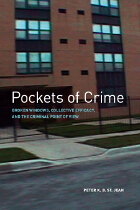 Pockets of Crime: Broken Windows, Collective Efficacy, and the Criminal Point of View
Peter K. B. St. Jean
University of Chicago Press, 2007 Why, even in the same high-crime neighborhoods, do robbery, drug dealing, and assault occur much more frequently on some blocks than on others? One popular theory is that a weak sense of community among neighbors can create conditions more hospitable for criminals, and another proposes that neighborhood disorder—such as broken windows and boarded-up buildings—makes crime more likely. But in his innovative new study, Peter K. B. St. Jean argues that we cannot fully understand the impact of these factors without considering that, because urban space is unevenly developed, different kinds of crimes occur most often in locations that offer their perpetrators specific advantages.
Drawing on Chicago Police Department statistics and extensive interviews with both law-abiding citizens and criminals in one of the city’s highest-crime areas, St. Jean demonstrates that drug dealers and robbers, for example, are primarily attracted to locations with businesses like liquor stores, fast food restaurants, and check-cashing outlets. By accounting for these important factors of spatial positioning, he expands upon previous research to provide the most comprehensive explanation available of why crime occurs where it does.
 The Pocket-Size God: Essays from Notre Dame Magazine
Robert Griffin
University of Notre Dame Press, 2016 Fr. Robert Griffin, C.S.C. (1925–1999), was a beloved member of the Notre Dame community. With his cocker spaniel, Darby O’Gill, he was instantly recognizable on campus. He was well known for his priestly work counseling students as university chaplain for thirty years, his summer ministry to the homeless and parishioners in New York City, and his weekly columns in the student newspaper, The Observer, in which he invited the campus community to reflect with him on the challenges and joys of being Catholic in a time of enormous social and religious change.
This collection draws together essays that Griffin wrote for Notre Dame Magazine between 1972 and 1994. In them, he considers many of the challenges that beset church and campus, such as the laicization of priests, premarital sex, the erosion of institutional authority, intolerance toward gay people, and failure of fidelity to the teachings of the church. Griffin also ruminates on the distress that human beings experience in the ordinariness of their lives—the difficulty of communication in families, grief over the loss of family and friends, the agonies of isolation, and the need for forgiveness. Griffin’s shrewd insights still ring true for people today. His efforts to temper the winds of institutional rules, cultural change, and personal suffering reveal a mind keenly attuned to the need for understanding human limitations and to the presence of grace in times of change. Griffin quotes from the works of literary modernists, such as Fitzgerald and Hemingway, whose novels and short stories he loved; in these allusions and in his own reflections and experiences, Griffin bridges the spiritual and the secular and offers hope for reconciliation and comfort.
"Father Griffin's essays were widely read, on campus and off, when he wrote them, and they will doubtless continue to appeal to a large audience of people interested in Notre Dame—students, parents of students, alumni, and particularly alumni who attended between 1972 and 1994. For all of their social and cultural commentary, all of their observation of local color on campus or in Times Square, all of their wisecracking, all of their literary references, and yes, all of their occasional sentimentality, these essays are finally autobiographical fragments strewn in the wake of a significant spiritual journey, which, in the Quaker phrase, 'speaks to our condition.'" —Michael O. Garvey, University of Notre Dame
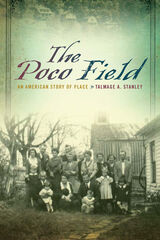 The Poco Field: An American Story of Place
Talmage A. Stanley
University of Illinois Press, 2012 In this beautifully written meditation on identity and place, Talmage A. Stanley tells the story of his grandparents' middle-class aspirations from the 1920s to the 1940s in the once-booming Pocahontas coalfields of southern West Virginia. Part lyrical family memoir and part social study, The Poco Field: An American Story of Place addresses a long-standing gap in Appalachian and American studies, illustrating the lives and choices of the middle class in the mid-twentieth century and delving into questions of place-based identity. Exploring the natural and built environments of the towns of Keystone, West Virginia and Newbern, Virginia, Stanley delineates the history of conflict and control of local industry and development. Through his grandparents' struggle for upward mobility into the middle class, Stanley narrates a history that counters ideas of Appalachia as an exception to American culture and history, presenting instead an image of the region as an emblem of America at large. Stanley builds out from family and local history to examine broad structures of values and practices as they reflect and relate to place, showing how events such as the development of extensive mineworks, the ghettoization of the area's black residents, the catastrophic flooding of the Elkhorn Creek, and the fraud-induced failure of Keystone National Bank signal values that erode a place both literally and figuratively. Giving voice to activists now working to break down boundaries and assumptions that long have defined and restricted the middle class in the global economy, The Poco Field also champions the creative potential of place for reinvigorating democratic society for the twenty-first century.
 The Poconos: An Illustrated Natural History Guide
Halma, Robert
Rutgers University Press, 1988
The Poconos, a rich plateau nestled in northeastern Pennsylvania between the Delaware River and the Moosic Mountains, encompass a variety of alluring features. The perfect reference for amateur naturalists, outdoor enthusiasts, tourists, and others who wish to explore the area, this classic guide clearly explains the unique geographic characteristics, animal habits and habitats, climate, geology, and vegetation of the area.
The authors trace the region from its beginnings millions of years ago as part of a shallow sea, through the reshaping forces of great glaciers, to today’s roadways and turnpikes. This revised and expanded edition also includes brief profiles of individuals who played significant roles in the preservation or understanding of the area’s ecology. Chapters provide a general survey of the area, including its history and places to be explored and observed, information on forest types, wildlife, and aquatic habitats, updated facts and figures on animal populations, as well as new details on invasive species.
Throughout the book, numerous boxes direct readers to observatory points for specific birds, ecosystems, vegetation types, and geological features, while maps, tables, original pen-and-ink illustrations, and a select list of field guides and other references enhance the book’s appeal. An indispensable companion for visitors as well as residents, The Poconos is a must-read for everyone who wants to discover or better understand the beauty and natural history of this unique region.
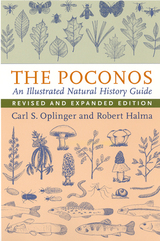 The Poconos: An Illustrated Natural History Guide
Carl S. Oplinger and Robert Halma
Rutgers University Press, 2006 The Poconos, a rich plateau nestled in northeastern Pennsylvania between the Delaware River and the Moosic Mountains, encompass a variety of alluring features. The perfect reference for amateur naturalists, outdoor enthusiasts, tourists, and others who wish to explore the area, this classic guide clearly explains the unique geographic characteristics, animal habits and habitats, climate, geology, and vegetation of the area.
The authors trace the region from its beginnings millions of years ago as part of a shallow sea, through the reshaping forces of great glaciers, to today’s roadways and turnpikes. This revised and expanded edition also includes brief profiles of individuals who played significant roles in the preservation or understanding of the area’s ecology. Chapters provide a general survey of the area, including its history and places to be explored and observed, information on forest types, wildlife, and aquatic habitats, updated facts and figures on animal populations, as well as new details on invasive species.
Throughout the book, numerous boxes direct readers to observatory points for specific birds, ecosystems, vegetation types, and geological features, while maps, tables, original pen-and-ink illustrations, and a select list of field guides and other references enhance the book’s appeal. An indispensable companion for visitors as well as residents, The Poconos is a must-read for everyone who wants to discover or better understand the beauty and natural history of this unique region.
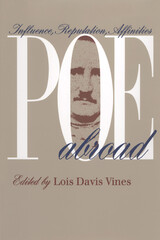 Poe Abroad: Influence Reputation Affinities
Lois Davis Vines
University of Iowa Press, 1999 Perhaps no one would be more shocked at the steady rise of his literary reputation—on a truly global scale—Than Edgar Allan Poe himself. Poe's literary reputation has climbed steadily since his death in 1849.
In Poe Abroad, Lois Vines has brought together a collection of essays that document the American writer's influence on the diverse literatures—and writers—of the world. Over twenty scholars demonstrate how and why Poe has significantly influenced many of the major literary figures of the last 150 years.
Part One includes studies of Poe's popularity among general readers, his influence on literary movements, and his reputation as a poet, fiction writer, and literary critic. Part Two presents analyses of the role Poe played in the literary development of specific writers representing many different cultures.
Poe Abroad commemorates the 150th anniversary of Poe's death and celebrates his worldwide impact, beginning with the first literal translation of Poe into a foreign language, “The Gold-Bug”into French in 1845. Charles Baudelaire translated another Poe tale in 1848 and four years later wrote an essay that would make Poe a well-known author in Europe even before he achieved recognition in America.
Poe died knowing only that some of his stories had been translated into French. He probably never would have imagined that his work would be admired and imitated as far away as Japan, China, and India or would have a lasting influence on writers such as Baudelaire, August Strindberg, Franz Kafka, Jorge Luis Borges, Julio Cortázar, and Tanizaki Junichiro.
As we approach the sesquicentennial of his death, Poe Abroad brings together a timely one-volume assessment of Poe's influence throughout the world.
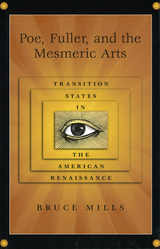 Poe, Fuller, and the Mesmeric Arts: Transition States in the American Renaissance
Bruce Mills
University of Missouri Press, 2005 In Poe, Fuller, and the Mesmeric Arts, Bruce Mills examines how the writings of Edgar Allan Poe and Margaret Fuller draw from representations of and theories concerning animal magnetism, somnambulism, or hypnosis rendered in newspapers, literary and medical journals, pamphlets, and books. Although some recent studies have begun to consider the relevance of animal magnetism or mesmerism to nineteenth-century literature and culture, this book moves more deeply into what might be termed the canon of mesmeric study. Through the works of Poe and Fuller, Mills argues, we can more fully understand the era’s response to dynamic cultural forces. Rather than simply using “American” subject matter as demanded in early calls for a national literature, Poe and Fuller, as well as Lydia Maria Child and Walt Whitman, increasingly rooted their epistemology and literary forms in psychological findings that accommodated the fluidity of democratic realities and principles. For many influential writers of the period, then, the call for a national literature had evolved into attention to the state of one’s own mind, to those manifestations of the highest states of mind, and to the effects of literary choices on readers’ psychological states. In the history and philosophy of mesmeric consciousness, Poe, Fuller, and others discerned those principles that offered the promise of answering a central question: how does one create an aesthetic that effectively explores, accommodates, and fosters the harmonious interplay of transition states in a democratic culture? Given its content and approach, Poe, Fuller, and the Mesmeric Arts should evoke interest among Poe and Fuller scholars as well as teachers, students, and historians intent upon understanding the emerging democratic sensibilities of the American Renaissance.
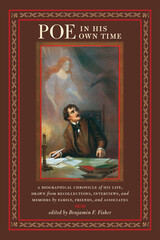 Poe in His Own Time: A Biographical Chronicle of His Life, Drawn from Recollections, Interviews, and Memoirs by Family, Friends, and Associates
Benjamin F. Fisher
University of Iowa Press, 2010 An image of Edgar Allan Poe (1809–1849) as a man of gloom and mystery continues to hold great popular appeal. Long recognized as one of the greats of American literature, he elicited either highly commendatory or absolutely hostile reactions from many who knew him, from others who claimed to comprehend him as person or as writer, and from still others who circulated as fact opinions intuited from his writings. Whether promoting him as angel or demon, “a man of great and original genius” or “extraordinarily wicked,” the viewpoints in this dramatic collection of primary materials provide vigorous testimony to support the contradictory images of the man and the writer that have prevailed for a century and a half.
Noted Poe scholar Benjamin Fisher includes a comprehensive introduction and a detailed chronology of Poe’s sadly short life; each entry is introduced by a short headnote that places the selection in historical and cultural context, and explanatory notes provide information about people and places. From John Allan’s letter to Secretary of War John Eaton about Poe’s West Point life to John Frankenstein’s hostile verse casting him as an alcoholic, from Rufus Griswold’s first and second posthumous vilifications to James Russell Lowell’s more sensible outline of his life and career, from scornful to commendable reviews to scathing attacks on his morals to recognition of his comic achievements, Fisher has gathered a lively array of materials that read like the most far-fetched of gothic tales.
Poe himself was creative when he supplied information to others about his life and literary career, and the speculative content of many of the portrayals presented in this collection read as if their authors had set out to be equally creative. The sixty-nine recollections gathered in Poe in His Own Time form a dramatic, real-time biographical narrative designed to provide a multitude of perspectives on the famous author, sometimes in conflict with each other and sometimes in agreement but always arresting.
 The Poem Electric: Technology and the American Lyric
Seth Perlow
University of Minnesota Press, 2018 An enlightening examination of the relationship between poetry and the information technologies increasingly used to read and write it
Many poets and their readers believe poetry helps us escape straightforward, logical ways of thinking. But what happens when poems confront the extraordinarily rational information technologies that are everywhere in the academy, not to mention everyday life?
Examining a broad array of electronics—including the radio, telephone, tape recorder, Cold War–era computers, and modern-day web browsers—Seth Perlow considers how these technologies transform poems that we don’t normally consider “digital.” From fetishistic attachments to digital images of Emily Dickinson’s manuscripts to Jackson Mac Low’s appropriation of a huge book of random numbers originally used to design thermonuclear weapons, these investigations take Perlow through a revealingly eclectic array of work, offering both exciting new voices and reevaluations of poets we thought we knew. With close readings of Gertrude Stein, Frank O’Hara, Amiri Baraka, and many others, The Poem Electric constructs a distinctive lineage of experimental writers, from the 1860s to today. Ultimately, Perlow mounts an important investigation into how electronic media allows us to distinguish poetic thought from rationalism. Posing a necessary challenge to the privilege of information in the digital humanities, The Poem Electric develops new ways of reading poetry, alongside and against the electronic equipment that is now ubiquitous in our world.
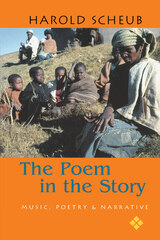 The Poem in the Story: Music, Poetry, and Narrative
Harold Scheub
University of Wisconsin Press, 2002 Fact and fiction meet at the boundaries, the betwixt and between where transformations occur. This is the area of ambiguity where fiction and fact become endowed with meaning, and this is the area—where ambiguity, irony, and metaphor join forces—that Harold Scheub exposes in all its nuanced and evocative complexity in The Poem in the Story.
In a career devoted to exploring the art of the African storyteller, Scheub has conducted some of the most interesting and provocative investigations into nonverbal aspects of storytelling, the complex relationship between artist and audience, and, most dramatically, the role played by poetry in storytelling. This book is his most daring effort yet, an unconventional work that searches out what makes a story artistically engaging and emotionally evocative, the metaphorical center that Scheub calls "the poem in the story." Drawing on extensive fieldwork in southern Africa and decades of experience as a researcher and teacher, Scheub develops an original approach—a blend of field notes, diary entries, photographs, and texts of stories and poems—that guides readers into a new way of viewing, even experiencing, meaning in a story. Though this work is largely focused on African storytelling, its universal applications emerge when Scheub brings the work of storytellers as different as Shakespeare and Faulkner into the discussion.
 The Poem Is You: 60 Contemporary American Poems and How to Read Them
Stephanie Burt
Harvard University Press, 2016 Contemporary American poetry has plenty to offer new readers, and plenty more for those who already follow it. Yet its difficulty—and sheer variety—leaves many readers puzzled or overwhelmed. The critic, scholar, and poet Stephanie Burt sets out to help. Beginning in the early 1980s, where critical consensus ends, Burt canvasses American poetry of the past four decades, from the headline-making urgency of Claudia Rankine’s Citizen to the stark pathos of Louise Glück, the limitless energy of Juan Felipe Herrera, and the erotic provocations of D. A. Powell.
The Poem Is You: Sixty Contemporary American Poems and How to Read Them is a guide to the diverse magnificences of American poetry today. It presents a wide range of poems selected by Burt for this volume, each accompanied by an original essay explaining how a given poem works, why it matters, and how the poem speaks to other parts of art and culture. Included here are some classroom classics (by Ashbery, Komunyakaa, Hass), less famous poems by very famous poets (Glück, Kay Ryan), and poems by prizewinning poets near the start of their careers (such as Brandon Som), and by others who are not—or not yet—well known.
The Poem Is You will appeal to poets, teachers, and students, but it is intended especially for readers who want to learn more about contemporary American poetry but who have not known where or how to start. It describes what American poets have fashioned for one another, and what they can give us today.
The Poem Itself: 150 of the Finest Modern Poets in the Original Languages
Stanley Burnshaw
University of Arkansas Press, 1995 Available again for a new generation, this classic work contains over 150 of the greatest modern French, Spanish, German, Italian, Portuguese, and Russian poems presented in the original languages and brilliantly illuminated by English commentaries.
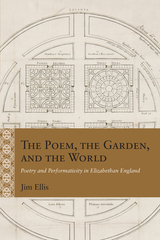 The Poem, the Garden, and the World: Poetry and Performativity in Elizabethan England
Jim Ellis
Northwestern University Press, 2023 How an early modern understanding of place and movement are embedded in a performative theory of literature
How is a garden like a poem? Early modern writers frequently compared the two, and as Jim Ellis shows, the metaphor gained strength with the arrival of a spectacular new art form—the Renaissance pleasure garden—which immersed visitors in a political allegory to be read by their bodies’ movements. The Poem, the Garden, and the World traces the Renaissance-era relationship of place and movement from garden to poetry to a confluence of both. Starting with the Earl of Leicester’s pleasure garden for Queen Elizabeth’s 1575 progress visit, Ellis explores the political function of the entertainment landscape that plunged visitors into a fully realized golden world—a mythical new form to represent the nation. Next, he turns to one of that garden’s visitors: Philip Sidney, who would later contend that literature’s golden worlds work to move us as we move through them, reorienting readers toward a belief in English empire. This idea would later be illustrated by Edmund Spenser’s Faerie Queen; as with the pleasure garden, both characters and readers are refashioned as they traverse the poem’s dreamlike space. Exploring the artistic creations of three of the era’s major figures, Ellis argues for a performative understanding of literature, in which readers are transformed as they navigate poetic worlds.
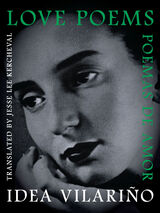 Poemas de amor / Love Poems
Idea Vilariño (translated by Jesse Lee Kercheval)
University of Pittsburgh Press, 2020 Longlist, 2021 PEN Award for Poetry in Translation
Eight years before Sylvia Plath published Ariel, the Uruguayan poet Idea Vilariño released Poemas del Amor, a collection of confessional, passionate poetry dedicated to the novelist Juan Carlos Onetti. Both of her own merit and as part of the Uruguayan writers group the Generation of ’45—which included Onetti, Mario Benedetti, Amanda Berenguer, and Ida Vitale—Vilariño is an essential South American poet, and part of a long tradition of Uruguayan women poets.
Vilariño and Onetti’s love affair is one of the most famous in South American literature. Poemas del Amor is an intense book, full of poems about sexuality and what it means to be a woman, and stands as a testament to both the necessity and the impossibility of love. This translation brings these highly personal poems to English speaking audiences for the first time side-by-side with the original Spanish language versions.
THE WITNESS
I don’t ask you for anything
don’t accept anything from you.
It’s enough that you are
in the world
that you know I am
in the world
that you might be
To me, you might be
witness judge and god.
If not
what is it for.
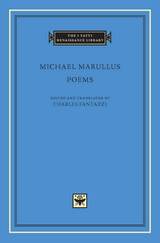 Poems
Michael Marullus
Harvard University Press, 2012 Michael Marullus (c. 1453/4–1500), born in Greece, began life as a mercenary soldier but became a prominent Neo-Latin poet and scholar who worked in Florence and Naples. He married the beautiful and learned Alessandra Scala, daughter of the humanist Bartolomeo Scala, chancellor of Florence, and his Epigrams bring alive the circle of Lorenzo di Pierfrancesco de’Medici. Among Marullus’ influences were ancient Greek texts such as the Homeric and Orphic hymns, the Corpus Hermeticum, the hymns of Proclus, Cleanthes, and Callimachus, and Julian the Apostate’s Hymn to the Sun. Marullus was particularly important, however, as one of the first Renaissance poets to imitate the works of Lucretius, and one witness reported that, after his death by drowning, a copy of the Roman poet’s works was found in his saddlebag. Later poets imitated him in vernacular love poetry, especially Ronsard; he even appears as a shadowy figure in the pages of George Eliot’s Romola, where he is depicted as a confirmed pagan.
This edition contains Marullus’ complete Latin poetry. All of these works appear in English translation for the first time.
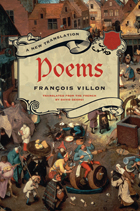 Poems
François Villon
Northwestern University Press, 2012 One of the most original and influential European poets of the Middle Ages, François Villon took his inspiration from the streets, taverns, and jails of Paris. Villon was a subversive voice speaking from the margins of society. He wrote about love and sex, money trouble, "the thieving rich," and the consolations of good food and wine. His work is striking in its directness, wit, and gritty urban realism. Villon’s writing spurred the development of the psychologically complex first-person voice in lyric poetry. He has influenced generations of avant-garde poets and artists. Arthur Rimbaud and Paul Verlaine have emulated Villon’s poetry. Claude Debussy set it to music, and Bertolt Brecht adapted it for the stage. Ezra Pound championed Villon’s poetry and became largely responsible for its impact on modern verse. With David Georgi’s ingenious translation, English-speaking audiences finally have a text that captures the riotous energy and wordplay of the original. With a newly revised French text that reflects the latest scholarship, this bilingual edition also features inviting and informative notes that illuminate the nuances of Villon’s poems and the world of medieval Paris.
 Poems
Cristoforo LandinoTranslated by Mary P. Chatfield
Harvard University Press, 2008 Cristoforo Landino (1424–1498), one of the great scholar-poets of the Renaissance, is best known today for his Platonizing commentaries on Dante and Vergil. His most substantial work of poetry was his Three Books on Xandra, written while still a young man. They consist primarily of love poetry in Latin directed to his lady-love Alessandra, but they also chronicle his life, friendships, literary studies, and the patronage of his work by Piero de' Medici. Inspired equally by the ancient Roman love-elegy and by Petrarch’s Canzoniere, the poems illustrate the mingling of classical and vernacular traditions characteristic of the age of Lorenzo de’ Medici. Also included in this volume is the Carmina Varia, a collection whose centerpiece is a group of elegies directed to the Venetian humanist Bernardo Bembo. These bring to life the Platonic passion Bembo conceived for Ginevra de’Benci, later the subject of a famous painting by Leonardo da Vinci. This edition contains the first translation of both works into English.
 Poems
Venantius Fortunatus
Harvard University Press, 2017 The eleven books of poetry by Venantius Fortunatus include well-loved hymns, figure poems, epigrams on miracles, and elegies in the voices of abandoned or exiled women. The sixth-century poet began his career in northern Italy before moving to Gaul, where he wrote for the remainder of his life—praising kings and elites of the Merovingian dynasty and describing the natural scenery and society of his adopted homeland during the transition from late antiquity to the early Middle Ages. In his lively and inventive style, Fortunatus also addressed verses to religious figures such as his patron Gregory of Tours and to holy women such as Radegund, founder of the Convent of the Holy Cross in Poitiers, and Agnes, the convent’s first abbess.
Fortunatus’s imaginative metaphors and wry, self-mocking humor ensure his place in the canon of Christian Latin poets. This volume presents for the first time in English translation all of his poetry, apart from a single long saint’s life in verse.
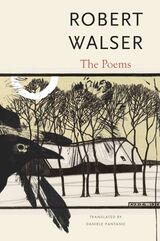 The Poems
Robert Walser
Seagull Books, 2022 The first complete publication of Robert Walser’s poems translated into English.
Admired by the likes of Kafka, Musil, and Walter Benjamin and acclaimed “unforgettable, heart-rending” by J. M. Coetzee, Swiss writer Robert Walser (1878–1956) remains one of the most influential authors of modern literature. Walser left school at fourteen and led a wandering and precarious existence while producing poems, stories, essays, and novels. In 1933, he abandoned writing and entered a sanatorium, where he remained for the rest of his life. “I am not here to write,” Walser said, “but to be mad.”
This first collection of Walser’s poems in English translation allows English-speaking readers to experience the author as he saw himself at the beginning and the end of his literary career––as a poet. The book also includes notes on dates of composition, draft versions of the printed poems, and brief biographical information on characters and locations that appear in the poems and may not be known to readers. Few writers have ever experienced such a steady rise in their reputation and public profile as Walser has seen in recent years, and this collection of his poems will help readers discover a unique writer whose off-kilter sensibility and innovations in form are perfectly suited to our fragmented, distracted, bewildering era.
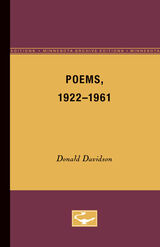 Poems, 1922-1961
Donald Davidson
University of Minnesota Press, 1966 Poems, 1922-1961 was first published in 1966.This volume contains a collection of the most important work of Donald Davidson, one of America’s greatest contemporary poets. The selection range from the time of his association with the Fugitive group of Southern writers during the 1920’s to his most recently published book of poems, The Long Street (1961). The Tall Men, first published in 1927, is included here in its revised version of 1938. Among the other early poems are selections from An Outland Piper (1924) and from Lee in the Mountains and Other Poems (1938).The critic Louis D. Rubin, Jr. calls this “the life work of a master poet.” He comments: “These poems don’t date; they represent no outmoded school or clique . . . and the new poems have a simplicity about them that does not hide so much as it enhances their rich imaginativeness and wealth of imagery. These are the poems of a man of great sensitivity and an exciting imagination and command of the language.”
Poems and a Defence of Ryme
Samuel Daniel
Harvard University Press Samuel Daniel is known by name to even the most casual students of Elizabethan literature. But though his work has sound claims to recognition both on historical and on artistic grounds, it has long remained practically inaccessible. In the present volume are reprinted: Delia, a sonnet sequence which is believed to have influenced Shakespeare; The Complaint of Rosamond; Musophilus; Epistles; Ulisses and the Syren; and A Defence of Ryme—this last an important document in the history of English criticism. The texts are based on first editions, with full variant readings representing in many cases the poet’s own revisions. A brief Introduction is concerned with Daniel’s life and the general characteristics of his writings.
Poems and Fancies with The Animal Parliament
Margaret Cavendish, Duchess of Newcastle
Iter Press, 2018 Margaret Cavendish released her Poems and Fancies during a brief reprieve from exile, and at a time when international conversations on questions regarding science, mathematics, and metaphysics significantly advanced the state of knowledge across Britain and Europe despite war and political turmoil. This volume offers the first complete modernized version of the third edition of Cavendish’s book, including prefaces and dedications, all 274 poems on nature’s various avatars, interludes and masques, and the final prose parable, The Animal Parliament. Cavendish offers views on physics, chemistry, algebraic geometry, medicine, political philosophy, ethics, psychology, and animal intelligence, as she develops her own theory of vital matter within the scope of nature’s ordering principles.
The Other Voice in Early Modern Europe. The Toronto Series: Volume 64
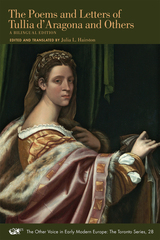 The Poems and Letters of Tullia d'Aragona and Others: A Bilingual Edition
Tullia d'Aragona and Others, Edited by Julia L. Hairston, Translated by Julia L. Hairston
Iter Press, 2014 Hairston has constructed a full personal, cultural and literary biography for d’Aragona, using newly discovered letters, archival material of other kinds, and contemporary theory about gender in women’s writing. Footnotes establish the intricacy of Tullia’s intellectual networks and her courting of intellectuals in rhyme. Hairston includes poems written to d’Aragona, including Girolamo Muzio’s long pastoral, Tirrhenia. She addresses with tact the question of how sexual Tullia’s relationships were with her various interlocutors. At times, as she says, one just can’t know, but that the issue is much less important than the poems themselves. I agree wholeheartedly. This is the editor Tullia has been waiting for: an indefatigable researcher, a creative biographer, and a precise and appreciative literary critic.
—Ann Rosalind Jones
Esther Cloudman Dunn Professor of Comparative Literature, Smith College The figure of Tullia d’Aragona has long fascinated readers as the prototype of the “honest courtesan”, a woman who successfully exploited her physical and intellectual charms to win the adoration and respect of the Italian cultural elite. With Julia Hairston’s richly annotated edition of her collected verse, the product of more than a decade of scholarship, d’Aragona finally comes into focus also as poet. She emerges in this volume as one of the most distinctive protagonists in a key transitional moment in Italian literary history, when the aristocratic tradition of Petrarchist lyric began to be reshaped and democratized by its encounter with print.
—Virginia Cox
Professor of Italian, New York University
Poems and Meditations
Anne Bradstreet
Iter Press, 2019 This volume presents all the surviving writings of the poet Anne Bradstreet (ca. 1612–1672): the poems published during her lifetime in The Tenth Muse Lately Sprung Up in America; or, Several Poems (London, 1650), poems added to the posthumous edition of Bradstreet’s Several Poems (Boston, 1678), and the material in her hand and that of her son preserved in a manuscript volume known as the Andover manuscript. Extensive footnotes illuminate Bradstreet’s broad reading in the medical, scientific, and historical literature of her day, as well as her interest in recent and current English history and politics.
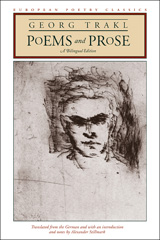 Poems and Prose: A Bilingual Edition
Georg Trakl, translated from the German and with an introduction by Alexander Stillmark
Northwestern University Press, 2005 A comprehensive English-language edition of verse by the Austrian poet An undeniable aura surrounds the name of Georg Trakl, a poet of intense inner vision and originality whose work stands alongside that of Yeats, Valéry, and T. S. Eliot. Besides Rilke, his more famous admirers include Karl Kraus and Martin Heidegger. The distinctive tone of Trakl's work-especially admired by his patron Ludwig Wittgenstein-is autumnal and melancholy. Trakl was writing at a time of spiritual and social disintegration on the eve of the First World War, when personal values and perceptions tended to be subsumed in a more generalized anguish and exaltation. Neo-romantic, early modernist, his rich, vitally sensuous poetry can be seen to mark the transition from impressionism to expressionism, but at the same time transcends such categories. Trakl's poetry has previously only been available in English in short selections or in anthologies. This bilingual edition, the most comprehensive to date, gives readers the chance to get to know Trakl's work more fully than ever before.
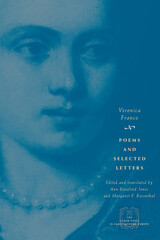 Poems and Selected Letters
Veronica Franco
University of Chicago Press, 1998 Veronica Franco (whose life is featured in the motion picture Dangerous Beauty) was a sixteenth-century Venetian beauty, poet, and protofeminist. This collection captures the frank eroticism and impressive eloquence that set her apart from the chaste, silent woman prescribed by Renaissance gender ideology.
As an "honored courtesan", Franco made her living by arranging to have sexual relations, for a high fee, with the elite of Venice and the many travelers—merchants, ambassadors, even kings—who passed through the city. Courtesans needed to be beautiful, sophisticated in their dress and manners, and elegant, cultivated conversationalists. Exempt from many of the social and educational restrictions placed on women of the Venetian patrician class, Franco used her position to recast "virtue" as "intellectual integrity," offering wit and refinement in return for patronage and a place in public life.
Franco became a writer by allying herself with distinguished men at the center of her city's culture, particularly in the informal meetings of a literary salon at the home of Domenico Venier, the oldest member of a noble family and a former Venetian senator. Through Venier's protection and her own determination, Franco published work in which she defended her fellow courtesans, speaking out against their mistreatment by men and criticizing the subordination of women in general. Venier also provided literary counsel when she responded to insulting attacks written by the male Venetian poet Maffio Venier.
Franco's insight into the power conflicts between men and women and her awareness of the threat she posed to her male contemporaries make her life and work pertinent today.
Poems by a Sixteenth-Century Gentlewoman, Maid, and Servant
Isabella Whitney
Iter Press, 2023 A collection of poems by the first English woman to publish secular poetry under her own name.
Isabella Whitney (c. 1547–after 1624) was the first English woman to publish original secular poetry under her own name. She published two poetic miscellanies of poems: The Copy of a Letter (1567) and A Sweet Nosegay (1573), which include her own work as well as a total of six poems by five different male authors. This edition of her writings prints modernized texts of the complete miscellanies and adds to them six poems attributed to Whitney by largely twentieth-century critics. These poems provide a rich portrait of sixteenth-century female courtship and its dangers, a unique view of class and gender in Whitney’s lifetime, and a portrait of London as a burgeoning market of practical goods and luxury items from foodstuffs to imported silk.
Poems, Emblems, and The Unfortunate Florinda
Lady Hester Pulter
Iter Press, 2014 Scholars who study early modern women’s writing have been eager for a full-text edition of the works of Hester Pulter since her manuscript was discovered in the mid-1990s. Now that Alice Eardley has brought together all of Pulter’s writing—poetry, emblems, and a prose romance—in a modern-spelling edition, students and academics will be able to access a remarkable body of work. The introduction does a brilliant job of situating Pulter in various milieux (the Civil War, religion, science) and in assessing the genres in which she worked. Eardley’s edition is clear and comprehensive enough to be useful to a wide audience of non-specialists, but its learned glosses are also illuminating for more experienced readers of early modern texts.
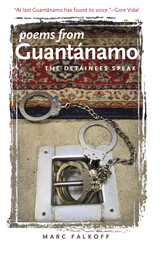 Poems from Guantanamo: The Detainees Speak
Marc Falkoff
University of Iowa Press, 2007 Since 2002, at least 775 men have been held in the U.S. detention center at Guantánamo Bay, Cuba. According to Department of Defense data, fewer than half of them are accused of committing any hostile act against the United States or its allies. In hundreds of cases, even the circumstances of their initial detainment are questionable. This collection gives voice to the men held at Guantánamo. Available only because of the tireless efforts of pro bono attorneys who submitted each line to Pentagon scrutiny, Poems from Guantánamo brings together twenty-two poems by seventeen detainees, most still at Guantánamo, in legal limbo. If, in the words of Audre Lorde, poetry “forms the quality of light within which we predicate our hopes and dreams toward survival and change,” these verses—some originally written in toothpaste, others scratched onto foam drinking cups with pebbles and furtively handed to attorneys—are the most basic form of the art.
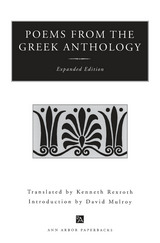 Poems from the Greek Anthology: Expanded Edition
Translated, with a Foreword, by Kenneth Rexroth
University of Michigan Press, 1999 "The first translation from the Greek that I ever did was the apple orchard of Sappho in my fifteenth year. It left me so excited with accomplishment that I couldn't sleep well for nights. Since that time, on the freight trains of my youthful years of wandering, in starlit camps on desert and mountain ranges, in snow-covered cabins, on shipboard, in bed, in the bath, in love, in time of loneliness and despair, in jail, while employed as an attendant of the insane, and on many other jobs and in many other places, the Anthology and the lyric poets of Greece have been my constant companions." --Kenneth Rexroth from the Foreword
Friend to the Beats, organizer of the Six Gallery poetry reading in 1955, and iconoclastic poet extraordinare, Kenneth Rexroth here turns his imagination to a selection of verses from the Greek Anthology. In his lively style he successfully captures the spirit of the originals by such poets as Sappho, Anyte, Glykon, Antipatros, Leonidas, Askelpiades, and Ammianos. Students of the classics as well as poets and translators will welcome this collection for the insight and dexterity of its unconventional editor.
Kenneth Rexroth (1905-1982), poet, critic, and translator, is also noted for his translations from the Chinese and Japanese. Widely prolific, he helped usher in the Beat movement in the 1950s and is widely considered to have invented the idea of San Francisco as a center of literary innovation. David Mulroy is Associate Professor in the Department of Foreign Languages and Linguistics, University of Wisconsin, Milwaukee. He is the translator of Early Greek Lyric Poetry and Horace's Odes and Epodes.
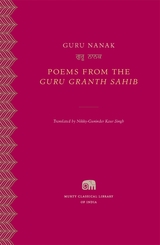 Poems from the Guru Granth Sahib
Guru Nanak
Harvard University Press, 2022 An exquisite new translation of Guru Nanak's verses, illuminating the sacred tenets cherished by millions of Sikhs worldwide.
Guru Nanak (1469–1539), a native of Panjab, founded the Sikh religion. His vast corpus of nearly a thousand hymns forms the core of the Guru Granth Sahib, the Sikhs’ sacred book of ethics, philosophy, and theology. The scripture was expanded and enriched by his nine successors, and Sikhs continue to revere it today as the embodiment of their tradition.
Poems from the Guru Granth Sahib offers a compilation of spiritual lyrics showcasing the range and depth of Guru Nanak’s literary style while conveying his pluralistic vision of the singular divine and his central values of equality, inclusivity, and civic action. This new English translation includes celebrated long hymns such as “Alphabet on the Board” and “Ballad of Hope” alongside innovative shorter poems like “The Hours.” It is presented here alongside the original text in Gurmukhi, the script developed by the Guru himself.
 Poems from the Satsai
Biharilal
Harvard University Press, 2021 The seventeenth-century Hindi classic treasured for its subtle and beautiful portrayal of divine and erotic love’s pleasures and sorrows.
In his Satsai, or Seven Hundred Poems, the seventeenth-century poet Biharilal draws on a rich vernacular tradition, blending amorous narratives about the god Krishna and the goddess Radha with archetypal hero and heroine motifs from older Sanskrit and Prakrit conventions. While little is known of Biharilal’s life beyond his role as court poet to King Jai Singh of Amber (1611–1667), his verses reflect deep knowledge of local north Indian culture and geography, especially the bucolic landscapes of Krishna’s youth in the Braj region (in today’s Uttar Pradesh). With ingenuity and virtuosity, Biharilal weaves together worldly experience and divine immanence, and adapts the tropes of stylized courtly poetry, such as romantic rivalries, clandestine trysts, and the bittersweet sorrow of separated lovers.
Poems from the Satsai comprises a selection of four hundred couplets from this enduring work. The Hindi text—composed in Braj Bhasha, the literary language of early-modern north India—is presented here in the Devanagari script and accompanies a new English verse translation.
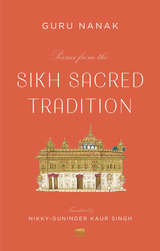 Poems from the Sikh Sacred Tradition
Guru Nanak
Harvard University Press, 2022 “A landmark volume, filled with beautiful renderings of writings from the Guru Granth Sahib.”
—Simran Jeet Singh, author of The Light We Give: How Sikh Wisdom Can Transform Your Life
An exquisite new translation of Guru Nanak’s verses, illuminating the sacred tenets cherished by millions of Sikhs worldwide.
Guru Nanak (1469–1539), a native of Panjab, founded the Sikh religion. His vast corpus of nearly a thousand hymns forms the core of the Guru Granth Sahib, the Sikhs’ sacred book of ethics, philosophy, and theology. The scripture was expanded and enriched by his nine successors, and Sikhs continue to revere it today as the embodiment of their tradition.
This beautiful new translation by Nikky-Guninder Kaur Singh, a foremost authority on Sikhism, offers a selection of spiritual lyrics composed by Guru Nanak. Here the reader will find the range and depth of his pluralistic vision of the singular divine and discover his central values of equality, inclusivity, and civic action—values that continue to shape the lives of Sikhs worldwide.
Poems in Absentia & Poems from The Island and the World
Pedro da Silveira, Translated by George Monteiro
Tagus Press, 2019 Born on the island of Flores, between Europe and the United States, Pedro da Silveira captures the islander's longing for migratory movement, leading to departure and an inevitable return. These fresh and original poems, now available in this masterful translation, express a deep connection to place, particularly, the insular world of the mid-Atlantic islands of the Azores. In Poems in Absentia & Poems from The Island and the World, we find yearning, hope, and loss in equal measure. In plain and direct language, we experience the emotions of dreaming and diminution as well as the discovery of illusions. Behind the poet's searing irony, we recognize a capacious and adventurous spirit.
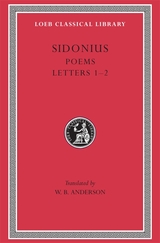 Poems. Letters: Books 1–2
Sidonius
Harvard University Press Belles lettres.
Sidonius Apollinaris, a Gallo-Roman, was born at Lugdunum (Lyon) about AD 430. He married Papianilla, daughter of the Emperor Avitus in whose honor he recited at Rome on 1 January 456 a panegyric in verse. Sidonius later joined a rebellion, it seems, but was finally reconciled to the emperor Majorian and delivered at Lyon in 458 a panegyric on him. After some years in his native land, in 467 he led a Gallo-Roman deputation to the Emperor Anthemius, and on 1 January 468 recited at Rome his third panegyric. He returned to Gaul in 469 and became Bishop of Auvergne with seat at Clermont-Ferrand. He upheld his people in resisting the Visigoths. After Auvergne was ceded to them in 475, he was imprisoned but soon resumed his bishopric. He was canonized after his death.
The Loeb Classical Library edition of Sidonius is in two volumes. The first contains his poetry: the three long panegyrics, and poems addressed to or concerned with friends, apparently written in his youth. Volume I also contains Books 1–2 of his Letters (all dating from before his episcopate); Books 3–9 are in Volume II. Sidonius’ writings shed valued light on Roman culture in the fifth century.
Poems of a Penisist
Mutsuo Takahashi
University of Minnesota Press, 2012 “In the name of / Man, member, / and the holy fluid, / Amen,” begins Mutsuo Takahashi’s epic one-thousand-line erotic fantasy poem, “Ode,” the centerpiece of his groundbreaking collection of queer poetry, Poems of a Penisist. Takahashi’s work, reminiscent of Walt Whitman’s, is a celebration of the male body, treating homosexual desire as something sacred. Stunningly beautiful and passionate, Poems of a Penisist is one of the most important compilations of homoerotic poetry written in the twentieth century.
The Poems of Aimeric de Peguilhan
Aimeric de Peguilhan, edited and translated with introduction and commentary by William P. Shepard and Frank M. Chambers
Northwestern University Press, 1950 Poems of Aimeric de Peguilhan is the first critical, annotated translation in English of the collected work of poet Aimeric de Peguilhan. In it William P. Shepard and Frank M. Chambers provide translations and introductory material to the work of the medieval French troubadour.
 The Poems of Christopher of Mytilene and John Mauropous
Christopher of Mytilene and John Mauropous; edited and translated by Floris Bernard and Christopher Livanos
Harvard University Press, 2018 The witty and self-assertive poetry of Christopher of Mytilene and John Mauropous provides unique snapshots of eleventh-century Constantinople at the height of its splendor and elegance. Their collections, aptly called “various verses,” greatly range in length and style—including epigrams, polemics, encomia, and more—and their poems were written for a broad range of social occasions such as court ceremonies, horse races, contests between schools, and funerals. Some were inscribed on icons and buildings. Many honored patrons and friends, debunked rivals, or offered satirical portraits of moral types in contemporary society. In some remarkable introspective poems, Mauropous carefully shaped a narrative of his life and career, while Christopher’s body of work is peppered with riddles and jocular wordplay. This volume is the first English translation of these Byzantine Greek collections.
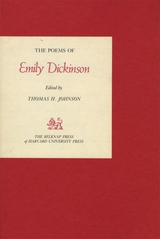 The Poems of Emily Dickinson: Including Variant Readings Critically Compared with All Known Manuscripts
Emily Dickinson
Harvard University Press Interest in Emily Dickinson has grown throughout the years until, now, in this three-volume edition Thomas Johnson presents the entire body of poems she is known to have written, 1775 in all. Here are the familiar “I never saw a Moor” and “Because I could not stop for Death,” along with other less well-known poems, including forty-three never before published. Casual notes to friends and relatives which frequently accompany scraps of verse help to reveal the poet's enigmatic character. After keen analysis of the manuscripts, Johnson has arranged the poems in what is believed to be their chronological order, with variations and rejected versions of each poem following.
In his introduction, the editor discusses the stylistic and historical development of the poetic art of Emily Dickinson, and he considers the manuscripts and the history of the editing of the poems. A careful study of the poet's handwriting is illustrated with several facsimiles. The appendix contains valuable material on the recipients of the poems as well as a subject index and an index of first lines.
 The Poems of Emily Dickinson: Reading Edition
Emily Dickinson
Harvard University Press, 2005 Emily Dickinson, poet of the interior life, imagined words/swords, hurling barbed syllables/piercing. Nothing about her adult appearance or habitation revealed such a militant soul. Only poems, written quietly in a room of her own, often hand-stitched in small volumes, then hidden in a drawer, revealed her true self. She did not live in time but in universals—an acute, sensitive nature reaching out boldly from self-referral to a wider, imagined world.
Dickinson died without fame; only a few poems were published in her lifetime. Her legacy was later rescued from her desk—an astonishing body of work, much of which has since appeared in piecemeal editions, sometimes with words altered by editors or publishers according to the fashion of the day.
Now Ralph Franklin, the foremost scholar of Dickinson's manuscripts, has prepared an authoritative one-volume edition of all extant poems by Emily Dickinson—1,789 poems in all, the largest number ever assembled. This reading edition derives from his three-volume work, The Poems of Emily Dickinson: Variorum Edition (1998), which contains approximately 2,500 sources for the poems. In this one-volume edition, Franklin offers a single reading of each poem—usually the latest version of the entire poem—rendered with Dickinson's spelling, punctuation, and capitalization intact. The Poems of Emily Dickinson: Reading Edition is a milestone in American literary scholarship and an indispensable addition to the personal library of poetry lovers everywhere.
 The Poems of Emily Dickinson: Variorum Edition
Emily Dickinson
Harvard University Press, 1998 Emily Dickinson, poet of the interior life, imagined words/swords, hurling barbed syllables/piercing. Nothing about her adult appearance or habitation revealed such a militant soul. Only poems, written quietly in a room of her own, often hand-stitched in small volumes, then hidden in a desk drawer, revealed her true self. She did not live in time, as did that other great poet of the day, Walt Whitman, but in universals. As she knowingly put it: “There is one thing to be grateful for—that one is one’s self and not somebody else.”
Dickinson lived and died without fame: she saw only a few poems published. Her great legacy was later rescued from her desk drawer—an astonishing body of work revealing her acute, sensitive nature reaching out boldly from self-referral to a wider, imagined world. Her family sought publication of Dickinson’s poetry over the years, selecting verses, often altering her words or her punctuation, until, in 1955, the first important attempt was made to collect and publish Dickinson’s work, edited by Thomas H. Johnson for the Belknap Press of Harvard University Press.
Now, after many years of preparation by Ralph W. Franklin, the foremost scholar of Dickinson’s manuscripts, a new comprehensive edition is available. This three-volume work contains 1,789 poems, the largest number ever assembled. The poems, arranged chronologically, based on new dating, are drawn from a range of archives, most frequently from holographs, but also from various secondary sources representing lost manuscripts. The text of each manuscript is rendered individually, including, within the capacity of standard type, Dickinson’s spelling, capitalization, and punctuation. Franklin gives Dickinson’s alternative readings for the poems, her revisions, and the line and page, or column, divisions in the source. Each entry identifies Franklin’s editorial emendations and records the publication history, including variants. Fourteen appendices of tables and lists give additional information, including poems attributed to Emily Dickinson. The poems are indexed by numbers from the Johnson edition, as well as by first lines.
Franklin has provided an introduction that serves as a guide to this edition and surveys the history of the editing of Dickinson’s poems. His account of how Dickinson conducted her workshop is a reconstruction of a remarkable poetic life.
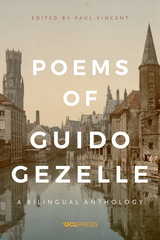 Poems of Guido Gezelle: A Bilingual Anthology
Edited by Paul Vincent
University College London, 2016 The Bruges-born poet-priest Guido Gezelle(1830–1899) is generally considered one of the masters of 19th-century European lyric poetry. At the end of his life and in the first two decades of the 20th century, Gezellewas hailed by the avant-garde as the founder of modern Flemish poetry. His unique voice was belatedly recognised in the Netherlands and often compared with his English contemporary Gerard Manley Hopkins (1844–1889). In this bilingual anthology, award-winning translator Paul Vincent selects a representative picture of Gezelle’soutput, from devotional through narrative, to celebratory and expressionistic. Gezelle’sfavourite themes are childhood, the Flemish landscape, friendship, nature, religion and the Flemish vernacular, and his apparently simple poems conceal a sophisticated prosody and a dialogue with spiritual and literary tradition. However, an important barrier to wider international recognition of his lyric genius up to now has been the absence of translations that do justice to the vigour and musicality of Gezelle’sWest Flemish idiom. Two of the translations included go some way to redressing the balance: ‘TheWatter-Scriever’ by Scotland’s national poet Edwin Morgan and ‘A Little Leaf . . .’ by Francis Jones. Both translators make brilliant use of their own vernaculars (Glaswegian and North Yorkshire respectively) to bring Gezelleto life for the non-Dutch-speaking reader.
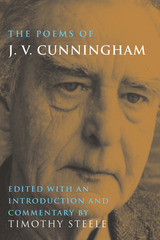 The Poems of J. V. Cunningham
Timothy Steele
Ohio University Press, 1997 The lifework in verse of one of the century’s finest and liveliest American poets, this collection of the poems of J. V. Cunningham (1911-85) documents the poet’s development from his early days as an experimental modernist during the Depression to his emergence as the master of the classical “plain style”—distinguished by its wit, feeling, and subtlety. Often identified with the epigram—a genre in which he excelled as distinctively as Jonson, Herrick, and Landor—Cunningham also wrote in a wide range of other poetic forms and was a remarkable translator. This collection, designed to show the poet’s range and skill, incorporates the materials of his 1971 Collected Poems and Epigrams and restores their original arrangement. It also adds many of his later poems and translations and some uncollected pieces from his periodicals. Timothy Steele’s notes and introduction assist in re-establishing Cunningham’s position as a twentieth-century original, a poet who is remembered equally for emotional power and stylistic purity.
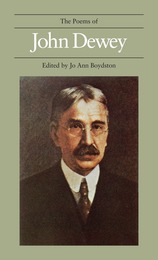 The Poems of John Dewey
Edited by Jo Ann Boydston
Southern Illinois University Press, 1977 A literary discovery of considerable magnitude, these 98 previously unpublished poems by John Dewey, written principally in the 1910–18 period, illuminate an emotive aspect in his intellectual life often not manifest in the prose works. Rumors of the existence of the poems have circulated among students of Dewey’s life and writings since 1957,when Mrs. Roberta Dewey gained possession of them from the Columbia University Columbiana collection. But except for the few persons who saw copies made by the French scholar Deladelle five years after Dewey’s death, the poems have remained inaccessible until now. None of the poems has hitherto been published. Mrs. Roberta Dewey and Dewey’s children from his first marriage seem not to have known of Dewey’s experiments in verse during his lifetime. And, as evidence presented here now shows, only two or three acquaintances knew of actual poems written by Dewey, one of them the Polish-American novelist Anzia Yezierska, who had a brief emotional involvement with Dewey in the 1917–18 period. The factual, rather than inferential, evidence of Dewey’s relationship with Anzia Yezierska appears in the poems, which, taken as a whole, provide revealing insights into Dewey’s feelings and illuminate not only aspects of his emotions but of his thought as well. The fact that Dewey did not publish the poetry himself, together with the circumstances of its discovery and unusual history, has led to the exceptionally careful editorial treatment of the poems given here. Scholars will find all the evidence for the authorship of the manuscripts clearly presented and all the changes and alterations carefully recorded. This edition has received the Modern Language Association of America Center for Editions of American Authors Seal as an “approved text.”
 The Poems of John Keats
John Keats
Harvard University Press, 1978 Here at last is the definitive Keats—an edition of John Keats’s poems that embodies the readings the poet himself most probably intended. The culmination of a tradition of literary and textual scholarship, it is the work of the one scholar best qualified to do the job.
Largely because of the wealth and complexity of the manuscript materials and the frequency with which first printings were based on inferior sources, there has never been a thoroughly reliable edition of Keats. Indeed, in The Texts of Keats’s Poems Jack Stillinger demonstrated that fully one third of the poems as printed in current standard editions contain substantive errors. This edition is the first in the history of Keats scholarship to be based on a systematic investigation of the transmission of the texts. The readings given here represent in each case, as exactly as can be determined, the version that Keats preferred. The chronological arrangement of the poems and the full record of variants and manuscript alterations (presented in a style that will be clear to the general reader as well as useful to the scholar) display the development of Keats’s poetic artistry. Notes at the back provide dates of composition, relate extant manuscripts and early printings, and explain the choices of texts.
The London Times said of Stillinger’s earlier study of the texts: “Thanks to Mr. Stillinger a revolution in Keats studies is at hand.” Here is the crucial step in that revolution.
Poems of Love and Marriage
John Ciardi
University of Arkansas Press, 1989 Collected from his published and heretofore unpublished work, the love poems of John Ciardi in Poems of Love and Marriage are a rich display of gentle wit, emotion, and craft. Not merely lyrics of youthful romance, these span the course of a love affair, of a life shared from first blush to old age. These poems never disturb the sanctity of the private moment, but transcend the specific situation and bloom into universal recognition. And in his usual way of basking in those qualities which transform the ordinary into the unique, John Ciardi finds poignancy and truth in those elements of love and living together that so often go unnoticed.
The Poems of Renata Ferreira
Frank X. Gaspar
Tagus Press, 2020 Renata Ferreira's poems were composed in the final years of Portugal's fascist regime, exposing and subverting the government's draconian edicts against women's rights, sexual freedoms, political dissent, and progressive thought. While she worked in the resistance as a clandestine writer, passing hand-typed bulletins and banned literature throughout Lisbon, her poetry is unmistakably ardent, tender, fraught, erotic, and Sapphic. Presenting the poems of this Portuguese-American writer and detailing their surprising rediscovery in 2015, Frank X. Gaspar fuses genres, flouts borders, and brings to life a voice that had been silenced by history and happenstance. As his inventive narrative unfolds, Ferreira emerges, whole and mysterious, offering up her history, her passions, and her art.
The Poems of St. John of the Cross
St. John of the Cross
University of Chicago Press, 1979 San Juan de la Cruz, the great sixteenth-century Spanish mystic, is regarded by many as Spain's finest poet. Passionate, ecstatic, and spiritual, his poems are a blend of exquisite lyricism and profound mystical thought. In The Poems of St. John of the Cross John Frederick Nims presents his superlative translation of the complete poems, re-creating the religious fervor of St. John's art.
This dual-language edition makes available the original Spanish from the Codex of Sanlúcon de Barrameda with facing English translations. The work concludes with two essays—a critique of the poetry and a short piece on the Spanish text that appears alongside the translation—as well as brief notes on the individual poems.
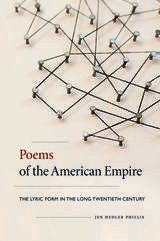 Poems of the American Empire: The Lyric Form in the Long Twentieth Century
Jen Hedler Phillis
University of Iowa Press, 2019 Poems of the American Empire argues that careful attention to a particular strain of twentieth-century lyric poetry yields a counter-history of American global power. The period that Phillis covers—from Ezra Pound’s A Draft of XXX Cantos in 1930 to Cathy Park Hong’s Engine Empire in 2012—roughly matches what some consider the ascent and decline of the American empire. The diverse poems that appear in this book are united by their use of epic forms in the lyric poem, a combination that violates a fundamental framework of both genres’ relationship to time. This book makes a groundbreaking intervention by insisting that lyric time is key to understanding the genre. These poems demonstrate the lyric form’s ability to represent the totality of history, making American imperial power visible in its fullness. Neither strictly an empty celebration of American exceptionalism nor a catalog of atrocities, Poems of the American Empire allows us to see both.
Poems of the First Buddhist Women: A Translation of the Therigatha
Charles Hallisey
Harvard University Press, 2021 A stunning modern translation of a Buddhist classic that is also one of the oldest literary texts in the world written by women.
The Therīgāthā is one of the oldest surviving literatures by women, composed more than two millennia ago and originally collected as part of the Pali canon of Buddhist scripture. These poems were written by some of the first Buddhist women—therīs—honored for their religious achievements. Through imaginative verses about truth and freedom, the women recount their lives before ordination and their joy at attaining liberation from samsara. Poems of the First Buddhist Women offers startling insights into the experiences of women in ancient times that continue to resonate with modern readers. With a spare and elegant style, this powerful translation introduces us to a classic of world literature.
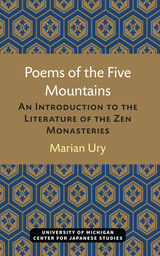 Poems of the Five Mountains: An Introduction to the Literature of the Zen Monasteries
Marian Ury
University of Michigan Press, 1992 This second, revised edition of a pioneering volume, long out of print, presents translations of Japanese Zen poems on sorrow, old age, homesickness, the seasons, the ravages of time, solitude, the scenic beauty of the landscape of Japan, and monastic life. Composed by Japanese Zen monks who lived from the last quarter of the thirteenth century to the middle of the fifteenth century, these poems represent a portion of the best of the writing called in Japanese gozan bungaku, “literature of the five mountains.” “Five mountains” or “five monasteries” refers to the system by which the Zen monasteries were hierarchically ordered and governed. For the monks in the monasteries, poetry functioned as a means not only of expressing religious convictions and personal feelings but also of communicating with others in a civilized and courteous fashion. Effacing barriers of time and space, the practice of Chinese poetry also made it possible for Japanese authors to feel at one with their Chinese counterparts and the great poets of antiquity. This was a time when Zen as an institution was being established and contact with the Chinese mainland becoming increasingly frequent—ten of the sixteen poets represented here visited China. Marian Ury has provided a short but substantial introduction to the Chinese poetry of Japanese gozan monasteries, and her translations of the poetry are masterful. Poems of the Five Mountains is an important work for anyone interested in Japanese literature, Chinese literature, East Asian Religion, and Zen Buddhism.
Poems Of The River Spirit
Maurice Kilwein Guevara
University of Pittsburgh Press, 1996 The locales of these poems range from the mountains of western Pennsylvania to the Andes, the subjects from memories of Kilwein Guevara’s native Colombia to a New York street scene. What characterizes all of them is precise and surprising language, a brilliance of effect, that establishes him as one of the most original young American poets.
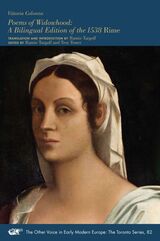 Poems of Widowhood: A Bilingual Edition of the 1538 "Rime"
Vittoria Colonna
Iter Press, 2021 Vittoria Colonna’s 1538 Rime, originally issued without her permission by a small Parma press, was the first of many editions of her poetry published during her lifetime. Born into one of the most powerful families in Rome and connected to many of the great political, religious, and artistic figures of the period, Colonna was uniquely positioned to transform the landscape of women’s writing. The first woman to see her own poems appear in print in a single-author volume, she led the way for hundreds of other women of her time to publish their own works. Comprising more than one hundred and forty sonnets and two canzoni, the Rime expresses Colonna’s anguish over the loss of her husband and her struggle both to preserve his memory and secure her own future.
This volume presents the first complete English translation of the 1538 Rime and restores the original Italian texts from the blemished Parma printing and later composite editions, a boon to readers of both languages.
The Poems of William Herbert, Third Earl of Pembroke
William Herbert
Iter Press, 2023 A collection of poems by a pivotal figure in the literary culture of Stuart England.
William Herbert, Third Earl of Pembroke, was a pivotal figure in the literary and political cultures of Stuart England. He wrote poetry primarily for social occasions: A debate with a friend, seductions or apologies to beloveds, or support for a deceased political ally. This volume collects his work along with an introduction, detailed notes, and other apparatus that explore the networks in which the poems circulated, the interpretive contexts suggested in miscellanies, and alternative readings revealed through scribal variants. The book also features five contemporary musical settings.
Poems Old & New 1918-1978
Janet Lewis
Ohio University Press, 1981 Kenneth Rexroth wrote: “Janet Lewis uses reason to veil and adorn the flesh of feeling and intuition. This is the way the greatest poetry has always been written.”
The poems in this collection range over a period of 60 years. The style is spare, direct, cutting to the core of subject. Richness of intelligence and a concern for the human has also characterized every phase of Lewis’ development.
Poems Talking to Poems: Setting Your Poetry Manuscript Apart
Edited by Jeffrey Levine and Kristina Marie Darling
Tupelo Press, 2025 This handbook demystifies the process of crafting a full-length poetry collection.
Poems Talking to Poems presents practical guidance for sequencing, structure and architecture, revision, and choosing titles for sections as well as the poetry manuscript as a whole. This guide also includes insider tips about how contests work, the literary marketplace, and how you can set your work apart.
With essays by such literary luminaries as Ilya Kaminsky, Katie Farris, Kristina Marie Darling, Jeffrey Levine, and many other distinguished contributors, this anthology is a concise and comprehensive field guide to perfecting your book and getting it into print.
Poems: The Canon
C. P. Cavafy
Harvard University Press, 2011 C. P. Cavafy (Konstantinos Petrou Kavafis) is one of the most important Greek poets since antiquity. He was born, lived, and died in Alexandria (1863–1933), with brief periods spent in England, Constantinople, and Athens. Cavafy set in motion the most powerful modernism in early twentieth-century European poetry, exhibiting simple truths about eroticism, history, and philosophy—an inscrutable triumvirate that informs the Greek language and culture in all their diachrony. The Cavafy Canon plays with the complexities of ironic Socratic thought, suffused with the honesty of unadorned iambic verse.
Based on a fifty-year continuous scholarly and literary interaction with Cavafy’s poetry and its Greek and western European intertexts, John Chioles has produced an authoritative and exceptionally nuanced translation of the complex linguistic registers of Cavafy’s Canon into English.
Poems, Volume 1
Prudentius
Catholic University of America Press, 1962 No description available
Poems, Volume 2
Prudentius
Catholic University of America Press, 1965 No description available
Poems While We Dream: Sonnets and Songs
Roger Armbrust
Parkhurst Brothers, Inc., 2021 Armbrust writes sonnets on a variety of themes, primarily addressed to his muse and his lovers. Since 1979, when his first book of poetry went to press, he continues to write, as if he opens a vein to pour his own blood onto the page to do it.
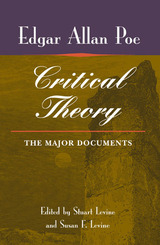 Poe's Critical Theory: THE MAJOR DOCUMENTS
Edgar Allan Poe
University of Illinois Press, 2007 Edgar Allan Poe’s reputation as an enduring and influential American literary critic rests mainly upon the pieces in this edition. Editors Stuart Levine and Susan F. Levine provide reading texts, detailed explanatory footnotes, variant readings, and introductions to show context. They also face frankly the contradictions in Poe’s critical dicta. Poetry is for pleasure, not truth, Poe says, but argues that poetic inspiration leads to truth. Great works, Poe says, result from studied calculation, but also from irrational, supernal sources. Both biting critic and doughty defender of American artistic achievement, Poe was contemptuous of democratic art, except when he manned the barricades in its defense. Critical Theory highlights such conflicting ideas and suggests why they are present.
This edition shows that what is consistent in Poe is not any single theory. Rather, always present are wit, playfulness, concern for the strong effect, a bin of recyclable allusions, anecdotes and quotations, and a writer’s discipline. His writing on theory is of a piece with his fiction, poetry, and journalism. The Levines explain how these pieces also tie in tightly to the social, political, economic, and technological history of the world in which Poe lived.
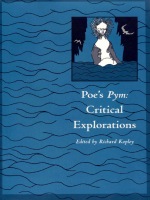 Poe's Pym: Critical Explorations
Richard Kopley, ed.
Duke University Press, 1992 "The interpreter's dream-text," as one critic called Edgar Allan Poe's The Narrative of Arthur Gordon Pym has prompted critical approaches almost as varied as the experiences it chronicles. This is the first book to deal exclusively with Pym, Poe's longest fictional work and in many ways his most ambitious. Here leading Poe scholars provide solutions and interpretations for many challenging enigmas in this mysterious novel. The product of a decade of research and planning, Poe's "Pym" offers a factual basis for some of the most fantastic elements in the novel and uncovers surprising connections between Poe's text and exploration literature, nautical lore, Arthurian narrative, nineteenth-century journalism, Moby Dick, and other writings. Representing a rich cross-section of current modes of literary study—from source study to psychoanalytic criticism to new historicism—these sixteen essays probe issues such as literary influence, the limits of language, racism, the holocaust, prolonged mourning, and the structure of the human mind. Poe's "Pym" will be an invaluable resource for students of both contemporary criticism and nineteenth-century American culture. Contributors. John Barth, Susan F. Beegel, J. Lasley Dameron, Grace Farrell, Alexander Hammond, David H. Hirsch, John T. Irwin, J. Gerald Kennedy, David Ketterer, Joan Tyler Mead, Joseph J. Moldenhauer, Carol Peirce, Burton R. Pollin, Alexander G. Rose III, John Carlos Rowe, G. R. Thompson, Bruce I. Weiner
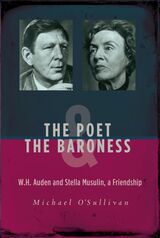 The Poet & the Baroness: W.H. Auden and Stella Musulin, a Friendship
Michael O'Sullivan
Central European University Press, 2023 For long periods in history, the Austrian capital found itself on the geographical edge of western civilisation. Yet from the 18th century on, Vienna has been a vibrant centre of European culture. This city is the scene of the formidable meeting of the two outstanding intellectuals that are at the core of this book. The warm relationship between W.H. Auden, the celebrated British-American poet (1907–1973), and his fellow expatriate, the Welsh-Austrian journalist, translator and writer Stella Musulin (1915–1996) lasted while Auden resided in the nearby small town of Kirchstetten starting in 1958. It was here that the poet was laid to rest in the autumn of 1973. This book is based on the unpublished letters of Auden to Musulin and her private journals. The study of this inspiring material yields new insights into Auden’s last, prolific, creative period and underscores the ‘Austrian Auden.’ In addition, Michael O’Sullivan pays tribute to the closest ‘Austrian’ friend of the poet. Baroness Stella von Musulin was an intellectual whose two books for Faber & Faber are acknowledged as classics: Vienna in the Age of Metternich and Austria: People & Landscape (with a foreword by Auden). The author situates the close relationship of two individuals in the context of Austria’s complex political, social, and cultural history in the Cold War years.
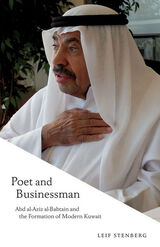 Poet and Businessman: Abd al-Aziz al-Babtain and the Formation of Modern Kuwait
Leif Stenberg
Gingko, 2022 A history of contemporary Kuwait as seen through the life of an individual Kuwaiti.
This book reviews and analyzes the modern history of Kuwait through the life of Abd al-Aziz Sa‘ud al-Babtain, a wealthy businessman, philanthropist, and poet. He is the head of a large, influential international cultural foundation based in Kuwait City. Abd al-Aziz’s life story tightly interweaves with modern discussions on the history of the state of Kuwait. There are very few books taking a collective grip on the history of the state of Kuwait. Likewise, there are very few studies about the generation of Gulf individuals who experienced, benefitted from, and even suffered from the discovery of oil, and who has been a crucial part of socioeconomic and cultural developments in countries like Kuwait in recent history. By constructing a cohesive overview of the modern history of Kuwait enriched by the life of an individual that has lived through the better part of that particular history, this book fills a lacuna in contemporary scholarship on the Middle East, and especially the Arabian or the Persian Gulf.
The Poet and Dream Girl: The Love Letters of Lilian Steichen and Carl Sandburg
Edited by Margaret Sandburg
University of Illinois Press, 1987 "These letters reveal the thoughts of two fine, strong minds drawn to each other first by their interest in socialism, then by their love of poetry and a similarity of ethics and ideals. My mother recognized this in his early prose and poetry. They learned so much about each other from these letters, yet it seems extraordinary that there was so little personal contact."-- From the introduction by Margaret Sandburg
 Poet and Hero in the Persian Book of Kings: Third Edition
Olga M. Davidson
Harvard University Press Poet and Hero in the Persian Book of Kings presents a far-reaching reassessment of the classical Persian epic known as the Shahnama or “Book of Kings,” composed by the poet Ferdowsi in the early eleventh century ce. Combining comparative perspectives with a close reading of the internal evidence provided by the text of this epic, Olga M. Davidson argues that the poet of the Shahnama is actually a character in the epic, coexisting with ancient Iranian heroes and kings whose deeds are celebrated by the poetry. The poet can have the role of a character because his poetry comes to life in performance. Whenever the Shahnama was performed by the poet or by later practitioners of his poetry, the performer could interact with his grand characters by re-engaging with their stories, as if for the first time. After documenting the oral poetic performance traditions underlying the text of the Shahnama in all its variations, Davidson argues that the heroic tradition of this epic is deeply ancient, stemming from Indo-European poetic traditions. A primary example is the great warrior Rostam, who upholds Iranian kingship while at the same time posing a threat to kings who prove unworthy of the crown.
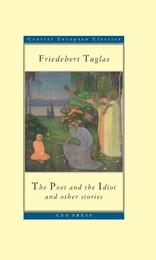 The Poet and the Idiot
Friedebert Tuglas
Central European University Press, 2007 Estonian literature in its written form is little more than a century old. As Estonia was part of the Russian Empire, then of the Soviet Union, it is something of a miracle that the powerful presence of the Baltic Germans, the periods of Russification, and other more subtle forms of cultural pressure, have not eradicated Estonian as a serious literary language. One of the central figures to credit for this was Friedebert Tuglas. The nine stories, and the essay, featured here were written during the World War One, or in the first years of Estonian independence in the early 1920s. They reflect the troubled spirit of the times, but exhibit the influence of a wide selection of writers, ranging from O. Wilde and M. Gorky, to F. Nietzsche and Edgar Allan Poe. The subject matter of Tuglas' stories represented here ranges from a starving prisoner, via a luckless pharmacist's hallucinations from childhood, a wandering soldier who encounters weird spirits, to a young man sitting in a park, accosted by a devilish lunatic who wants to introduce a new brand of devil worship to the world.
 The Poet and the King: Jean de la Fontaine and his Century
Marc Fumaroli
University of Notre Dame Press, 2002 The Poet and the King, described by the New York Review of Books as "the finest and most perceptive of all the innumerable accounts of La Fontaine," is being offered for the first time in an English translation. La Fontaine, whose works are still memorized by French schoolchildren, is regarded by Fumaroli, and countless others, as the greatest French lyric poet of the seventeenth century. La Fontaine is best known, however, for his fables and Contes.
Marc Fumaroli's grand study is almost as much about Louis XIV as it is about La Fontaine. He provides a detailed analysis of the absolutist politics and attempts by the king and his ministers to enforce an official cultural style. Fumaroli's work is a meditation on the plight of the artist under such a ruler during the imposition of a tyrannical, centralized political regime.
Of particular interest to Fumaroli is Nicolas Foucquet, whose fall from power is the central event of the book. Foucquet, La Fontaine's patron, was arrested and imprisoned by order of Louis XIV on false charges of embezzlement and treason. For La Fontaine, the arrest was a disaster. Foucquet had generously supported and protected La Fontaine, who remained loyal to him for decades, helping in his defense and writing pleas for pardon. Many of Foucquet's associates were arrested. Others, including La Fontaine, prudently left town.
During the reign of Louis XIV, the basic role of literature in the eyes of the court was that of an official propaganda machine. The royal cultural policy supported only tragedy and the heroic ode, and demanded works that praised the king. In the years that followed Foucquet's arrest, La Fontaine had to rely on support from groups unconnected with the government, including Jansenists, Protestants, and the libertine, homosexual circle of the Duc de Vendôme.
Fumaroli reads history with an eye on the modern world. His La Fontaine and his Foucquet, his world of free culture in opposition to state power, are models for the liberal vision of the possible role of culture in modern society. The Poet and the King offers not only a captivating history of one of France's greatest poets, but also carries the message that great literature and art can be created in spite of repressive cultural and political regimes.
MARC FUMAROLI is professor of Rhetoric and Society in Europe at the College de Francé and a former visiting fellow at the Institute for Advanced Study, Princeton. He is the editor of Histoiré de la rhetorique deans L'Europe moderne, 1450-1950 and a member of the Académie Française.
----------
"Marc Fumaroli is one of France's most distinguished scholars. In this work, he has written a book--placing La Fontaine in the context of Louis XIV's magnificent court and the great aristocracy of the seventeenth century--that is accessible to a broad audience." --Robert Morrissey, professor of French literature, University of Chicago
Reviews of UNDPress translation:
The Poet and the King not only offers a history of one of France's greatest poets but also carries the message that great literature and art can be created in spite of repressive cultural and political regimes." -- Translation Review, Vol. 8, No. 2, Dec. 2002
"Fumaroli ... is a gifted writer who deftly weaves La Fontaine's personal history with the broader cultural and political events in France. Readers ... will appreciate this engrossing account of the struggles of a creative man against a smothering tyranny." --Booklist, May 1, 2002
"Fumaroli lucidly and thoroughly studies the role of the poet in speaking to the sycophants of power and fashion . . . Neither a biography nor a literary critique but a study of power, this work is highly recommended for anyone interested in the bridge between aesthetics before and after the French Revolution and particularly how the 17th century remains intensely alive in contemporary thought." --Library Journal, June 1, 2002
" . . . a fascinating account. . . The Poet and the King, written by a brilliant scholar who can see the grand designs behind the events he describes, should prove rewarding both for readers interested in life under Louis XIV, and for lovers of French culture in general." --The Times Literary Supplement, October 25, 2002
"One comes away from a reading of The Poet and the King with a new appreciation of the meaning and value of La Fontaine's poetry and of its place in the cultural history of his times."--H-France Reviews, May 19, 2003
"Even for readers uninterested in La Fontaine and his career, this book is invaluable as a fully researched and masterfully constructed case study of literary politics and survival in an increasingly authoritarian state. Should that not be enough, there are the undeniable pleasures of Fumaroli's dense, resonant, and allusive prose, which alone would justify his eminence on the French literary (as well as academic) scene."--Virginia Quarterly Review, July 2003, Vol. 79, No. 3
"...an original and largely persuasive presentation of the reign of Louis XIV as the end of the Renaissance, and as the inauguration of the modern insistence on mobilization of the intellectual resources of the state for its political ends."--Renaissance Quarterly
Reviews of the French edition:
"Marc Fumaroli has written the finest and most perceptive of all the innumerable accounts of La Fontaine." --The New York Review of Books
"Fumaroli... has produced a biographical reading that is singularly rich and illuminating." --American Historical Review, October 2003
The Poet and the Sailor: The Story of My Friendship with Carl Sandburg
Kenneth Dodson. Edited by Richard Dodson. Foreword by Penelope Niven
University of Illinois Press, 2006 Two friends, a lifetime of letters, and an intimate look at a literary icon Carl Sandburg first encountered Kenneth Dodson through a letter written at sea during World War II. Though Dodson wrote the letter to his wife, Letha, Sandburg read it in tears and told her, "I've got to meet this man." Composed primarily of their correspondence that continued until Sandburg's death in 1967, The Poet and the Sailor is a chronicle of the deep friendship that followed. Ranging over anything they found important, from writing to health and humor, the letters are arranged by Richard Dodson and are accompanied by a foreword from Sandburg's noted biographer, Penelope Niven.
 The Poet as Mythmaker: A Study of Symbolic Meaning in Taras Ševčenko
George G. Grabowicz
Harvard University Press, 1982 Taras Ševčenko (1814–1861) is the central figure in modern Ukrainian literature, but despite the enormous attention that has been devoted to his person, his work, and his role in Ukrainian history and the Ukrainian national renascence, the core of the Ševčenko phenomenon—the symbolic nature of his poetry—has received little systematic analysis.
As this book argues, myth serves as the underlying code and model of Ševčenko’s poetic universe. Examining the structures and paradigms of Ševčenko’s mythical thought provides answers for various crucial and heretofore intractable questions, such as those concerning the relation of his Ukrainian poetry to his Russian prose, his sense of a transcendent “curse” and “guilt” in the Ukrainian past and present, the interrelation of his revolutionist fervor with his apparent providentialism, or of the tension between the nativism and the universalism of his poetry.
Moreover, it is through the structures of his mythical thought that we can understand Ševčenko’s “prophecy,” in effect, his millenarian vision. In this framework, too, the author focuses on the religious tenor of Ševčenko’s poetry, in which he is both expiator and carrier of the Word, and, finally, on the reception—indeed the cult of Ševčenko among generations of Ukrainians.
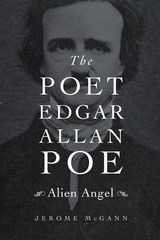 The Poet Edgar Allan Poe: Alien Angel
Jerome McGann
Harvard University Press, 2014 The poetry of Edgar Allan Poe has had a rough ride in America, as Emerson’s sneering quip about “The Jingle Man” testifies. That these poems have never lacked a popular audience has been a persistent annoyance in academic and literary circles; that they attracted the admiration of innovative poetic masters in Europe and especially France—notably Baudelaire, Mallarmé, and Valéry—has been further cause for embarrassment. Jerome McGann offers a bold reassessment of Poe’s achievement, arguing that he belongs with Whitman and Dickinson as a foundational American poet and cultural presence.
Not all American commentators have agreed with Emerson’s dim view of Poe’s verse. For McGann, a notable exception is William Carlos Williams, who said that the American poetic imagination made its first appearance in Poe’s work. The Poet Edgar Allan Poe explains what Williams and European admirers saw in Poe, how they understood his poetics, and why his poetry had such a decisive influence on Modern and Post-Modern art and writing. McGann contends that Poe was the first poet to demonstrate how the creative imagination could escape its inheritance of Romantic attitudes and conventions, and why an escape was desirable. The ethical and political significance of Poe’s work follows from what the poet takes as his great subject: the reader.
The Poet Edgar Allan Poe takes its own readers on a spirited tour through a wide range of Poe’s verse as well as the critical and theoretical writings in which he laid out his arresting ideas about poetry and poetics.
Poet in Andalucia
Nathalie Handal
University of Pittsburgh Press, 2012 Frederico García lived in Manhattan from 1929 to 1930, and the poetry he wrote about the city, Poet in New York, was posthumously published in 1940. Eighty years after Lorca’s sojourn to America, Nathalie Handal, a poet from New York, went to Spain to write Poet in Andalucía. Handal recreated Lorca’s journey in reverse.
The Poet Without a Name: Gray's Elegy and the Problem of History
Henry Weinfield
Southern Illinois University Press, 1991
Henry Weinfield offers a new reading not only of the Elegy itself but also of its place in English literary history. His central argument is that in Gray’s Elegy the thematic constellation of poverty, anonymity, alienation, and unfulfilled potential—or what Weinfield calls the "problem of history"—is fully articulated for the first time, and that, as a result, the Elegy represents an important turning-point in the history of English poetry.
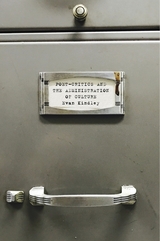 Poet-Critics and the Administration of Culture
Evan Kindley
Harvard University Press, 2017 The period between 1920 and 1950 saw an epochal shift in the American cultural economy. The shocks of the 1929 market crash and the Second World War decimated much of the support for high modernist literature, and writers who had relied on wealthy benefactors were forced to find new protectors from the depredations of the free market. Private foundations, universities, and government organizations began to fund the arts, and in this environment writers were increasingly obliged to become critics, elucidating and justifying their work to an audience of elite administrators.
In Poet-Critics and the Administration of Culture, Evan Kindley recognizes the major role modernist poet-critics played in the transition from aristocratic patronage to technocratic cultural administration. Poet-critics developed extensive ties to a network of bureaucratic institutions and established dual artistic and intellectual identities to appeal to the kind of audiences and entities that might support their work. Kindley focuses on Anglo-American poet-critics including T. S. Eliot, Marianne Moore, W. H. Auden, Archibald MacLeish, Sterling A. Brown, and R. P. Blackmur. These artists grappled with the task of being “village explainers” (as Gertrude Stein described Ezra Pound) and legitimizing literature for public funding and consumption.
Modernism, Kindley shows, created a different form of labor for writers to perform and gave them an unprecedented say over the administration of contemporary culture. The consequences for our understanding of poetry and its place in our culture are still felt widely today.
 Poetic and Performative Memory in Ancient Greece: Heroic Reference and Ritual Gestures in Time and Space
Claude Calame
Harvard University Press, 2009 Philosophers have often reflected on the Ancient Greeks' concepts of time, but an anthropological approach is necessary to understand their practical concept of time as tied to space. The Greeks not only spoke of time unfolding in a specific space, but also projected the past upon the future in order to make it active in the social practice of the present. Hesiod's history of humanity was intended to establish justice in the modern city; Bacchylides sang the celebration of the Athenian hero Theseus in a present-day cultic and ideological framework; the city of Cyrene used the heroic act of its founding to reaffirm its civic identity; and the Greeks embossed poetic texts on leaves of gold to ensure the ritual passage of the dead to a blessed afterlife. Explicating these examples, Poetic and Performative Memory in Ancient Greece shows how the Ancient Greeks' collective memory was based on a remarkable faculty for the creation of ritual and narrative symbols.
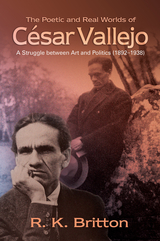 The Poetic and Real Worlds of Cesar Vallejo: A Struggle between Art and Politics (1892-1938)
R. K. Britton
Sussex Academic Press, 2022 The world-renowned Peruvian poet Cesar Vallejo (1892-1938) was also a journalist, essayist, novelist and would-be dramatist. The study of his life and work reveals problems stemming from the fact that half of his writing was published posthumously under editorship of doubtful accuracy. The matter is further complicated in that his non-poetic work has been neglected in favour of his verse. The Poetic and Real Worlds of Cesar Vallejo (1892-1938) reviews the evidence-literary and historical-and assesses the often conflicting body of opinion his work has generated. Three essential questions are pertinent: Where should Vallejo be placed in the canon of twentieth-century modernism? What effect did his mid-life conversion to Communism have on his writing? How should his prose fiction, journalism, and essays be assessed in relation to his poetry? There are few writers whose literary output follows the twists and turns of their lives more closely than Cesar Vallejo's. This new, comparative study maps his career onto the cultural, social, political, and historical backdrop to his life in Peru, France, Spain, and Russia, and analyzes his writings in the light of his life circumstances. Vallejo's journey from Peru, the cultural "periphery", to the "centre" of interwar Paris, his experience of European capitalism during the Depression, and the confrontation of Communism and Fascism ultimately played out in the Spanish Civil War, forced him to wage a personal struggle to reconcile art with life and politics. This challenge is fought out in different ways in his various writings, but nowhere more movingly, passionately, and humanely than in his posthumous poetry. [Subject: Biography, Literary Criticism, Latin American Studies, Modernism]
Poetic Cinema and the Spirit of the Gift in the Films of Pabst, Parajanov, Kubrick and Ruiz
Laleen Jayamanne
Amsterdam University Press, 2021 Poetic Cinema and the Spirit of the Gift in the Films of Pabst, Parajanov, Kubrick and Ruiz explores the poetic thinking of these master filmmakers. It examines theoretical ideas, including Maori anthropology of the gift and Sufi philosophy of the image, to conceive film as abundant gift. Elaborating on how this gift may be received, this book imagines film as our indispensable mentor - a wild mentor who teaches us how to think with moving images by learning to perceive evanescent forms that simply appear and disappear.
Poetic Closure: A Study of How Poems End
Barbara Herrnstein Smith
University of Chicago Press, 1971 In Poetic Closure, distinguished literary scholar Barbara Herrnstein Smith explores the provocative question: How do poems end? To answer it, Smith examines numerous individual poems and examples of common poetic forms in order to reveal the relationship between closure and the overall structure and integrity of a poem. First published in 1968, Smith’s book remains essential reading in poetic theory.
“Ranging from Elizabethan lyric through free and syllabic verse and concrete poetry, Poetic Closure is a learned, witty, and richly illustrated study of the behavior of poems. . . . It can be read, enjoyed, studied by people who like reading poetry, including—I would suspect—poets.”—Richard M. Elman, New York Times Book Review
 Poetic Creation: Inspiration or Craft
Carl FehrmanTranslated by Karin Petherick
University of Minnesota Press, 1980 Poetic Creation was first published in 1980. Minnesota Archive Editions uses digital technology to make long-unavailable books once again accessible, and are published unaltered from the original University of Minnesota Press editions. Myths of creativity have changed throughout Western literary history. The Romantic era cherished the idea of creativity as a spontaneous, unpremeditated act, closely related to improvisation. In the twentieth century the myth of the writer as a worker among workers has competed with the Surrealist myth of the spontaneous author who writes in a sort of trance. Yet there can be no doubt that the creative process as such crosses historical boundaries. Carl Fehrman devotes this book to the process of artistic creativity, focusing on the dichotomy between inspiration and effort and using texts and manuscripts from the period of early Romanticism to present. Fehrman is primarily concerned with the creativity of poets and draws on authorial accounts of the process, the analysis of manuscripts in successive drafts, psychological and linguistic experiments in creativity, and accounts of creativity in other fields. At the heart of the book are case studies: on Coleridge's writings of "Kubla Khan," Poe's composition of "The Raven," And Valery's account of his prolonged work on "Le Cimetiere Marin." Fehrman also deals with literary works that have undergone genre transformation, Ibsen's Brand and Selma Lagerlof;s Gosta Berlings Saga. In closing chapters he draws upon his case studies and other materials to provide fascinating insights into both productivity and its converse, blocked creativity, and in this context discusses the general problem of periodicity in a creative life. Fehrman works within a Swedish aesthetic tradition which has attracted philosophers, art historians, and literary scholars since the turn of the century, all of them intent on discovering the origins of the work of art. This translation brings his work to Englishspeaking literary scholars and will be of special interest to those concerned with comparative aesthetics and the creative process.
The Poetic Edda
Translated by Lee M. Hollander
University of Texas Press, 1962 The Poetic Edda comprises a treasure trove of mythic and spiritual verse holding an important place in Nordic culture, literature, and heritage. Its tales of strife and death form a repository, in poetic form, of Norse mythology and heroic lore, embodying both the ethical views and the cultural life of the North during the late heathen and early Christian times. Collected by an unidentified Icelander, probably during the twelfth or thirteenth century, The Poetic Edda was rediscovered in Iceland in the seventeenth century by Danish scholars. Even then its value as poetry, as a source of historical information, and as a collection of entertaining stories was recognized. This meticulous translation succeeds in reproducing the verse patterns, the rhythm, the mood, and the dignity of the original in a revision that Scandinavian Studies says "may well grace anyone's bookshelf."
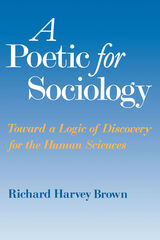 A Poetic for Sociology: Toward a Logic of Discovery for the Human Sciences
Richard Harvey Brown
University of Chicago Press, 1989 For too long, argues Richard Harvey Brown, social scientists have felt forced to choose between imitating science's empirical methodology and impersonating a romantic notion of art, the methods of which are seen as primarily a matter of intuition, interpretation, and opinion. Developing the idea of a "cognitive aesthetic," Brown shows how both science and art—as well as the human studies that stand between them—depend on metaphoric thinking as their "logic of discovery" and may be assessed in terms of such aesthetic criteria of adequacy as economy, elegance, originality, scope, congruence, and form.
By recognizing this "aesthetic" common ground between science and art, Brown demonstrates that a fusion can be achieved within the human sciences of these two principal ideals of knowledge—the scientific or positivist one and the artistic or intuitive one. A path, then, is opened for creating a knowledge of ourselves and society which is at once objective and subjective, at once valid scientifically and significantly humane.
 A Poetic Genealogy of North African Literature
Thomas C. Connolly
Northwestern University Press, 2025 Engaging the poetic to expand our imagination of Maghrebi literature in French Poetry, as the Moroccan writer Abdelkébir Khatibi describes it, is a form of dissymmetry that exposes readers to the unexpected, and to the possibility of a transformative encounter with the text. Drawing on literary, philosophical, theoretical, and theological texts in multiple languages and scripts, as well as on the visual arts, Thomas C. Connolly delves into the poetic works of Khatibi and six other major Maghrebi authors—Jean Amrouche, Tahar Djaout, Nabile Farès, Mohammed Khaïr-Eddine, Abdelwahab Meddeb, and Jean Sénac—as well as the French poet Arthur Rimbaud, to think anew about the origins and legacy of Francophone poetry in the Maghreb. Instead of turning away from the poetic when it becomes indecipherable, A Poetic Genealogy of North African Literature engages poetic texts on their own terms, allowing them to dictate the search for meaning, thereby expanding our understanding of what Maghrebi literature in French was, is, and might become.
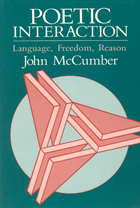 Poetic Interaction: Language, Freedom, Reason
John McCumber
University of Chicago Press, 1989 Poetic Interaction presents an original approach to the history of philosophy in order to elaborate a fresh theory that accounts for the place freedom in the Western philosophical tradition. In his thorough analysis of the aesthetic theories of Hegel, Heidegger, and Kant, John McCumber shows that the interactionist perspective recently put forth by Jürgen Habermas was in fact already present in some form in the German Enlightenment and in Heidegger's hermeneutic phenomenology. McCumber's historical placement of the interactionist perspective runs counter to both Habermas's own views and to those of scholars who would locate the origin of these developments in American pragmatism. From the metaphysical approaches of Plato and Aristotle to the interactionist approaches of Habermas and Albrecht Wellmer, McCumber provides an original narrative of the history of philosophy that focuses on the ways that each thinker has formulated the relationships between language, truth, and freedom. Finally, McCumber presents his critical demarcation of various forms of freedom to reveal that the interactionist approach has to be expanded and enlarged to include all that is understood by "poetic interaction." For McCumber, freedom is inherently pluralistic. Poetic Interaction will be invaluable to political philosophers, historians of philosophy, philosophers of language, and scholars of legal criticism.
Poetic Investigations: Singing the Holes in History
Paul Naylor
Northwestern University Press, 1999 Poetic Investigations studies five contemporary writers whose radical engagements with poetic form and political content shed new light on issues of race, class, and gender. In a detailed reading of three American poets—Susan Howe, Nathaniel Mackey, and Lyn Hejinian—and two African-Caribbean poets, Kamau Brathwaite and M. Nourbese Philip, Paul Naylor argues that these writers have produced new forms of poetry that address the "holes," or erasures, in history that more traditional poetry neglects.
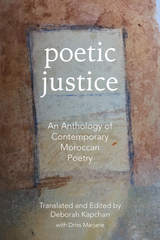 Poetic Justice: An Anthology of Contemporary Moroccan Poetry
By Deborah Kapchan
University of Texas Press, 2019 Poetic Justice is the first anthology of contemporary Moroccan poetry in English. The work is primarily composed of poets who began writing after Moroccan independence in 1956 and includes work written in Moroccan Arabic (darija), classical Arabic, French, and Tamazight. Why Poetic Justice? Moroccan poetry (and especially zajal, oral poetry now written in Moroccan Arabic) is often published in newspapers and journals and is thus a vibrant form of social commentary; what’s more, there is a law, a justice, in the aesthetic act that speaks back to the law of the land. Poetic Justice because literature has the power to shape the cultural and moral imagination in profound and just ways. Reading this oeuvre from independence until the new millennium and beyond, it is clear that what poet Driss Mesnaoui calls the “letters of time” have long been in the hands of Moroccan poets, as they write their ethics, their aesthetics, as well as their gendered and political lives into poetic being.
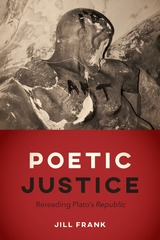 Poetic Justice: Rereading Plato's "Republic"
Jill Frank
University of Chicago Press, 2018 When Plato set his dialogs, written texts were disseminated primarily by performance and recitation. He wrote them, however, when literacy was expanding. Jill Frank argues that there are unique insights to be gained from appreciating Plato’s dialogs as written texts to be read and reread. At the center of these insights are two distinct ways of learning to read in the dialogs. One approach that appears in the Statesman, Sophist, and Protagoras, treats learning to read as a top-down affair, in which authoritative teachers lead students to true beliefs. Another, recommended by Socrates, encourages trial and error and the formation of beliefs based on students’ own fallible experiences. In all of these dialogs, learning to read is likened to coming to know or understand something. Given Plato’s repeated presentation of the analogy between reading and coming to know, what can these two approaches tell us about his dialogs’ representations of philosophy and politics?
With Poetic Justice, Jill Frank overturns the conventional view that the Republic endorses a hierarchical ascent to knowledge and the authoritarian politics associated with that philosophy. When learning to read is understood as the passive absorption of a teacher’s beliefs, this reflects the account of Platonic philosophy as authoritative knowledge wielded by philosopher kings who ruled the ideal city. When we learn to read by way of the method Socrates introduces in the Republic, Frank argues, we are offered an education in ethical and political self-governance, one that prompts citizens to challenge all claims to authority, including those of philosophy.
Poetic License: Essays on Modernist and Postmodernist Lyric
Marjorie Perloff
Northwestern University Press, 1990 In Poetic License, Marjorie Perloff insists that despite the recent interest in "opening up the canon," our understanding of poetry and poetics is all too often rutted in conventional notions of the lyric that shed little light on what poets and artists are actually doing today. On topics ranging from general problems of canonicity to the critical evaluation of such poets as Plath, Ginsberg, and others, Perloff introduces nonconventional ideas of the nature of poetic texts and reframes the discussion of postmodern "paratexts." Her discussion reformulates basic presuppositions of what poetry is and what it can do and leads us to see the great possibilities still open to lyric poetry at a time when, as Yeats predicted, "the center cannot hold."
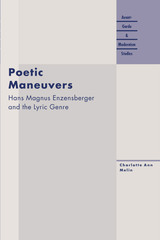 Poetic Maneuvers: Hans Magnus Enzensberger and the Lyric Genre
Charlotte Melin
Northwestern University Press, 2004 One of the most innovative and respected figures of his literary generation in Europe, Hans Magnus Enzensberger has also become a major presence in international debates about literature and social change. The first English-language study of this influential literary figure, Poetic Maneuvers considers Enzensberger's poetical texts as part of a larger project to create a venue for intellectual reflection.
From the first, Enzensberger resisted the marginalization of literature–particularly poetry—by connecting it with ethical imperatives of the post-Holocaust era. Charlotte Ann Melin shows how Enzensberger has accomplished this by challenging prevailing aesthetic and social values. Departing from existing studies that focus on Enzensberger's political views or controversial texts, her book situates his full poetic program within contemporary discussions staged by various German writers, translators, and theorists, including Jürgen Habermas and Theodor Adorno. Melin proposes a framework for reading poetry by Enzensberger and his contemporaries—one that connects the radical evolution of poetic style with how questions about representation, identity, and ethical values developed under historical conditions unique to the second half of the twentieth century. Her account of postwar literary trends explores the fluidity of national literary boundaries and tastes after 1945, and reveals the relationship of such American poets as William Carlos Williams and Carolyn Forché to German verse. Essential to an understanding Enzensberger as an important literary figure, Poetic Maneuvers also offers invaluable insight into the status of recent postwar German literature and American-European literary relations.
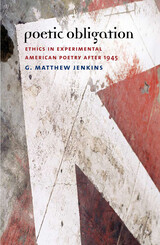 Poetic Obligation: Ethics in Experimental American Poetry after 1945
Matthew G. Jenkins
University of Iowa Press, 2008 Since at least the time of Plato's Republic, the relationship between poetry and ethics has been troubled. Through the prism of what has been called the "new" ethical criticism, inspired by the work of Emmanuel Levinas, G. Matthew Jenkins considers the works of Objectivists, Black Mountain poets, and Language poets in light of their full potential to reshape this ancient relationship. American experimental poetry is usually read in either political or moral terms. Poetic Obligation, by contrast, considers the poems of Louis Zukofsky, Charles Reznikoff, George Oppen, Edward Dorn, Robert Duncan, Susan Howe, and Lyn Hejinian in terms of the philosophical notion of ethical obligation to the Other in language. Jenkins's historical trajectory enables him to consider the full breadth of ethical topics that have driven theoretical debate since the end of World War II. This original approach establishes an ethical lineage in the works of twentieth-century experimental poets, creating a way to reconcile the breach between poetry and the issue of ethics in literature at large. With implications for a host of social issues, including ethnicity and immigration, economic inequities, and human rights, Jenkins's imaginative reconciliation of poetry and ethics will provide stimulating reading for teachers and scholars of American literature as well as advocates and devotees of poetry in general. Poetic Obligation marshals ample evidence that poetry matters and continues to speak to the important issues of our day.
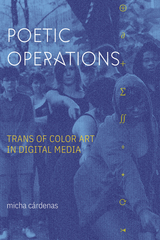 Poetic Operations: Trans of Color Art in Digital Media
micha cárdenas
Duke University Press, 2021 In Poetic Operations artist and theorist micha cárdenas considers contemporary digital media, artwork, and poetry in order to articulate trans of color strategies for safety and survival. Drawing on decolonial theory, women of color feminism, media theory, and queer of color critique, cárdenas develops a method she calls algorithmic analysis. Understanding algorithms as sets of instructions designed to perform specific tasks (like a recipe), she breaks them into their component parts, called operations. By focusing on these operations, cárdenas identifies how trans and gender-non-conforming artists, especially artists of color, rewrite algorithms to counter violence and develop strategies for liberation. In her analyses of Giuseppe Campuzano's holographic art, Esdras Parra's and Kai Cheng Thom's poetry, Mattie Brice's digital games, Janelle Monáe's music videos, and her own artistic practice, cárdenas shows how algorithmic analysis provides new modes of understanding the complex processes of identity and oppression and the intersection of gender, sexuality, and race.
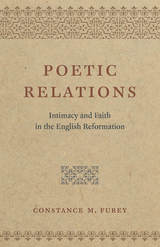 Poetic Relations: Intimacy and Faith in the English Reformation
Constance M. Furey
University of Chicago Press, 2017 What is the relationship between our isolated and our social selves, between aloneness and interconnection? Constance M. Furey probes this question through a suggestive literary tradition: early Protestant poems in which a single speaker describes a solitary search for God.
As Furey demonstrates, John Donne, George Herbert, Anne Bradstreet, and others describe inner lives that are surprisingly crowded, teeming with human as well as divine companions. The same early modern writers who bequeathed to us the modern distinction between self and society reveal here a different way of thinking about selfhood altogether. For them, she argues, the self is neither alone nor universally connected, but is forever interactive and dynamically constituted by specific relationships. By means of an analysis equally attentive to theological ideas, social conventions, and poetic form, Furey reveals how poets who understand introspection as a relational act, and poetry itself as a form ideally suited to crafting a relational self, offer us new ways of thinking about selfhood today—and a resource for reimagining both secular and religious ways of being in the world.
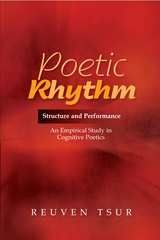 Poetic Rhythm: Structure and Performance - An Empirical Study in Cognitive Poetics (Revised and Expanded Second Edition)
Reuven Tsur
Sussex Academic Press, 2022 This research is an instrumental investigation of a theory of rhythmical performance of poetry, originally propounded speculatively in author Reuven Tsur's A Perception-Oriented Theory of Metre (1977). "Iambic pentameter" means that there is a verse unit consisting of an unstressed and a stressed syllable (in this order), and that the verse line consists of five such units. In the first 165 verse lines of Paradise Lost, there are two such lines. The theory takes up one of the central issues in metrical studies: all criteria for metricality hitherto proposed have been violated by the greatest masters of musicality in English poetry. The question arises, how do we recognize two verse lines that are very different in their structures as instances of the same abstract pattern of, e.g., iambic pentameter, and how do we distinguish a metrical from an unmetrical line? One great difference between this theory of meter and others concerns the status of deviation. Most theoreticians deploy a battery of tools to make deviant stress patterns conform with metric pattern. Only when all attempts fail do they speak of "tension." When they succeed, they blur the distinction between, for example, Milton's and Pope's metrical styles. Or else, they have formulated different rules of metricality for Shakespeare and Milton. This theory assumes that when the versification patterns and linguistic patterns conflict, they can be accommodated in a pattern of "Rhythmical Performance" - namely, one in which the conflicting patterns are simultaneously perceptible. There are scales of mounting difficulties of mismatches, on which each poet (and each theorist) draws at different points the boundary of what is acceptable. Reuven Tsur's revised and expanded second edition (original publication, Peter Lang, 1986) is essential reading for all scholars and students involved in versification and Cognitive Poetics.
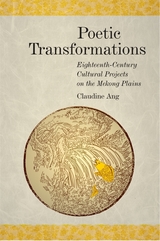 Poetic Transformations: Eighteenth-Century Cultural Projects on the Mekong Plains
Claudine Ang
Harvard University Press, 2019 In the eighteenth century, multiple migratory groups with competing political ambitions converged on the Mekong plains. In the frontier region, literati‐officials of a territorially expanding Vietnamese state crossed paths with a network of diasporic Chinese Ming loyalists closely affiliated with the coastal trading network. Drawing on vernacular Vietnamese and classical Chinese sources, Claudine Ang identifies the different ways two leading statesmen of the time employed literature to transform the frontier region. In their rival cultural projects, we see the clash between the aspirations of Vietnamese and Chinese migrants. Ang shows how a bawdy play, in which a lascivious monk turns his charms on an unsuspecting nun, acted as a vehicle for differentiating Vietnamese lowlanders from their neighbors, and she uncovers in a suite of landscape poems coded messages aimed at founding a new Ming loyalist stronghold on the Mekong delta. Through its close reading of satirical drama and landscape poetry, Poetic Transformations captures a historical moment of overlapping visions, frustrated schemes, and contested desires on the Mekong plains.
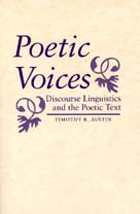 Poetic Voices: Discourse Linguistics and the Poetic Text
Timothy R. Austin
University of Alabama Press, 1994 Poems written in the first person, poems that contain passages of conversation or dialogue, and narrative poems all rely on their readers’ capacity to process discourse. Discourse features in the texts of those poems—features such as temporal and spatial reference, narrative “framing”, and the strategic use of direct speech—inevitably affect the way readers receive the central themes. Recent developments in linguistic theory, including developments that address discourse structure, thus offer literary scholars new tools for approaching a richer understanding of those poems. In Poetic Voices, Austin demonstrates some of the potential applications of such a discourse-based stylistics by pursuing what amounts to a literary conundrum, an apparent anomaly at the heart of a well-respected text, William Wordsworth’s “Resolution and Independence.” By applying a series of insights borrowed from linguists’ theories of discourse structure, Austin accounts satisfactorily for the poem’s linguistic irregularity. At each stage, he reviews other poetic texts that also respond well to analysis from that particular stylistic perspective—works by Coleridge, Frost, Shelley, and Tennyson. As a discipline, stylistics aims first and foremost to influence our understanding of individual literary works. In this tradition, Poetic Voices presents unconventional and challenging interpretations of poems such as Shelley’s “Ozymandias” and Tennyson’s Ulysses. In addition to these literary claims, however, Poetic Voices also seeks to extend the domain of stylistics generally by establishing the contribution that linguists’ theories of discourse structure may make to the appreciation of literature. This book makes claims in both literary and linguistic/stylistic fields. Like the author’s previous book, Language Crafted: A Linguistic Theory of Poetic Syntax, this volume will be most enthusiastically received and most thoroughly appreciated by stylists. Nevertheless, Poetic Voices is fully accessible to non-specialists who will appreciate the discussions of Romantic and post-Romantic texts without having to become experts in discourse analysis.
The Poetic Workmanship of Alexander Pope
Rebecca Price Parkin
University of Minnesota Press, 1955
The Poetic Workmanship of Alexander Pope was first published in 1955. Minnesota Archive Editions uses digital technology to make long-unavailable books once again accessible, and are published unaltered from the original University of Minnesota Press editions.
Through a detailed examination of Alexander Pope's poetic practices, Mrs. Parkin throws light both on the craftsmanship and on the philosophical concepts which governed the creative thought of the poet. She analyzes Pope's use of such literary devices as irony, antithesis, metaphor, narrative, paradox, tension, tonal variation, and the dramatic speaker. She discusses the Pope's work as a whole. The study also provides an evaluation of the influence on Pope's work of the neo-classical concepts of genre and imitation.
 Poetic Works
Bernardus Silvestris
Harvard University Press, 2015 Bernardus Silvestris exemplifies the scholastic culture of his time. Having studied with pioneers in philosophy and science, he became a renowned teacher of literary and poetic composition. His versatility as scholar, philosopher, and scientist is apparent in his masterpiece, the Cosmographia. In alternating verse and prose, this foundational text for later Latin and vernacular literature synthesizes important intellectual movements of the early twelfth century. It owes its deepest debt to the tradition of philosophical allegory, including Plato’s Timaeus, Cicero’s Somnium Scipionis, and the prosimetra of Martianus Capella and Boethius. Bernardus also displays a masterly awareness of classical Latin poetry. Though less widely influential than his great disciple, Alan of Lille, Bernardus is the most subtle of the twelfth-century Latin poets; the Cosmographia has been aptly compared to the poetry of Lucretius and Giordano Bruno, and a copy survives written in the hand of Boccaccio.
In Mathematicus (“The Astrologer”), a Roman hero, faced with an astrologer’s prediction that he will kill his father, resolves to defy fate by committing suicide. This text is the most substantial of the surviving twelfth-century poems based on the ancient exercises in rhetoric known as controversiae, and it illustrates the twelfth century’s concern with astral determinism.
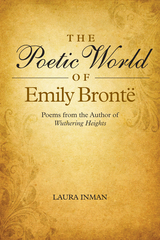 The Poetic World of Emily Bronte: Poems from the Author of Wuthering Heights
Laura Inman
Sussex Academic Press, 2022 Emily Bronte is known as a novelist, but she was first and equally a poet. Before during and after writing Wuthering Heights, she wrote poetry. Indeed, she wrote virtually nothing else for us to read -- no other work of fiction or correspondence. Her poems, however, fill this void. They are varied, lyrical, intriguing, and innovative, yet they are not well known. This book brings an unjustifiably marginalised poet out of the shadows and presents her poetry in a way that enables readers, even those who shy away from poetry, to appreciate her work. Unlike any other collection of Bronte's poetry, this volume arranges selected poems by thematic topic: nature, mutability, love, death, captivity and freedom, hope and despair, imagination, and spirituality. It provides literary and biographical information on each topic and interpretations, explanations, and insights into each poem. Fans of Wuthering Heights wanting more from Emily Bronte will discover that her poetry is as memorable and powerful as her novel. This book is for all who appreciate poetry, especially from the golden age of 19th century verse. The exploration of Emily Bronte's poetic world allows a greater and different understanding of Wuthering Heights and insights into Bronte's fascinating mind.
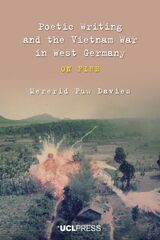 Poetic Writing and the Vietnam War in West Germany: On fire
Mererid Puw Davies
University College London, 2023 An examination of the largely forgotten anti-war writing from West Germany spurred by the Vietnam War.
Though the Vietnam War did not directly involve West Germany, it was nonetheless a decisive catalyst for the era’s wider protest movements in that country, and it gave rise to an ardent anti-war discourse. Poetry and poetic writing were key to anti-war work. Hundreds of poems and related writings about Vietnam circulated in West Germany, yet they are almost entirely forgotten today. Poetic Writing and the Vietnam War in West Germany uncovers and explores some of that rich artistic production in order to present a new history of engaged poetic writing in West Germany in the 1960s and 1970s and to draw out distinctive characteristics of wider protest culture. In doing so, it makes the case for attending to marginal, non-canonical, or neglected literary and cultural forms, and for critical thinking about why they might, over time, have been obscured. The book also offers a case study for reflection on the representation of war, on ways in which German oppositional culture could imagine its others, and on the relationship of poetry to the historical world.
A Poetical Rhapsody, 1602–1621
Hyder Edward Rollins
Harvard University Press Contains all the critical and interpretative matter necessary for the study of the text in Volume I. The Introduction has complete bibliographical descriptions (with photographic facsimile title-page) of all the seventeenth century editions; discussion of the editor and the contributors; and an account of the style, meters, and influence of the book. The Notes give full explanatory, critical, and illustrative material for the individual poems. There is an index of proper names, words, and subjects.
Poetics
Aristotle
University of Michigan Press, 1967 Aristotle's Poetics is a work of transcendent importance, both for the history of literary criticism and in its own right.
In his masterful translation and accompanying notes, Dr. Else makes a special effort to achieve maximum clarity, while remaining faithful to the original. His constant aim is to provide -- for all readers -- a "way in" to Aristotle's processes of thinking about literature.
This important modern translation is made form the 1965 Oxford Classical Text edition of the Poetics by Rudolf Kassel and thus reflects the latest and most authoritative textual scholarship. Not only the translation but the valuable fund of commentary will delight anyone -- literary critic, philosopher, classicist, or general reader -- who want to learn what Aristotle really said.
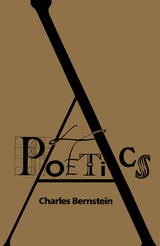 A Poetics
Charles Bernstein
Harvard University Press, 1992 This rich collection is far more than an important work of criticism by an extraordinary poet; it is a poetic intervention into criticism. "Artifice of Absorption," a key essay, is written in verse, and its structures and rhythms initiate the reader into the strength and complexity of the argument. In a wild variety of topics, polemic, and styles, Bernstein surveys the current poetry scene and addresses many of the hot issues of poststructuralist literary theory. "Poetics is the continuation of poetry by other means," he writes. What role should poetics play in contemporary culture? Bernstein finds the answer in dissent, not merely in argument but in form--a poetic language that resists being easily absorbed into the conventions of our culture.
Insisting on the vital need for radical innovation, Bernstein traces the traditions of modern poetry back to Stein and Wilde, taking issue with those critics who see in the "postmodern" a loss of political and aesthetic relevance. Sometimes playful, often hortatory, always intense, he joins in the debate on cultural diversity and the definition of modernism. We encounter Swinburne and Morris as surprising precursors, along with considerations of Wittgenstein, Khlebnikov, Adorno, Jameson, and Pac-Man. A Poetics is both criticism and poetry, both tract and song, with no dull moments.
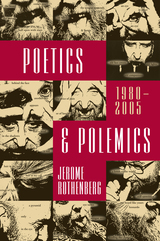 Poetics & Polemics: 1980-2005
Jerome Rothenberg
University of Alabama Press, 2008 Poetics & Polemics, 1980-2005 brings together in one volume a wide-ranging selection of essays and commentaries by one of the most significant poets, critics, and translators working with American and international poetry today. Jerome Rothenberg’s work spans a period of over forty years and nearly one hundred books, and though perhaps best known as a poet, his critical and theoretical contributions to the fields of innovative, experimental poetry have become equally important facets of his work. Rothenberg’s earliest critical writings concerned themselves with ethnopoetics and the poetics of performance. In the last twenty years his critical thinking has evolved to encompass more explicitly issues of modernism, postmodernism, and the avant-garde, as well as meditations on the nature of the book and writing. This volume extends and elaborates all of those interests, allowing for the first time a comprehensive glimpse of the full trajectory of his thinking. In the first section, “Poetics and Polemics,” Rothenberg’s essays address a range of issues with which he’s become closely associated, among them the anthology as a critical and polemical tool; the intersection of poetry with art, performance, and politics, in both contemporary and traditional practice; the poetics of Jewish mysticism as a traditional form of conceptual and language poetry; and the universality of poetic discourse, particularly as seen in tribal poetry or in poetic traditions long separated from the Western literary mainstream. In “A Gallery of Poets” is Rothenberg’s lively explorations of the work of other poets, as they relate to his own work, to avant-garde poetry in general, and to the poetic traditions that concern him the most. Finally, in “Dialogues and Interviews” are Rothenberg’s unbridled meditations and musings on what he calls “the life of poetry” outside the bounds of book and binding, class and category, a dynamic force at the center of all that we call human.
 The Poetics and Politics of the Veil in Iran: An Archival and Photographic Adventure
Azadeh Fatehrad
Intellect Books, 2019 This volume explores the lives of women in Iran through the social, political, and aesthetic contexts of veiling, unveiling, and re-veiling. Through poetic writings and photographs, Azadeh Fatehrad responds to the legacy of the Iranian Revolution via the representation of women in photography, literature, and film. The images and texts are documentary, analytical, and personal.
The Poetics and Politics of the Veil in Iran features Fatehrad’s own photographs in addition to work by artists Hengameh Golestan, Shirin Neshat, Shadi Ghadirian, Abbas Kiarostami, Mohsen Makhmalbaf, Adolf Loos, Gaëtan Gatian de Clérambault, and Alison Watt. In exploring women’s lives in post-revolutionary Iran, Fatehrad considers the role of the found image and the relationship between the archive and the present, resulting in an illuminating history of feminism in Iran in the twentieth and twenty-first centuries.
 The Poetics and Politics of Tuareg Aging: Life Course and Personal Destiny in Niger
Susan J. Rasmussen
Northern Illinois University Press, 2009
To what degree does culture influence our concepts of age and aging? In our own culture, chronology is crucial to perceptions of the aging process. Our expectations for a twenty-year-old, for example, are different from those we have for a sixty-year-old. So entrenched are our ideas about aging that the notion of measuring age in ways other than chronology may be startling.
In this unique ethnographical study of the people of the Kel Ewey confederation of Tuareg, Rasmussen explores age and aging in an African culture. A seminomadic community in northern Niger, the Tuareg understand aging in a way that is distinctly nonlinear—a dimension of life they measure outside of a chronological time frame. Instead, rituals related to marriage, childbirth, and death mark the process of aging. In this way the life course of an individual is more important to the notion of age than the literal age. A sense of private power and transformation of self over time are thus achieved through ritual.
Rasmussen draws on field experience conducted between 1974 and 1995. The longevity of her ethnological study provided the opportunity for extended interaction with local residents, who eventually took an active role in studying the researcher. She explores the mutual exchange of knowledge about aging and life course—an interaction that itself sheds light on the need to deconstruct standard age-related categories for studying other cultures.
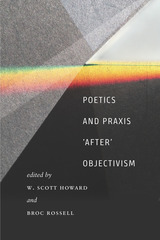 Poetics and Praxis 'After' Objectivism
W. Scott Howard and Broc Rossell
University of Iowa Press, 2018 Poetics and Praxis ‘After’ Objectivismexamines late twentieth-and early twenty-first-century poetics and praxis within and against the dynamic, disparate legacy of Objectivism and the Objectivists. This is the first volume in the field to investigate the continuing relevance of the Objectivist ethos to poetic praxis in our time. The book argues for a reconfiguration of Objectivism, adding contingency to its historical values of sincerity and objectification, within the context of the movement’s development and disjunctions from 1931 to the present. Essays and conversations from emerging and established poets and scholars engage a network of communities in the U.S., Canada, and the U.K., shaped by contemporaneous oppositions as well as genealogical (albeit discontinuous) historicisms. This book articulates Objectivism as an inclusively local, international, and interdisciplinary ethos, and reclaims Objectivist poetics and praxis as modalities for contemporary writers concerned with radical integrations of aesthetics, lyric subjectivities, contingent disruption, historical materialism, and social activism. The chapter authors and roundtable contributors reexamine foundational notions about Objectivism—who the Objectivists were and are, what Objectivism has been, now is, and what it might become—delivering critiques of aesthetics and politics; of race, class, and gender; and of the literary and cultural history of the movement’s development and disjunctions from 1931 to the present. Contributors: Rae Armantrout, Julie Carr, Amy De’Ath, Jeff Derksen, Rachel Blau DuPlessis, Graham Foust, Alan Golding, Jeanne Heuving, Ruth Jennison, David Lau, Steve McCaffery, Mark McMorris, Chris Nealon, Jenny Penberthy, Robert Sheppard
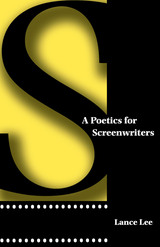 A Poetics for Screenwriters
By Lance Lee
University of Texas Press, 2001 Writing successful screenplays that capture the public imagination and richly reward the screenwriter requires more than simply following the formulas prescribed by the dozens of screenwriting manuals currently in print. Learning the "how-tos" is important, but understanding the dramatic elements that make up a good screenplay is equally crucial for writing a memorable movie. In A Poetics for Screenwriters, veteran writer and teacher Lance Lee offers aspiring and professional screenwriters a thorough overview of all the dramatic elements of screenplays, unbiased toward any particular screenwriting method. Lee explores each aspect of screenwriting in detail. He covers primary plot elements, dramatic reality, storytelling stance and plot types, character, mind in drama, spectacle and other elements, and developing and filming the story. Relevant examples from dozens of American and foreign films, including Rear Window, Blue, Witness, The Usual Suspects, Virgin Spring, Fanny and Alexander, The Godfather, and On the Waterfront, as well as from dramas ranging from the Greek tragedies to the plays of Shakespeare and Ibsen, illustrate all of his points. This new overview of the dramatic art provides a highly useful update for all students and professionals who have tried to adapt the principles of Aristotle's Poetics to the needs of modern screenwriting. By explaining "why" good screenplays work, this book is the indispensable companion for all the "how-to" guides.
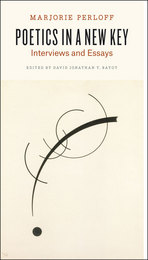 Poetics in a New Key: Interviews and Essays
Marjorie Perloff
University of Chicago Press, 2014 Marjorie Perloff writes in her preface to Poetics in a New Key that when she learned David Jonathan Y. Bayot wanted to publish a collection of her interviews and essays, she was “at once honored and mystified.” But to Perloff’s surprise and her readers’ delight, the resulting assembly not only presents an accessible and provocative introduction to Perloff’s critical thought, but also highlights the wide range of her interests, and the energetic reassessments and new takes that have marked her academic career.
The fourteen interviews in Poetics in a New Key—conducted by scholars, poets, and critics from the United States, Denmark, Norway, France, and Poland, including Charles Bernstein, Hélène Aji, and Peter Nicholls—cover a broad spectrum of topics in the study of poetry: its nature as a literary genre, its current state, and its relationship to art, politics, language, theory, and technology. Also featured in the collection are three pieces by Perloff herself: an academic memoir, an exploration of poetry pedagogy, and an essay on twenty-first-century intellectuals. But across all the interviews and essays, Perloff’s distinctive personality and approach to reading and talking resound, making this new collection an inspiring resource for scholars both of poetry and writing.
 Poetics. Longinus: On the Sublime. Demetrius: On Style
Based on W. Rhys Roberts
Harvard University Press, 1995 Classic criticism.
This volume brings together the three most influential ancient Greek treatises on literature.
Aristotle’s Poetics contains his treatment of Greek tragedy: its history, nature, and conventions, with details on poetic diction. Stephen Halliwell makes this seminal work newly accessible with a reliable text and a translation that is both accurate and readable. His authoritative introduction traces the work’s debt to earlier theorists (especially Plato), its distinctive argument, and the reasons behind its enduring relevance.
The essay On the Sublime, usually attributed to “Longinus” (identity uncertain), was probably composed in the first century AD; its subject is the appreciation of greatness (“the sublime”) in writing, with analysis of illustrative passages ranging from Homer and Sappho to Plato and Genesis. In this edition, Donald A. Russell has judiciously revised and newly annotated the text and translation by W. Hamilton Fyfe and provides a new introduction.
The treatise On Style, ascribed to an (again unidentifiable) Demetrius, was perhaps composed during the secod century BC. It is notable particularly for its theory and analysis of four distinct styles (grand, elegant, plain, and forceful). Doreen Innes’ fresh rendering of the work is based on the earlier Loeb translation by W. Rhys Roberts. Her new introduction and notes represent the latest scholarship.
The Loeb Classical Library edition of Aristotle is in twenty-three volumes.
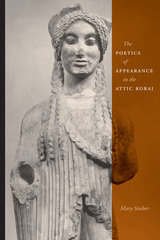 The Poetics of Appearance in the Attic Korai
By Mary Stieber
University of Texas Press, 2004 Some of the loveliest works of Archaic art were the Athenian korai—sculptures of beautiful young women presenting offerings to the goddess Athena that stood on the Acropolis. Sculpted in the sixth and early fifth centuries B.C., they served as votives until Persians sacked the citadel in 480/79 B.C. Subsequently, they were buried as a group and forgotten for nearly twenty-four centuries, until archaeologists excavated them in the 1880s. Today, they are among the treasures of the Acropolis Museum. Mary Stieber takes a fresh look at the Attic korai in this book. Challenging the longstanding view that the sculptures are generic female images, she persuasively argues that they are instead highly individualized, mimetically realistic representations of Archaic young women, perhaps even portraits of real people. Marshalling a wide array of visual and literary evidence to support her claims, she shows that while the korai lack the naturalism that characterizes later Classical art, they display a wealth and realism of detail that makes it impossible to view them as generic, idealized images. This iconoclastic interpretation of the Attic korai adds a new dimension to our understanding of Archaic art and to the distinction between realism and naturalism in the art of all periods.
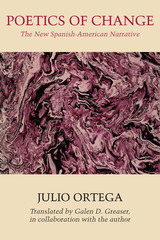 Poetics of Change: The New Spanish-American Narrative
By Julio Ortega
University of Texas Press, 1986 Too often literary criticism is academic exercise rather than creative act. For the multifaceted Julio Ortega—respected poet, dramatist, and novelist in his own right—the act of criticism becomes profoundly creative, his incisive readings of the text far transcending the pedantry that may falsely pass for imagination, intelligence, and rigor. Nearly every Spanish-American writer of consequence, from Paz to Fuentes, Cortázar to Lezama Lima, has extolled Ortega’s criticism as not merely a reflection but an essential part of the renaissance that took place in Spanish-American letters during the late twentieth century. Poetics of Change brings together Ortega’s most penetrating and insightful analyses of the fiction of Borges, Fuentes, García Márquez, Carpentier, Rulfo, Cabrera Infante, and others responsible for great writing from Spanish America. Ortega concerns himself most with the semantic innovations of these masters of the modern narrative and their play with form, language, and the traditional boundaries of genre. Mapping their creative territory, he finds that the poetics of Spanish-American writing is that of a dynamically changing genre that has set exploration at its very heart.
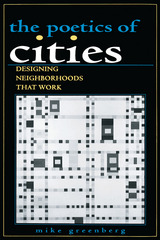 POETICS OF CITIES: DESIGNING NEIGHBORHOODS THAT WORK
MIKE GREENBERG
Ohio State University Press, 1995 "Journalist Mike Greenberg is appalled by what had happened to his home town, San Antonio, Texas. In response, he has written a readable and useful book . . . . which is full of practical suggestions for improving his own and other communities. . . . Planners, architects, and city officials should read this practical and hopeful book." --Planning
In this lively and insightful book, Mike Greenberg argues that the purpose of cities and neighborhoods is to foster economic, social, and intellectual exchange, the process that underlies the creation of value. He seeks to show how the detailed geography of the city can either inhibit or encourage such exchanges and thus profoundly affect the lives of the people who live there.
Cities filled an important evolutionary niche, historically, because they were the places--in contrast to rural areas or villages--where exchange occurred with greatest efficiency, where value was created most spectacularly, and thus where the wealth was. But it wasn't just the fact of concentration, but the how of it, that made cities efficient producers of value and circulators of wealth.
The Poetics of Cities is concerned with the context of contemporary cities and suburban rings, where development dynamics--guided by the needs of the automobile and by reformist planning concepts that went awry--create environments that are increasingly hostile to exchange and thus threaten to inhibit the economic development that made them possible in the first place.
The city of late nineteenth- and early twentieth-century America was in some ways a remarkably sophisticated technology for fostering exchange and cementing community. Taking examples mostly from his hometown, San Antonio, Texas, Greenberg examines certain features of those cities--their sidewalk systems, their scale and setbacks, the rhythms of their streetscapes, the structure of their neighborhoods--and shows why they worked so well, and why they cannot be arbitrarily tossed aside without doing damage to the urban economy. He then offers some practical planning strategies and regulatory ideas to help cities retain what is useful from their traditional forms while at the same time accommodating modernity.
Engagingly written, The Poetics of Cities will make fascinating reading for architects, urban planner, neighborhood activists, city officials, real estate developers, and anyone interested in the quality of urban life in America.
Mike Greenberg is Senior Critic of the San Antonio Express-News. He is the author of Synthesis: Craftsmanship, Architecture, Design and was a John S. Knight Fellow at Stanford University.
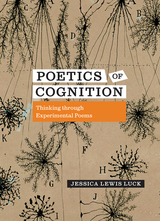 Poetics of Cognition: Thinking through Experimental Poems
Jessica Lewis Luck
University of Iowa Press, 2023 Poetics of Cognition investigates the material effects of experimental poetics using new evidence emerging from cognitive science. It asks: How do experimental poems “think” and how do we think through them? Examining experimental modes such as the New Sentence, proceduralism, projective verse, sound poetry, and visual poetry, Jessica Lewis Luck argues that experimental poems materialize not so much the content as the activity of the embodied mind, and they can thus function as a powerful scaffolding for extended cognition, both for the writer and the reader. While current critical approaches tend to describe the effects of experimentalism solely in terms of emotion and sensation, Luck shifts from the feeling to the thinking that these poems can generate, expanding the potential blast radius of experimental poetic effects into areas of linguistic, sonic, and visual processing and revealing a transformational potency that strictly affective approaches miss.
The cognitive research Luck draws upon suggests that the strangeness of experimental poetry can reshape the activity of the reader’s mind, creating new forms of attention, perception, and cognition. This book closes by shifting from theory to praxis, extracting forms of teaching from the forms of thinking that experimental poems instill in order to better enable their transformative effects in readers and to bring poetry pedagogy into the twenty-first century.
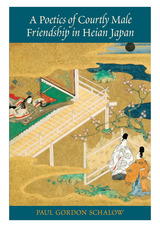 A Poetics of Courtly Male Friendship in Heian Japan
Paul Gordon Schalow
University of Hawaii Press, 2007 Western scholars have tended to read Heian literature through the prism of female experience, stressing the imbalance of power in courtship and looking for evidence that women hoped to move beyond the constraints of marriage politics. Paul Schalow’s original and challenging work inherits these concerns about the transcendence of love and carries them into a new realm of inquiry—the suffering of noblemen and the literary record of their hopes for transcendence through friendship. He traces this recurring theme, which he labels "courtly male friendship," in five important literary works ranging from the tenth-century Tale of Ise to the early eleventh-century Tale of Genji.
Whether authored by men or women, the depictions of male friendship addressed in this work convey the differing perspectives of male and female authors profoundly shaped by their gender roles in the court aristocracy. Schalow’s analysis clarifies in particular how Heian literature articulates the nobleman’s wish to be known and appreciated fully by another man.
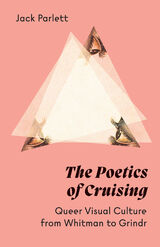 The Poetics of Cruising: Queer Visual Culture from Whitman to Grindr
Jack Parlett
University of Minnesota Press, 2022 A groundbreaking new history of urban cruising through the lenses of urban poets The Poetics of Cruising explores the relationship between cruising, photography, and the visual in the work of leading poets, from Walt Whitman in the nineteenth century to Eileen Myles in the twenty-first. What is it that happens, asks Jack Parlett, and what is it that is sought, in this often transient moment of perception we call cruising, this perceptual arena where acts of looking between strangers are intensified and eroticized? Parlett believes that this moment is not only optical in nature but visual: a mode of looking that warrants comparison with the ways in which we behold still and moving images. Whether it’s Whitman’s fixation with daguerreotypes, Langston Hughes’s hybrid photographic works, or Frank O’Hara’s love of Hollywood movie stars, argues Parlett, the history of poets cruising abounds with this intermingling between the verbal and the visual, the passing and the fixed. To look at someone in the act of cruising, this history suggests, is to capture, consider, and aestheticize, amid the flux and instantaneity of urban time. But it is also to reveal the ambivalence at the heart of this erotic search, where power may be unevenly distributed across glances, and gendered and racialized bodies are marked. Thus, in identifying for the first time this confluence of cruising, poetry, and visual culture, Parlett concludes that the visual erotic economy associated with gay cruising today, exemplified by the photographic grid of an app like Grindr, is not a uniquely contemporary phenomenon. Innovative, astute, and highly readable, and drawing on compelling archival material, The Poetics of Cruising is a must for scholars of queer and LGBTQ literature and culture, modern and contemporary poetry, visual studies, and the history of sexuality.
 The Poetics of Derek Walcott: Intertextual Perspectives, Volume 96
Gregson Davis
Duke University Press The essays collected in this issue offer complementary critical perspectives on the mature lyric work of Derek Walcott, the acclaimed Nobel laureate from the Caribbean island of St. Lucia. The centerpiece of the ensemble is a previously unpublished essay in which Walcott’s reflections on poetics illuminate his project in the masterpiece, Omeros.Other contributions by literary scholars in North America and the Caribbean focus on fundamental dimensions of Walcott’s craft and on such thematic preoccupations as the intersection of pictorial and verbal modes of representation, the deployment of nuanced intertextual strategies (especially in relation to the Greco-Roman canon), the invention of a viable artistic identity in a postcolonial intercultural milieu, and the psychosocial modeling of the process of literary apprenticeship. Contributors. Edward Baugh, Peter Burian, Gregson Davis, Carol Dougherty, Joseph Farrell, Judith Harris, Timothy Hofmeister, Derek Walcott
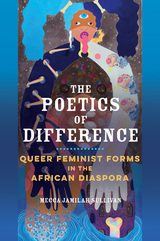 The Poetics of Difference: Queer Feminist Forms in the African Diaspora
Mecca Jamilah Sullivan
University of Illinois Press, 2021 Winner of the Modern Language Association (MLA)’s William Sanders Scarborough Prize From Audre Lorde, Ntozake Shange, and Bessie Head, to Zanele Muholi, Suzan-Lori Parks, and Missy Elliott, Black women writers and artists across the African Diaspora have developed nuanced and complex creative forms. Mecca Jamilah Sullivan ventures into the unexplored spaces of black women’s queer creative theorizing to learn its languages and read the textures of its forms. Moving beyond fixed notions, Sullivan points to a space of queer imagination where black women invent new languages, spaces, and genres to speak the many names of difference. Black women’s literary cultures have long theorized the complexities surrounding nation and class, the indeterminacy of gender and race, and the multiple meanings of sexuality. Yet their ideas and work remain obscure in the face of indifference from Western scholarship. Innovative and timely, The Poetics of Difference illuminates understudied queer contours of black women’s writing.
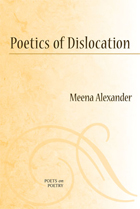 Poetics of Dislocation
Meena Alexander
University of Michigan Press, 2009 Poetics of Dislocation sets the work of contemporary American poetry within the streams of migration that have made the nation what it is in the twenty-first century. There are few poets better qualified to muse on that context than Meena Alexander, who spent her life studying at prestigious institutions around the globe before settling in the United States to work on her acclaimed body of poetry. Part of the University of Michigan Press's award-winning Poets on Poetry series, Poetics of Dislocation studies not only the personal creative process Alexander uses, but also the work of other prominent writers. Alexander discusses what it means to come to America as an adult to write poetry, and her place---and that of others---in the collection of cultures that makes up this country. She outlines the dilemmas that face modern immigrant poets, including how to make a place for oneself in a new society and how to write poetry in a time of violence worldwide.
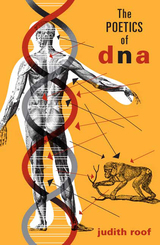 The Poetics of DNA
Judith Roof
University of Minnesota Press, 2007 How has DNA come to be seen as a cosmic truth, representative of all life, potential for all cures, repository for all identity, and end to all stories? In The Poetics of DNA, Judith Roof examines the rise of this powerful symbol and the implications of its ascendancy for the ways we think—about ourselves, about one another, and about the universe. Descriptions of DNA, Roof argues, have distorted ideas and transformed nucleic acid into the answer to all questions of life. This hyperbolized notion of DNA, inevitably confused or conflated with the “gene,” has become a vector through which older ways of thinking can merge with the new, advancing long-discredited and insidious ideas about such things as eugenics and racial selection and influencing contemporary debates, particularly the popular press obsession with the “gay gene.” Through metaphors of DNA, she contends, racist and homophobic ideology is masked as progressive science. Grappling with twentieth-century intellectual movements as well as contemporary societal anxieties, The Poetics of DNA reveals how descriptions of DNA and genes typify a larger set of epistemological battles that play out not only through the assumptions associated with DNA but also through less evident methods of magical thinking, reductionism, and pseudoscience. For the first time, Roof exposes the ideology and cultural consequences of DNA and gene metaphors to uncover how, ultimately, they are paradigms used to recreate prejudices. Judith Roof is professor of English and film studies at Michigan State University. She is the author of several books, including All about Thelma and Eve: Sidekicks and Third Wheels.
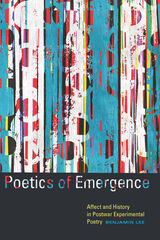 Poetics of Emergence: Affect and History in Postwar Experimental Poetry
Benjamin Lee
University of Iowa Press, 2020 Experimental poetry responded to historical change in the decades after World War II, with an attitude of such casual and reckless originality that its insights have often been overlooked. However, as Benjamin Lee argues, to ignore the scenes of self and the historical occasions captured by experimental poets during the 1950s and 1960s is to overlook a rich and instructive resource for our own complicated transition into the twenty-first century. Frank O’Hara and fellow experimental poets like Amiri Baraka, Diane di Prima, and Allen Ginsberg offer us a set of perceptive responses to Cold War culture, lyric meditations on consequential changes in U.S. social life and politics, including the decline of the Old Left, the rise of white-collar workers, and the emergence of vernacular practices like hipsterism and camp. At the same time, they offer us opportunities to anatomize our own desire for historical significance and belonging, a desire we may well see reflected and reconfigured in the work of these poets.
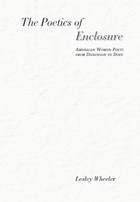 Poetics Of Enclosure: American Women Poets From Dickinson To Dove
Leslie Wheeler
University of Tennessee Press, 2002 In this illuminating critical study, Lesley Wheeler argues for a women’s tradition in American poetry lyric poetry characterized by figures of enclosure. She examines how six dissimilar yet interconnected poets employ this idiom: Emily Dickinson, Marianne Moore, H.D., Gwendolyn Brooks, Elizabeth Bishop, and Rita Dove.
As Wheeler notes, the terms “closed” and “open” have long posed problems for poets and scholars. Addressing such controversies, the author offers three meanings for enclosure: formal confinement, reserve or privacy in both style and content, and a central dependency on imagery of narrow spaces. She finds that Brooks does not exercise “privacy” in the same manner as Dickinson or H.D. and that Moore’s conception of poetic form contrasts sharply with those of Bishop and Dove. Nevertheless, Wheeler asserts, these authors demonstrate a common approach to the lyric that constitutes a central and overlooked mode of American poetry.
In charting the history of an evolving and flexible poetic strategy, The Poetics of Enclosure also argues for the continuing relevance of lyric as a category. While the poets treated here all mount challenges to lyric definition, they also work in crucial relation to its traditions. All conceive of the lyric in terms of rhythmic and/or visual patterns; all allude to the metaphor of voice; and, in particular, all emphasize the boundaries between private and public that the lyric highlights. Where figures of enclosure appear, Wheeler argues, these poets not only illuminate their poetic practice but also, after Dickinson, acknowledge in shorthand their female peers and predecessors.
The Author: Lesley Wheeler is associate professor of English at Washington and Lee University. She has published essays and reviews in the African American Review, Callaloo, Critical Matrix, and other journals. Her poetry has appeared in such publications as American Writing, Northeast Journal, and American Standard.
The Poetics of Epiphany in the Spanish Lyric of Today
Judith Nantell
Bucknell University Press, 2020 Drawing on the poetry of four major voices in the Spanish lyric of today, Judith Nantell explores the epistemic works of Luis Muñoz, Abraham Gragera, Josep M. Rodríguez, and Ada Salas, arguing that, for them, the poem is the fundamental means of exploring the nature of both knowledge and poetry. In this first interpretive analysis of the epistemic nature of their poetry, Nantell innovatively engages these poets, each of whom has contributed one of their own poems along with a previously unpublished explication of their chosen poem. Each also provides an original biographical sketch to support Nantell’s development of a poetics of epiphany.
Published by Bucknell University Press. Distributed worldwide by Rutgers University Press.
 The Poetics of Iblīs: Narrative Theology in the Qur’an
Whitney S. Bodman
Harvard University Press, 2007 Iblīs, the character in the Qur’an who refuses God’s command to bow to Adam and is punished by eviction from heaven, is commonly depicted as a fiendish character no different from Satan. However, some Sufi stories describe Iblīs as the ultimate monotheist, a lover of God, but tragically rejected. This volume seeks the origins of this alternative Iblīs within the Qur’an itself, by looking at each of the seven Qur’anic versions of the Iblīs story as a unique rendering of the basic narrative. Whitney Bodman finds that the likely earliest version of the Iblīs story presents him as a tragic figure, an elder sibling of Adam unjustly displaced from God’s favor. Subsequent renderings present an Iblīs more hostile to humanity, and in the last two abbreviated versions Iblīs becomes an incidental figure in the extended story of Adam.
In modern Arab literature the character of Iblīs is deployed to reveal tragic dimensions of modern life. Although it is often said that there is no place for tragedy in Islam, Bodman’s careful examination of the Iblīs story shows that the tragic exists even in the Qur’an and forms part of the vision of medieval Sufi mystics and modern social critics alike.
 The Poetics of Impersonality: T. S. Eliot and Ezra Pound
Maud Ellmann
Harvard University Press, 1987 T. S. Eliot and Ezra Pound dominated English poetry and criticism in the first half of the twentieth century. At the center of their practice is what Maud Ellmann calls the poetics of impersonality. Her examination yields a set of superb readings of the major poems of the modernist canon. Eliot and Pound mounted attack after attack on nineteenth-century poetry from Wordsworth to Swinburne, poetry they believed nurtured an unhealthy cult of the self. They wanted poetry to be a transparent medium that gives its readers access to reality and meaning. Poetry, they argued, should efface itself, because writing that calls attention to itself calls attention to the distinctive personality of the writer. Ellmann convincingly shows that their arguments are self-contradictory and that their efforts to eliminate personality merely reinstate it in a different guise.
After an initial section on Eliot’s relation to Bergson, Ellmann goes on to analyze Eliot’s “Tradition and the Individual Talent” and the later After Strange Gods, the early poems, The Waste Land, and Four Quartets; she then turns to Pound’s Personae, particularly “Mauberley,” and the Cantos. Ellmann looks for the contradictions inherent in modernist literary ideology and deftly teases out their implications. Her writing is stylish in the best sense and, in terms of its theoretical vocabulary and assumptions, impeccable. This book marks the debut of a major literary critic.
 The Poetics of Impudence and Intimacy in the Age of Pushkin
Joe Peschio
University of Wisconsin Press, 2012 In early nineteenth-century Russia, members of jocular literary societies gathered to recite works written in the lightest of genres: the friendly verse epistle, the burlesque, the epigram, the comic narrative poem, the prose parody. In a period marked by the Decembrist Uprising and heightened state scrutiny into private life, these activities were hardly considered frivolous; such works and the domestic, insular spaces within which they were created could be seen by the Russian state as rebellious, at times even treasonous.
Joe Peschio offers the first comprehensive history of a set of associated behaviors known in Russian as “shalosti,” a word which at the time could refer to provocative behaviors like practical joking, insubordination, ritual humiliation, or vandalism, among other things, but also to literary manifestations of these behaviors such as the use of obscenities in poems, impenetrably obscure allusions, and all manner of literary inside jokes. One of the period’s most fashionable literary and social poses became this complex of behaviors taken together. Peschio explains the importance of literary shalosti as a form of challenge to the legitimacy of existing literary institutions and sometimes the Russian regime itself. Working with a wide variety of primary texts—from verse epistles to denunciations, etiquette manuals, and previously unknown archival materials—Peschio argues that the formal innovations fueled by such “prankish” types of literary behavior posed a greater threat to the watchful Russian government and the literary institutions it fostered than did ordinary civic verse or overtly polemical prose.
The Poetics of Indeterminacy: Rimbaud to Cage
Marjorie Perloff
Northwestern University Press, 1999 In her seminal study, first published in 1981, Marjorie Perloff argues that the map of Modernist poetry needs to be redrawn to include a central tradition which cannot properly be situated within the Romantic-Symbolist tradition dominating the early twentieth century.
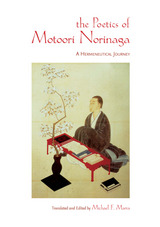 The Poetics of Motoori Norinaga: A Hermeneutical Journey
edited and translated by Michael F. Marra
University of Hawaii Press, 2007 One of Japan’s most renowned intellectuals, Motoori Norinaga (1730–1801) is perhaps best known for his notion of mono no aware, a detailed description of the workings of emotions as the precondition for the poetic act. As a poet and a theoretician of poetry, Norinaga had a keen eye for etymologies and other archaeological practices aimed at recovering the depth and richness of the Japanese language. This volume contains his major works on the Yamato region—the heartland of Japanese culture—including one of his most famous poetic diaries, The Sedge Hat Diary (Sugagasa no Nikki), translated into English here for the first time.
Written in 1772 while Norinaga journeyed through Yamato and the Yoshino area, The Sedge Hat Diary was composed in the style of Heian prose and is interspersed with fifty-five poems. It offers important insights into Norinaga the poet, the scholar of ancient texts, the devout believer in Shinto deities, and the archaeologist searching for traces of ancient capitals, palaces, shrines, and imperial tombs of the pre-Nara period. In this piece Norinaga presents Yoshino as a "common poetic space" that readers must inhabit to develop the "common sense" that makes them live ethically in the poet’s ideal society.
Norinaga’s ideal society is deeply imbued with the knowledge of poetry and the understanding of emotions as evidenced in the translation of Norinaga’s twenty-six songs on aware (pathos) also included here. The rest of the volume offers translations of several essays by the poet that shed further light on the places he visited in Yoshino and on the main topic of his scholarly interests: the sound of the uta (songs) from his beloved Yamato. An introductory essay on Norinaga’s poetics serves as a guide through the dense arguments he developed both practically in his poems and theoretically in his essays.
Poetics of Music in the Form of Six Lessons
Igor Stravinsky
Harvard University Press, 1970 One of the greatest of contemporary composers has here set down in delightfully personal fashion his general ideas about music and some accounts of his own experience as a composer. Every concert-goer and lover of music will take keen pleasure in his notes about the essential features of music, the process of musical composition, inspiration, musical types, and musical execution. Throughout the volume are to he found trenchant comments on such subjects as Wagnerism, the operas of Verdi, musical taste, musical snobbery, the influence of political ideas on Russian music under the Soviets, musical improvisation as opposed to musical construction, the nature of melody, and the function of the critic of music. Musical people of every sort will welcome this first presentation in English of an unusually interesting book.
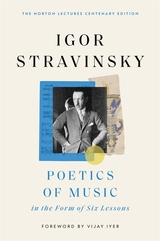 Poetics of Music in the Form of Six Lessons
Igor Stravinsky
Harvard University Press, 2025 Timeless lessons on the pleasures of listening, the dilemmas of composition, and the meaning of artistic freedom from a founder of musical modernism.
In October 1939, Igor Stravinsky took the stage at Harvard not as a conductor but as a speaker. Invited to deliver the prestigious Norton Lectures, he had departed Europe just days after the outbreak of war, leaving behind not only a growing political maelstrom but also his life in France, where his wife, eldest daughter, and mother all had died in the previous year.
Poetics of Music offers a snapshot of this pivotal moment in the composer’s biography and career. Delivered at the height of his neoclassical period, which blended the sculptural precision of classicism with distinctively twentieth-century cadences, Stravinsky’s lectures explore both the creative potential and the constraints of tradition. Though he achieved artistic immortality as a genre-defying experimentalist who scandalized audiences in Belle Époque Paris, the Stravinsky we find here is more circumspect, defending the dignity of formal conventions against the more anarchic currents of modernist experimentation. Tradition, he argues, is not a relic of a bygone past but a living force that animates the present. And true artistic freedom emerges not only in moments of revolutionary inspiration but also through strict deference to the formal requirements of the work.
Like his compositions, Stravinsky’s lectures are ambitious and at times bombastic, punctuated by wit and polemic. Ranging widely from the phenomenology of rhythm to the fate of high culture in the Soviet Union, he invites us to reflect on what it is in music that compels us, whether we are hearing one of his polytonal works or a simple birdsong.
Poetics of Music in the Form of Six Lessons: Bilingual Edition
Igor Stravinsky
Harvard University Press, 1970 One of the greatest of contemporary composers has here set down in delightfully personal fashion his general ideas about music and some accounts of his own experience as a composer. Every concert-goer and lover of music will take keen pleasure in his notes about the essential features of music, the process of musical composition, inspiration, musical types, and musical execution. Throughout the volume are to he found trenchant comments on such subjects as Wagnerism, the operas of Verdi, musical taste, musical snobbery, the influence of political ideas on Russian music under the Soviets, musical improvisation as opposed to musical construction, the nature of melody, and the function of the critic of music. Musical people of every sort will welcome this first presentation in English of an unusually interesting book.
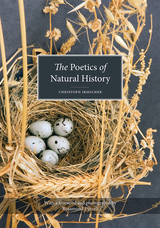 The Poetics of Natural History
Christoph Irmscher
Rutgers University Press, 2019 Winner of the 2000 American Studies Network Prize and the Literature and Language Award from the Association of American Publishers, Inc.
Early American naturalists assembled dazzling collections of native flora and fauna, from John Bartram’s botanical garden in Philadelphia and the artful display of animals in Charles Willson Peale’s museum to P. T. Barnum’s American Museum, infamously characterized by Henry James as “halls of humbug.” Yet physical collections were only one of the myriad ways that these naturalists captured, catalogued, and commemorated America’s rich biodiversity. They also turned to writing and art, from John Edward Holbrook’s forays into the fascinating world of herpetology to John James Audubon’s masterful portraits of American birds.
In this groundbreaking, now classic book, Christoph Irmscher argues that early American natural historians developed a distinctly poetic sensibility that allowed them to imagine themselves as part of, and not apart from, their environment. He also demonstrates what happens to such inclusiveness in the hands of Harvard scientist-turned Amazonian explorer Louis Agassiz, whose racist pseudoscience appalled his student William James.
This expanded, full-color edition of The Poetics of Natural History features a preface and art from award-winning artist Rosamond Purcell and invites the reader to be fully immersed in an era when the boundaries between literature, art, and science became fluid.
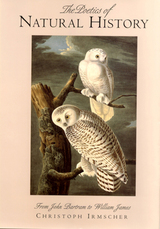 The Poetics of Natural History: From John Bartram to William James
Irmscher, Christoph
Rutgers University Press, 1999
The Poetics of Natural History is about the “daydreams” of early American naturalists (from 1730 to 1868) and the collections they created around these dreams. Christoph Irmscher explores how, through the acts of organizing physical artifacts and reflecting upon their collections through writings and images, naturalists from John Bartram to Louis Agassiz were making sense of themselves and their world. These collections allowed them, in a way, to collect themselves.
In the first part of his book, Irmscher offers us a guided tour of the actual collections, beginning in Bartram’s disorderly botanical garden in Philadelphia and taking us through the artful display of animals in Charles Wilson Peale’s collections and, finally, to the “halls of humbug” of P. T. Barnum’s American Museum. The second part of the book moves away from the collections, and explores natural history words and images. Irmscher unforgettably describes American collectors’ fascination and horror with the American rattlesnake, and invokes the violent and beautiful world of American birds as described in John James Audubon’s paintings and writings. His book ends with a description of Louis Agassiz’s 1865 expedition to Brazil as seen through the eyes of the young William James, who reluctantly gathered Brazilian fish while his mentor assembled “proof” that some human beings were less human than others.
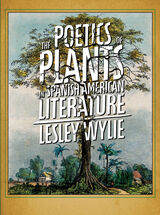 The Poetics of Plants in Spanish American Literature
Lesley Wylie
University of Pittsburgh Press, 2020 The Poetics of Plants in Spanish American Literature examines the defining role of plants in cultural expression across Latin America, particularly in literature. From the colonial georgic to Pablo Neruda’s Canto general, Lesley Wylie’s close study of botanical imagery demonstrates the fundamental role of the natural world and the relationship between people and plants in the region. Plants are also central to literary forms originating in the Americas, such as the New World Baroque, described by Alejo Carpentier as “nacido de árboles.” The book establishes how vegetal imaginaries are key to Spanish American attempts to renovate European forms and traditions as well as to the reconfiguration of the relationship between humans and nonhumans. Such a reconfiguration, which persistently draws on indigenous animist ontologies to blur the boundaries between people and plants, anticipates much contemporary ecological thinking about our responsibility towards nonhuman nature and shows how environmental thinking by way of plants has a long history in Latin American literature.
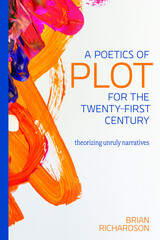 A Poetics of Plot for the Twenty-First Century: Theorizing Unruly Narratives
Brian Richardson
Ohio State University Press, 2019 Story, in the largest sense of the term, is arguably the single most important aspect of narrative. But with the proliferation of antimimetic writing, traditional narrative theory has been inadequate for conceptualizing and theorizing a vast body of innovative narratives. In A Poetics of Plot for the Twenty-First Century: Theorizing Unruly Narratives, Brian Richardson proposes a new model for evaluating literature—returning to the basis of narrative theory to illuminate how authors play with and help clarify the boundaries of narrative theory. While he focuses on late modernist, postmodern, and contemporary narratives, the study also includes many earlier works, spanning from Aristophanes and Shakespeare through James Joyce and Virginia Woolf to Salman Rushdie and Angela Carter.
By exploring fundamental questions about narrative, Richardson provides a detailed, nuanced, and comprehensive theory that includes neglected categories of storytelling and significantly enhances our treatment of traditional areas of analysis. Ultimately, this book promises to transform and expand the study of story and plot.
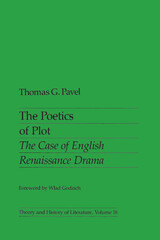 Poetics Of Plot: The Case of English Renaissance Drama
Thomas Pavel
University of Minnesota Press, 1985 Thomas Pavel has written extensively on poetics, linguistics, and narratology. In this book he proposes an original theory and methodology of plot analysis—a reading that draws upon the most fruitful aspects of literary structuralism and upon contemporary linguistic models (specifically generative grammar). Theorists have tended to use formal plot analysis to examine relatively simple literary artifacts, like folk tales and short stories; Pavel, however, applies his model to a group of English Renaissance tragedies and demonstrates that plot analysis can make a major contribution to the understanding of sophisticated literary texts. Pavel leads the reader through step-by-step analyses of increasingly complex plot structures as he explicates Marlowe’s Tamburlaine I, the Jew of Malta, Doctor Faustus and Edward the Second; Kyd’s Spanish Tragedy; The Arden Feversham; and, finally, Shakespeare’s King Lear. He has chosen these plays for their chronological proximity, yet their diversity allows for contrasts and typological considerations. The inclusion of most of Marlowe’s tragedies enables Pavel to gain new insights into a single writer’s strategies of plot construction. The Poetics of Plot moves beyond the establishment and application of a new theory of plot to address broader issues in cultural studies: the role of linguistic models in literary studies, the nature and function of agency in plot advancement and history, the universal features of plot organization, and the relation of plot patterns to period styles and dominant modes of organized knowledge. In his foreword to The Poetics of Plot, Wlad Godzich sketches the historical context in which Pavel’s discussion of plot appears and makes explicit the way that the study of plot challenges both the presuppositions of linguistic analysis and the status of action in philosophical thought.
 The Poetics of Poetry Film: Film Poetry, Videopoetry, Lyric Voice, Reflection
Edited by Sarah Tremlett
Intellect Books, 2020 Set to generate discussions in the field for years to come, The Poetics of Poetry Film is an encyclopedic work on the ever-evolving art of the poetry film. Poetry films are a genre of short film usually involving three main elements: the poem as verbal message, the moving film image and diegetic sounds, and additional non-diegetic sounds or music, which create a soundscape. In this book, Sarah Tremlett examines the formal characteristics of the poetic in poetry film, film poetry, and videopoetry, particularly in relation to lyric voice and time.
Tremlett sets the emergence and history of poetry film in its proper global context, defining and debating terms both philosophically and materially. Showcasing the work of an international array of practitioners, The Poetics of Poetry Film includes interviews, analysis, and a rigorous investigation of the history of the genre, from its origins to the present. This is an industry bible for anyone interested in poetry, digital media, filmmaking, art, and creative writing, as well as poetry filmmakers.
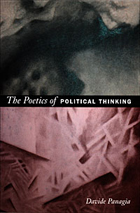 The Poetics of Political Thinking
Davide Panagia
Duke University Press, 2006 In The Poetics of Political Thinking Davide Panagia focuses on the role that aesthetic sensibilities play in theorists’ evaluations of political arguments. Examining works by thinkers from Thomas Hobbes to Jacques Rancière, Panagia shows how each one invokes aesthetic concepts and devices, such as metaphor, mimesis, imagination, beauty, and the sublime. He argues that it is important to recognize and acknowledge these poetic forms of representation because they provide evaluative standards that theorists use in appraising the value of ideas—ideas about justice, politics, and democratic life. An investigation into the intertwined histories of aesthetic and political accounts of representation—such as Panagia presents here—sheds light on how modes of poetic thinking delimit the questions of unity and diversity that continue to animate contemporary political theory. Panagia not only illuminates the structure of much contemporary political theory but also shows why understanding the poetics of political thinking is vital to contemporary society. Drawing on Gilles Deleuze’s critique of negation and his privileging of paradox as the source of political thought, Panagia suggests that a non-teleological concept of difference might generate insight into pressing questions about foreignness and citizenship. Turning to the liberal/poststructural debate that dominates contemporary political theory, he compares John Rawls’s concept of justice to Rancière’s ideas about political disagreement in order to demonstrate how, despite their differences, both thinkers comprehend aesthetic and moral reasoning as part and parcel of political writing. Considering the writings of William Hazlitt and Jürgen Habermas, he describes how the essay has become the exemplary genre of what is considered rational political argument. The Poetics of Political Thinking is a compelling reappraisal of the role of representation within political thought.
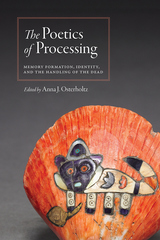 The Poetics of Processing: Memory Formation, Identity, and the Handling of the Dead
Anna J. Osterholtz
University Press of Colorado, 2020 In 2002, Neil Whitehead published Dark Shamans: Kanaimà and the Poetics of Violent Death, in which he applied the concept of poetics to the study of violence and observed the power of violence in the creation and expression of identity and social relationships. The Poetics of Processing applies Whitehead’s theory on violence to mortuary and skeletal assemblages in the Andes, Mexico, the US Southwest, Jordan, Ethiopia, Egypt, and Turkey, examining the complex cultural meanings of the manipulation of remains after death.
The contributors interpret postmortem treatment of the physical body through a poetics lens, examining body processing as a mechanism for the re-creation of cosmological events and processing’s role in the creation of social memory. They analyze methods of processing and the ways in which the living use the physical body to stratify society and gain power, as evidenced in rituals of body preparation and burial around the world, objects buried with the dead and the hierarchies of tomb occupancy, the dissection of cadavers by medical students, the appropriation of living spaces once occupied by the dead, and the varying treatments of the remains of social outsiders, prisoners of war, and executed persons.
The Poetics of Processing combines social theory and bioarchaeology to examine how the living manipulate the bodies of the dead for social purposes. These case studies—ranging from prehistoric to historic and modern and from around the globe—explore this complex material relationship that does not cease with physical death. This volume will be of interest to mortuary archaeologists, bioarchaeologists, and cultural anthropologists.
Contributors:
Dil Singh Basanti, Roselyn Campbell, Carlina de la Cova, Eric Haanstad, Scott Haddow, Christina Hodge, Christopher Knusel, Kristin Kuckelman, Clark Spencer Larsen, Debra Martin, Kenneth Nystrom, Adrianne Offenbecker, Megan Perry, Marin Pilloud, Beth K. Scaffidi, Mehmet Somel, Kyle D. Waller
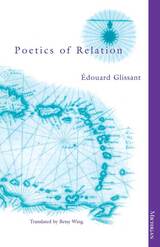 Poetics of Relation
Édouard Glissant
University of Michigan Press, 1997 Édouard Glissant, long recognized in the French and francophone world as one of the greatest writers and thinkers of our times, is increasingly attracting attention from English-speaking readers. Born in Martinique in 1928, Glissant earned a doctorate from the Sorbonne. When he returned to his native land in the mid-sixties, his writing began to focus on the idea of a "relational poetics," which laid the groundwork for the "créolité" movement, fueled by the understanding that Caribbean culture and identity are the positive products of a complex and multiple set of local historical circumstances. Some of the metaphors of local identity Glissant favored--the hinterland (or lack of it), the maroon (or runaway slave), the creole language--proved lasting and influential.
In Poetics of Relation, Glissant turns the concrete particulars of Caribbean reality into a complex, energetic vision of a world in transformation. He sees the Antilles as enduring suffering imposed by history, yet as a place whose unique interactions will one day produce an emerging global consensus. Arguing that the writer alone can tap the unconscious of a people and apprehend its multiform culture to provide forms of memory capable of transcending "nonhistory," Glissant defines his "poetics of relation"--both aesthetic and political--as a transformative mode of history, capable of enunciating and making concrete a French-Caribbean reality with a self-defined past and future. Glissant's notions of identity as constructed in relation and not in isolation are germane not only to discussions of Caribbean creolization but also to our understanding of U.S. multiculturalism. In Glissant's view, we come to see that relation in all its senses--telling, listening, connecting, and the parallel consciousness of self and surroundings--is the key to transforming mentalities and reshaping societies.
This translation of Glissant's work preserves the resonating quality of his prose and makes the richness and ambiguities of his voice accessible to readers in English.
"The most important theoretician from the Caribbean writing today. . . . He is central not only to the burgeoning field of Caribbean studies, but also to the newly flourishing literary scene in the French West Indies." --Judith Graves Miller, University of Wisconsin, Madison
Édouard Glissant is Distinguished Professor of French at City University of New York, Graduate Center. Betsy Wing's recent translations include Lucie Aubrac's Outwitting the Gestapo (with Konrad Bieber), Didier Eribon's Michel Foucault and Hélêne Cixous's The Book of Promethea.
 Poetics of Repair: Contemporary Arts and Afterlives of Colonial-Era Mass Housing in the Maghreb
Katarzyna Pieprzak
Duke University Press, 2025 Today, most colonial-era modernist mass housing is seen as fundamentally broken: crumbling concrete spaces of social alienation and containment that fractured societies both then and now. In Poetics of Repair, Katarzyna Pieprzak examines how contemporary visual, literary, and performance art of the Maghreb has the potential to change the terms, histories, and imagined futures of mass housing in North Africa and France. Pieprzak dives deeply into contemporary art engagements with three mass housing sites that epitomize the French colonial geography of modernist architecture in the Maghreb. She identifies in this art what she names a transformative “poetics of repair”: a practice that conjoins, puts in relation, or simply brings closer together broken materials, separated people, and severed timelines. Reading art and its engagements with mass housing, Pieprzak argues, has the potential to unmoor established knowledge and rehearse the tensions and productive ambiguities inherent to practices of constitution and revision. She demonstrates that such a reading practice is a step toward a reparative epistemology for mass housing that turns sites of wreckage and alienation into sites of possible solidarities and new formulations of history and experience.
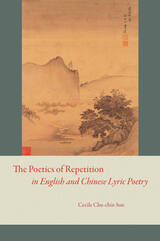 The Poetics of Repetition in English and Chinese Lyric Poetry
Cecile Chu-chin Sun
University of Chicago Press, 2010 For more than half a century, Chinese-Western comparative literature has been recognized as a formal academic discipline, but critics and scholars in the field have done little to develop a viable, common basis for comparison between these disparate literatures. In this pioneering book, Cecile Chu-chin Sun establishes repetition as the ideal perspective from which to compare the poetry and poetics from these two traditions.
Sun contends that repetition is at the heart of all that defines the lyric as a unique art form and, by closely examining its use in Chinese and Western poetry, she demonstrates howone can identify important points of convergence and divergence. Through a representative sampling of poems from both traditions, she illustrates how the irreducible generic nature of the lyric transcends linguistic and cultural barriers but also reveals the fundamental distinctions between the traditions. Most crucially, she dissects the two radically different conceptualizations of reality—mimesis and xing—that serve as underlying principles for the poetic practices of each tradition.
Skillfully integrating theory and practice, The Poetics of Repetition in English and Chinese Lyric Poetryprovides a much-needed model for future study of Chinese and English poetry as well as lucid, succinct interpretations of individual poems.
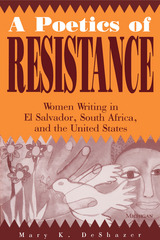 A Poetics of Resistance: Women Writing in El Salvador, South Africa, and the United States
Mary DeShazer
University of Michigan Press, 1994 The recent critical works that look at literature as a weapon of resistance have frequently neglected the genre of poetry, particularly the poetry of Third World women writers. A Poetics of Resistance is the first book-length examination of poetry written by woman of El Salvador, South Africa, and the United States and the ways it bears witness to political struggle and produces new kinds of knowledge.
Engaging the works of critics such as Chandra Mohanty, Barbara Harlow, Claribel Alegria, Albie Sachs, and Audre Lorde, among others, Mary DeShazer reconceptualizes traditional notions of resistance and literature and the relationship between them. She argues that women’s voices have been underrepresented in previous analyses of Third World resistance poetry, and that when examined collectively, their work reveals overtly gendered concerns that distinguish it from that of their male counterparts.
DeShazer defines resistance as an active quest for justice and a means of collective empowerment. She looks at the diasporic consciousness of exiled and dislocated women, examines the tensions between claims of identity and claims of difference, and explores the ways in which gender and struggle connect women across nationalities and historical imperatives. Her analysis of Salvadoran and South African women’s poetry reveal the ways in which poetic conventions can be seen as “political declarations of privilege,” casting a new light on women’s resistance poetry in the United States.
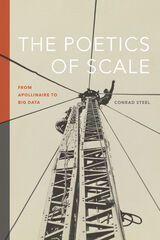 The Poetics of Scale: From Apollinaire to Big Data
Conrad Steel
University of Iowa Press, 2024 Since the start of the twentieth century, poets have been irresistibly drawn to the image of the poem as a kind of data-handling, a way of mediating between the divergent scales of aesthetics and infrastructure, language and technology. Conrad Steel shows how the history of poetry—with its particular formal affordances, and the particular hopes and fears we invest it with—has always been bound up with our changing logistics of macroscale representation.
The Poetics of Scale takes us back to the years before the First World War in Paris, where the poet Guillaume Apollinaire claimed to have invented a new mode of poetry large enough to take on the challenges of the coming twentieth century. This history follows Apollinaire’s ideas across the Atlantic and examines how and why his work became such a vital source of inspiration for American poets through the era of intensive American economic expansion and up to the present day. Threading together Apollinaire’s work in the 1910s with three of his American successors—Louis Zukofsky in the 1930s, Allen Ginsberg in the 1950s, and Alice Notley from the 1970s onward—it shows how poetry as a cultural technique became the crucial test case for the scale of our collective imagination.
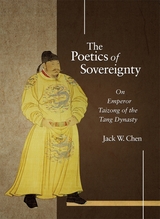 The Poetics of Sovereignty: On Emperor Taizong of the Tang Dynasty
Jack W. Chen
Harvard University Press, 2010 Emperor Taizong (r. 626–49) of the Tang is remembered as an exemplary ruler. This study addresses that aura of virtuous sovereignty and Taizong’s construction of a reputation for moral rulership through his own literary writings—with particular attention to his poetry. The author highlights the relationship between historiography and the literary and rhetorical strategies of sovereignty, contending that, for Taizong, and for the concept of sovereignty in general, politics is inextricable from cultural production.
The work focuses on Taizong’s literary writings that speak directly to the relationship between cultural form and sovereign power, as well as on the question of how the Tang negotiated dynastic identity through literary stylistics. The author maintains that Taizong’s writings may have been self-serving at times, representing strategic attempts to control his self-image in the eyes of his court and empire, but that they also become the ideal image to which his self was normatively bound. This is the paradox at the heart of imperial authorship: Taizong was simultaneously the author of his representation and was authored by his representation; he was both subject and object of his writings.
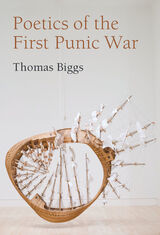 Poetics of the First Punic War
Thomas Biggs
University of Michigan Press, 2020 Poetics of the First Punic War investigates the literary afterlives of Rome’s first conflict with Carthage. From its original role in the Middle Republic as the narrative proving ground for epic’s development out of verse historiography, to its striking cultural reuse during the Augustan and Flavian periods, the First Punic War (264–241 BCE) holds an underappreciated place in the history of Latin literature. Because of the serendipitous meeting of historical content and poetic form in the third century BCE, a textualized First Punic War went on to shape the Latin language and its literary genres, the practices and politics of remembering war, popular visions of Rome as a cultural capital, and numerous influential conceptions of Punic North Africa. Poetics of the First Punic War combines innovative theoretical approaches with advances in the philological analysis of Latin literature to reassess the various “texts” of the First Punic War, including those composed by Vergil, Propertius, Horace, and Silius Italicus. This book also contains sustained treatment of Naevius’ fragmentary Bellum Punicum (Punic War) and Livius Andronicus’ Odusia (Odyssey), some of the earliest works of Latin poetry. As the tradition’s primary Roman topic, the First Punic War is forever bound to these poems, which played a decisive role in transmitting an epic view of history.
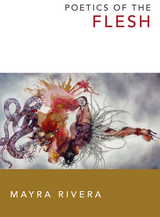 Poetics of the Flesh
Mayra Rivera
Duke University Press, 2015 In Poetics of the Flesh Mayra Rivera offers poetic reflections on how we understand our carnal relationship to the world, at once spiritual, organic, and social. She connects conversations about corporeality in theology, political theory, and continental philosophy to show the relationship between the ways ancient Christian thinkers and modern Western philosophers conceive of the "body" and "flesh.” Her readings of the biblical writings of John and Paul as well as the work of Tertullian illustrate how Christian ideas of flesh influenced the works of Maurice Merleau-Ponty and Michel Foucault, and inform her readings of Judith Butler, Frantz Fanon, and others. Rivera also furthers developments in new materialism by exploring the intersections among bodies, material elements, social arrangements, and discourses through body and flesh. By painting a complex picture of bodies, and by developing an account of how the social materializes in flesh, Rivera provides a new way to understand gender and race.
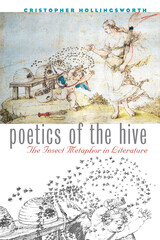 Poetics of the Hive: Insect Metaphor in Literature
Cristopher Hollingsworth
University of Iowa Press, 2001
"Cris Hollingsworth's waggle dance after scouting the rangiest field of literature--Virgil and Homer down to Milton and Swift, on to Plath and Byatt&#$151;leads you to where the nectar hides. . . . He wisely roams, extracting an anthology of poetry, prose, psychology, history&151;most of all, perception--that tops the bee's knees." --Paul West, author of The Secret Life of Words
"Hollingsworth's wide-ranging exploration of the image of the hive is impressive. Poetics of the Hive and its panoply of references cannot fail to enrich university classrooms, especially those devoted to both the visual arts and literature." --Dore Ashton, author of A Fable of Modern Art
"Cris Hollingsworth's Poetics of the Hive . . . is complex, even daring in argument; I'm even more impressed by [his] skill at an increasingly rare critical art, the educing of argument from careful, often brilliant analytical reading of literary texts." --Thomas R. Edwards, executive editor of Raritan: A Quarterly Review
A study to delight the passionate reader, Poetics of the Hive tells the story of the evolution of the insect metaphor from antiquity to the multicultural present. An experiment in the &147;evolutionary biology&148; of artistic form, Poetics of the Hive freshly examines classic works of literature, offering a view of poetic creation that complicates our ideas of the past and its formative role in modern consciousness and world literature.
In the first part of this lyrical synthesis of rhetoric, visual and postmodern theory, and cognitive science, Cristopher Hollingsworth reveals the structure behind his metaphor, redefining it as an aesthetically and philosophically potent tableau that he calls the Hive. He traces the Hive's evolution in epic poetry from Homer to Milton, which establishes antithetical but complementary images of angelic and demonic bees that Swift, Mandeville, and Keats use variously to debate classical versus emerging ideas of the individual's relationship to society. But the Hive becomes fully psychologized, Hollingsworth argues, only when its use by Conrad and Wells to explore Europe's colonial imagination of the Other is transformed by Kafka and Sartre into competing symbols of the modern self's existential condition.
Cristopher Hollingsworth is an assistant professor of English at St. John's University, Staten Island.
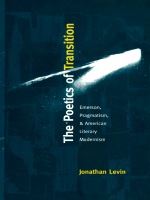 The Poetics of Transition: Emerson, Pragmatism, and American Literary Modernism
Jonathan Levin
Duke University Press, 1999 The Poetics of Transition examines the connection between American pragmatism and literary modernism by focusing on the concept of transition as a theme common to both movements. Jonathan Levin begins with the Emersonian notion that transition—the movement from one state or condition to another or, alternately, the figural enactment of that movement—is infused with power. He then offers a revisionary reading of the pragmatists’ view of the permeability of subjective and objective realms and of how American literary modernists stage this permeability in the language and form of their writing. Levin draws on the pragmatist and neopragmatist writings of William James, John Dewey, George Santayana, Richard Rorty, and Cornel West to illuminate the work of modernist literature. In turn, he illuminates the poetic imperatives of pragmatism by tracing the ways in which Henry James, Gertrude Stein, and Wallace Stevens capture the moment of transition—a paradoxical moment that, once it is represented in language or art, requires its own perpetual overcoming. Throughout, he explores how modernist writers, who are masters at recording such “illegible” moments of transition in their poetry and prose, significantly contribute to an expanded understanding of pragmatism and its underlying aesthetics. By linking Emerson with the progressive philosophy of turn-of-the-century pragmatism and the experimentation of American literary modernism, Levin offers new insight into Emerson’s lasting influence on later American philosophers, novelists, and poets. The Poetics of Transition will interest scholars and students in the fields of literary criticism, neopragmatism, literary modernism, and American literature.
A Poetics of Trauma: The Work of Dahlia Ravikovitch
Ilana Szobel
Brandeis University Press, 2013 The work of the renowned Israeli poet, translator, peace activist, and 1998 Israel Prize laureate Dahlia Ravikovitch (1936–2005) portrays the emotional structure of a traumatized and victimized female character. Ilana Szobel’s book, the first full-length study of Ravikovitch in English, offers a theoretical discussion of the poetics of trauma and the politics of victimhood, as well as a rethinking of the notions of activity and passivity, strength and weakness. Analyzing the deep structure embodied in Ravikovitch’s work, Szobel unearths the interconnectedness of Ravikovitch’s private-poetic subjectivity and Israeli national identity, and shows how her unique poetics can help readers overcome cultural biases and sympathetically engage otherness.
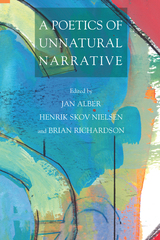 A Poetics of Unnatural Narrative
Edited by Jan Alber, Henrik Skov Nielsen, and Brian Richardson
Ohio State University Press, 2013
A Poetics of Unnatural Narrative offers a collection of foundational essays introducing the reader to the full scope of unnatural narrative theory: its meaning, its goals, its extent, its paradoxes. This volume brings together a distinguished group of international critics, scholars, and historians that includes several of the world’s leading narrative theorists. Together, they survey many basic areas of narrative studies from an unnatural perspective: story, time, space, voice, minds, narrative levels, “realism,” nonfiction, hyperfiction, and narrative poetry. Rarely have these fundamental concepts been subjected to such an original and thoroughgoing reconceptualization. Much of the book is directed toward an investigation of experimental and antirealist work. Each essay focuses on texts and episodes that narrative theory has tended to neglect, and each provides theoretical formulations that are commensurate with such exceptional, albeit neglected, works. A Poetics of Unnatural Narrative articulates and delineates the newest and most radical movement in narrative studies. This anthology will be of great interest to students and scholars of narrative studies and of the history and theory of modern fiction.
The Poetics of Unremembered Acts: Reading, Lyric, Pedagogy
Brian McGrath
Northwestern University Press, 2012 Poems—specifically romantic poems, such as those by Thomas Gray, William Wordsworth, and John Keats—link what goes unremembered in our reading to ethics. In "Tintern Abbey," for example, Wordsworth finds in "little . . . unremembered . . . acts" the chance to hear the "still, sad music of humanity."In The Poetics of Unremembered Acts, Brian McGrath shows that poetry’s capacity to address its reader stages an ethical dilemma of continued importance. Situating romantic poems in relation to Enlightenment debate over how to teach reading, specifically debate about the role of poetry in the process of learning to read, The Poetics of Unremembered Acts develops an alternative understanding of poetry’s role in education. McGrath also explores the ways poetry makes ethics possible through its capacity to pass along what we do not remember and cannot know about our reading.
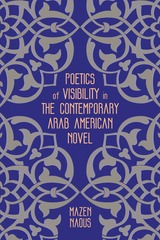 Poetics of Visibility in the Contemporary Arab American Novel
Mazen Naous
Ohio State University Press, 2020 How might art disrupt Arabophobia and Islamophobia in the US? In Poetics of Visibility in the Contemporary Arab American Novel, Mazen Naous argues that fiction is one of the ways in which Arab Americans can correct dominant narratives of themselves with representation of their lived realities. Looking at both the aesthetics and politics in contemporary Arab American novels, Naous demonstrates that the novels’ poetics cannot be extricated from or subsumed under political content. In his finely textured analyses of form and style, Naous uncovers crucial transcultural and transpoetic solidarities that extend beyond the politics of representation.
Naous’s book offers analyses of Diana Abu-Jaber’s Arabian Jazz and Crescent, Rabih Alameddine’s Koolaids: The Art of War, Laila Halaby’s Once in a Promised Land, and Mohja Kahf’s The Girl in the Tangerine Scarf as ways to answer this question. Naous explores how these novels negotiate queer desire, music, Western and Middle Eastern art, gender, and relationships between other minorities. These poetics enable readers to see the nuance and richness of Arab American experience. Naous ultimately argues that fiction creates crucial spaces for reimagining and redefining intercultural relationships.
 The Poetics of Yves Bonnefoy
John Naughton
University of Chicago Press, 1984 Yves Bonnefoy is the most important and influential French poet to have emerged since the Second World War. Poet, art critic, historian, translator (particularly of Shakespeare), specialist in the problem of the relation of poetry to the visual arts and to the history of religions, Bonnefoy is now considered one of the most distinguished men of letters of his generation.
Though Bonnefoy's work is familiar to American scholars, the complexity of his thought and style has created a need for a critical introduction to his work. This first major study of Bonnefoy written in English provides an overview of his entire literary career. Naughton situates Bonnefoy in the context of the existential philosophical tradition that nurtured him and in the poetic and artistic tradition that includes Dante and Shakespeare, Piero and Poussin, Baudelaire and Rimbaud. Bonnefoy's poems appear in both French and English, and all quotations from his prose have been translated.
This book will appeal not only to the growing number of students and scholars of French literature interested in Bonnefoy's work, but also to those who study comparative poetry and the relation of poetry to art and to contemporary religious thought.
The Poet-Physician: Keats and Medical Science
Donald C. Goellnicht
University of Pittsburgh Press, 1984
For six years of his brief like, Keats studied medicine, first as an apprentice in Edmonton and then as a medical student at Guy’s Hospital in London. His biographers have generally glossed over this period of his life, and critics have ignored it and denied the influence of medical training on his poetry and thought.
In this challenging reappraisal, Goellnicht argues that Keats’ writings reveal a distinct influence of science and medicine. Goellnicht researches Keats’ course work and texts to reconstruct the milieu of the early nineteenth-century medical student. He then explores the scientific resonances in Keats’’ individual works, and convincingly shows the influence of his early medical training.
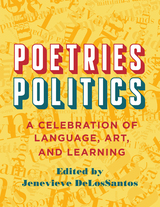 Poetries - Politics: A Celebration of Language, Art, and Learning
Jenevieve DeLosSantos
Rutgers University Press, 2023 Poetries – Politics: A Celebration of Language, Art, and Learning celebrates the best of innovative humanities pedagogy and creative graphic design. Designed and implemented during a time of political divisiveness, the Poetries – Politics project created a space of inviting, multilingual walls on the Rutgers campus, celebrating diversity, community, and cross-cultural exchange. This book, like the original project, provides a platform for the incredible generative power of student-led work. Essays feature the perspectives of three students and professors originally involved in the project, reflecting on their learning and exploring the works they selected for the original exhibition. The essays lead to a beautifully illustrated catalogue of the original student designs.
Reproduced in full color and with the accompanying poems in both their original language and a translation, this catalogue commemorates the incredible creative spirit of the project and provides a new way of contemplating these great poetic works.
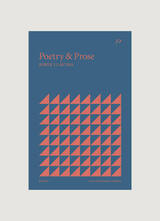 Poetry & Prose
Jordi Llavina, Translated by William Hamilton
Fum d'Estampa Press, 2020 Poetry & Prose is the first time Jordi Llavina’s work has been translated into English and published. The book is a collection of two of his most important and popular pieces of work: The Hermitage and The Pomegranate. In both, Jordi Llavina evokes the sights, sounds and smells of the Mediterranean landscape while weaving together themes of singular poetic beauty.
The Hermitage, a long poem of more than 1400 lines, tells of the author’s physical and metaphysical journey up a hill in southern Catalonia to visit a hermitage. Llavina touches on many themes in this poem, including love, death, family, loss, hope and memories. In 2019, Jordi Llavina was awarded the prestigious Lletra d’Or prize for this poem.
The second piece of work in the collection is The Pomegranate. Again written about a journey, The Pomegranate is a mix of both poetry and prose and tells the story of a grieving wanderer through the Catalan countryside.
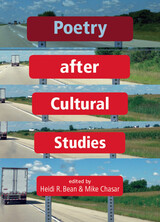 Poetry after Cultural Studies
Heidi R. Bean
University of Iowa Press, 2011 Poetry after Cultural Studies elucidates the potential of poetry scholarship when joined with cultural studies. In eight searching essays covering an astonishing range of poetic practices, geographical regions, and methodological approaches, this volume reflects on what poetry can accomplish in the broadest social and cultural contexts. From Depression-era Iowa to the postcolonial landscape of French-speaking Martinique, whether appearing in newspapers, correspondences, birders’ field guides, cross-stitches, or television and the internet, the poetry under consideration here is rarely a private, lyrical endeavor. For a great number of people writing, reading, publishing, and using poetry over the past 150 years, verse has not been a retreat from modern life, but a way of engaging with, and even changing, it. Whether the subject is post cards, talk shows, or verse from places as different as academia and MySpace, as cultural production and as literary trickery, the material examined in this volume demonstrates the central role of poetry as an active cultural presence. By bringing together cultural studies, poetics, and formalist reading without antagonism, Poetry after Cultural Studies looks toward a poetry criticism that does not merely “do” cultural studies but, rather, employs the resources of that discipline to examine an increasingly legible and audible record of poetic practice. Exploring a wide range of poetry from the nineteenth century to the present, Poetryafter Cultural Studies showcases the unexpectedly rich intersection of cultural studies theory and current poetry scholarship. These essays show forcefully that cultural studies and poetics—once thought incommensurable—in fact are mutually informative and richer for the effort.
|
|
